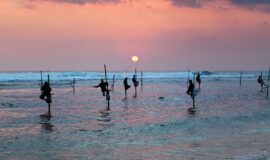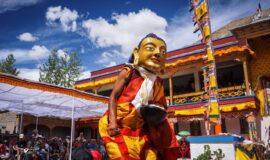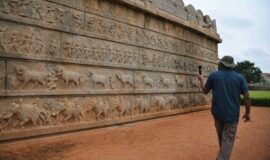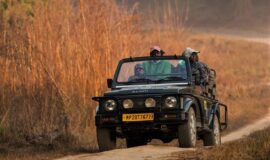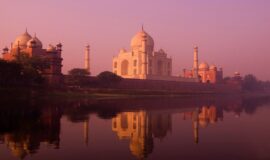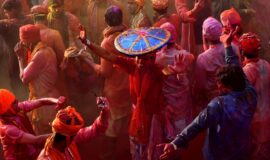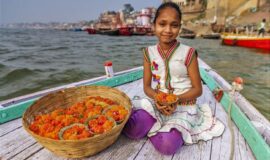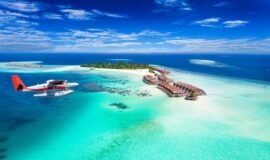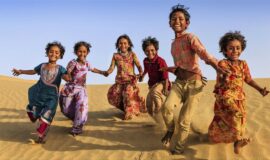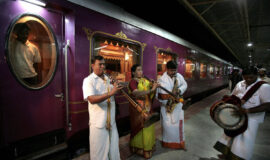KOLKATA – A celebration of life
The Raj
City of Palaces
The Clay District
The Banks of the Hooghly
Durga Puja
College Street
The Maidan & The Victoria Memorial
BBD Bagh
South Kolkata
Shrines
Culinary Kolkata
Where to Shop
The Kolkata Few Tourists Know
FACT SHEET
GETTING TO KOLKATA
Some Images From Our Trip To Kolkata
The Raj
The rise of Kolkata – or Calcutta, as it was known until its official renaming in the 1990’s – to prominence is the result of one man’s insistence that Sutanti – one of three villages that made of Calcutta near the end of the 17th century (the other two villages were Gobindapur and Kalkatta) – was the perfect place for a headquarters for the British East India Company. That man was Job Charnock, administrator of the company, and he considered the location an ideal one because the Hooghly river to the west, a creek to the north, and salt lakes to the east offered the site natural fortification. The Hooghly’s mouth on the Bay of Bengal also provided deep-water anchorage. The company agreed, and the city was born on August 24, 1690. It quickly grew and flourished over the next decades until it finally became the capital of British India in 1772.
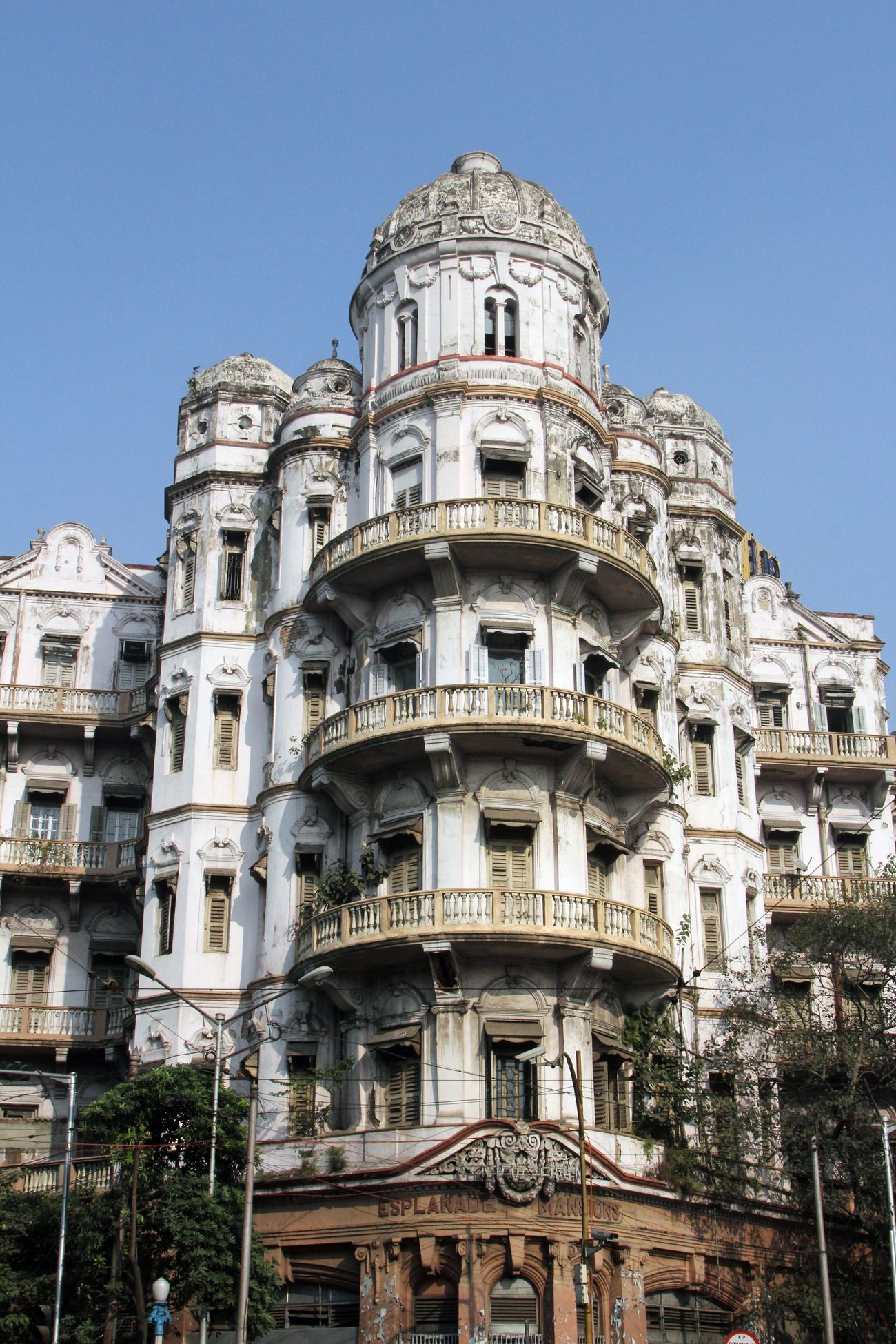
The facade of the illustrious Esplanade Mansion, constructed during the colonial era, in Kolkata, West Bengal © Zvonimir Atletic
City of Palaces
The man largely responsible for the city’s development was Richard Wellesley, the British Governor-General 1797—1805. During his term, the city’s public architecture became so magnificent that Kolkata came to be known as the ‘City of Palaces’. Kolkata was home to spectacular monuments of architecture, and the city’s wealthy inhabitants built impressive mansions in a wide variety of styles that one can still see there. Visitors can find Gothic, Baroque, Roman, Oriental, and Indo-Islamic motifs often mixed in unique combinations. Today, most of them can still be seen in North Kolkata, a collection of neighborhoods vibrant with rickshaws and taxi traffic that snakes its way through the area’s maze of narrow streets. This area used to be the focus of the city’s rich, who competed with each other in their spectacular lifestyles and the magnificent houses that gave Kolkata its nickname.
The Marble Palace is perhaps one of the finest examples of Kolkata’s grand architecture. It is built in a style very reminiscent of London’s Burlington House. This structure, constructed in the European classical style, comes as a surprise to anyone approaching it along a rather unimpressive lane. Suddenly, there stands a magnificent white façade, guarded by gates and guards armed with spears. It provides a marked contrast to the area’s chaotic hustle and bustle. The palace owes its name to the more than 90 varieties of imported marble used in construction. Its gardens are in the Baroque style, complete with elaborate stone seats, fountains, and statues. Remarkable examples of art and luxury objects are on display in its spacious rooms and colonnades including Dresden figurines, Bohemian goblets, Venetian mirrors, and a large number of valuable paintings – one of which is an actual Rubens.
Close by is the historic home of the Tagore family, perhaps most famous for Asia’s first Nobel Prize Winner, Rabindranath Tagore. The Jorasanko Thakurakur Bari served as a home of artistic inspiration for the creative thinkers of the Bengal Renaissance in the 19th century. Although not especially remarkable for its architecture, the house is a national icon of the people who lived there and their cultural legacy.
North Kolkata contains many more houses of historic and cultural significance. Nestled among the area’s crowded and winding lanes are the magnificent houses of the Laha family, the Dutta’s of Thanthania and Hatkhola, and the Shobhabazar Rajbari. Intricately decorated, arched gateways open onto large courtyards surrounded by richly styled balconies. Exteriors and interiors exhibit an eclectic mix of English glass, Venetian crystal chandeliers, and French doors set in a framework of Mughal artistic themes.
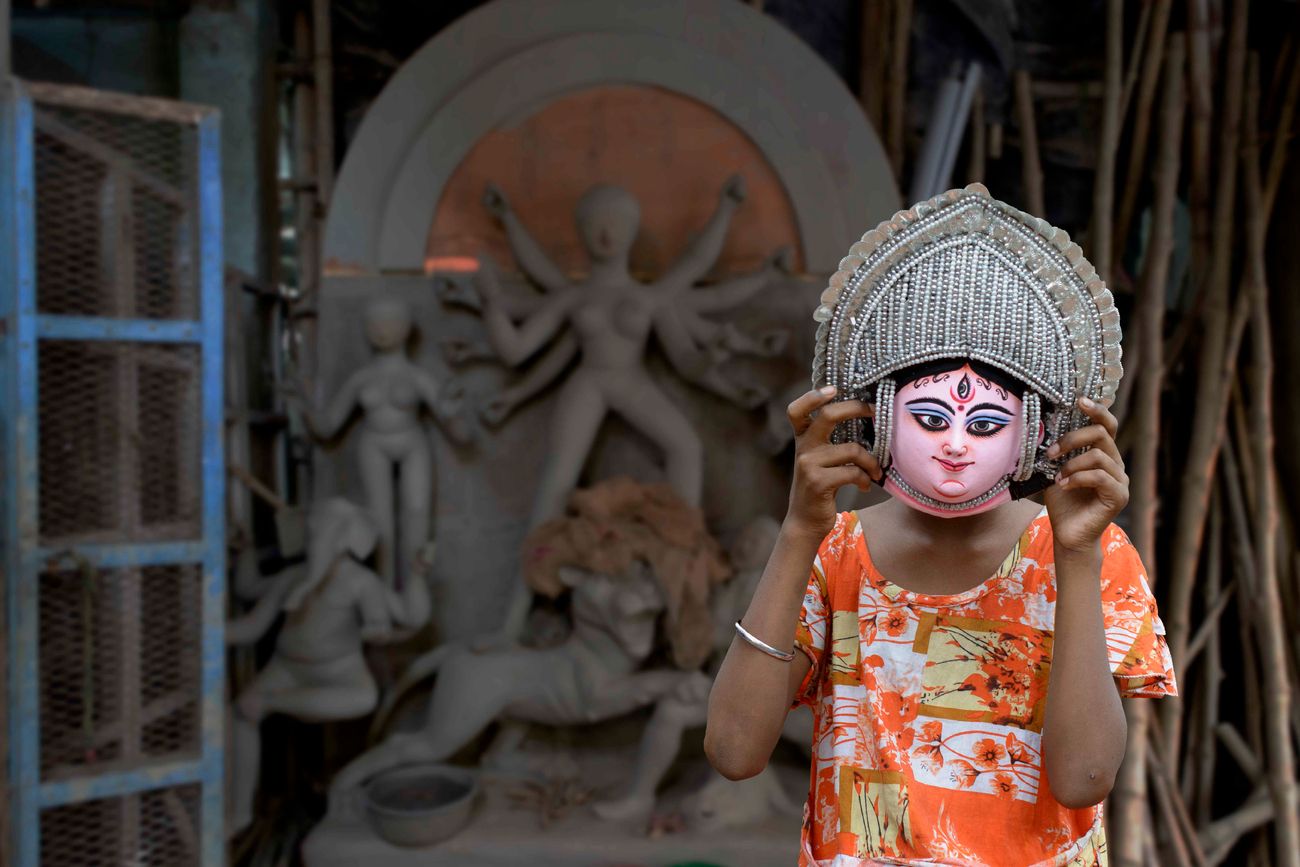
girl child stands posing with a paper mask of Goddess Durga from Purulia at the potter’s district in Kumortuli, North Kolkata. Kumaratuli, in north Kolkata, along the Hooghly river, is home to the city’s famed clay idol-makers. While traditionally these artisans made idols only during the various pujas. most notably the Durga Puja, these days, many of them also work on sculptures for movie sets © Kakoli Dey
The Clay District
If you are in Kolkata in August and September, you simply cannot forgo exploring the labyrinth of alleys branching off the Chitpore Road. Sculptor studios there, especially along Banamali Sarkar Street, are constantly working on a plethora of sculpted, clay deities and demons in different stages of completion. The Kumartuli district is literally home to Kolkata’s renowned makers of the idols for the city’s famous Durga Puja festival. Their workshops are typically small and ill-lit, cluttered with cloth strips, piles of straw, cardboard, glue bottles, and paint containers. Their busiest season is from August to October when they are feverishly fashioning idols by adding layers of clay onto frameworks of straw before finally painting on the features for the various deities. These works of art are meant to be displayed or carried during the Durga and Kali Pujas. The craftsmen are friendly and welcoming. Visitors can take pictures and observe the artists as they work. Gods and demons are not their only subjects. They also produce, among other things, life-sized figures of famous historical persons that are also often used to decorate Puja pandals.
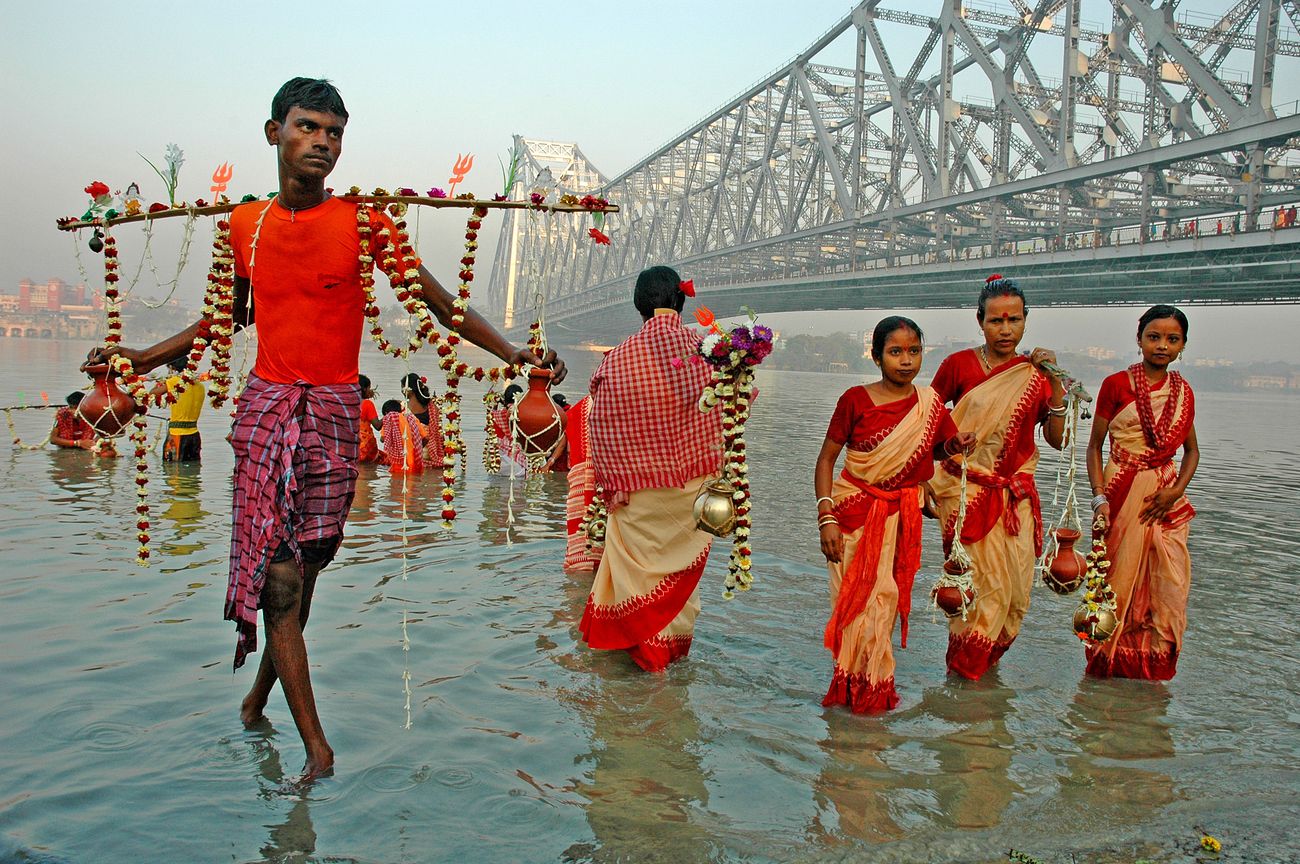
A group of devotees collecting the holy water from River Hoogly in Kolkata for offering to Lord Shiva © Samrat35
The Banks of the Hooghly
Calcuttans love to spend evenings relaxing on the banks of the Hooghly river. Weekends are especially popular. A walk down the tree-lined promenade provides marvelous views of the river, its historic bridges, and the boats plowing up and down the peaceful river. Ghats line the riverbanks, and the most popular ghat of all is the impressive Prinsep Ghat. There you can sit on its porch amidst peaceful greenery and enjoy the view of the Vidyasagar Setu (bridge).
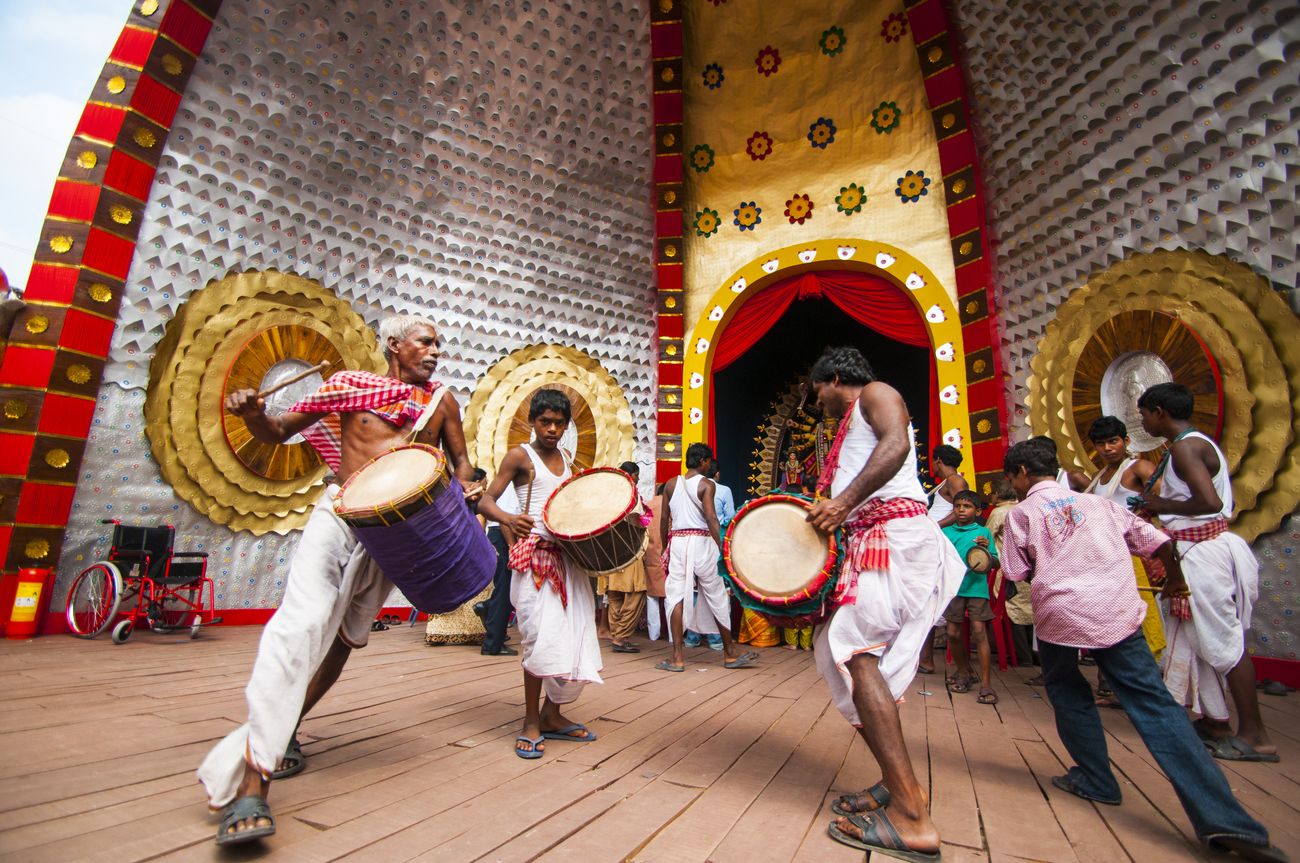
A group of Dhaakis playing dhak, a traditional musical instrument, at a Durga Puja Pandal in Kolkata, West Bengal © CRS PHOTO
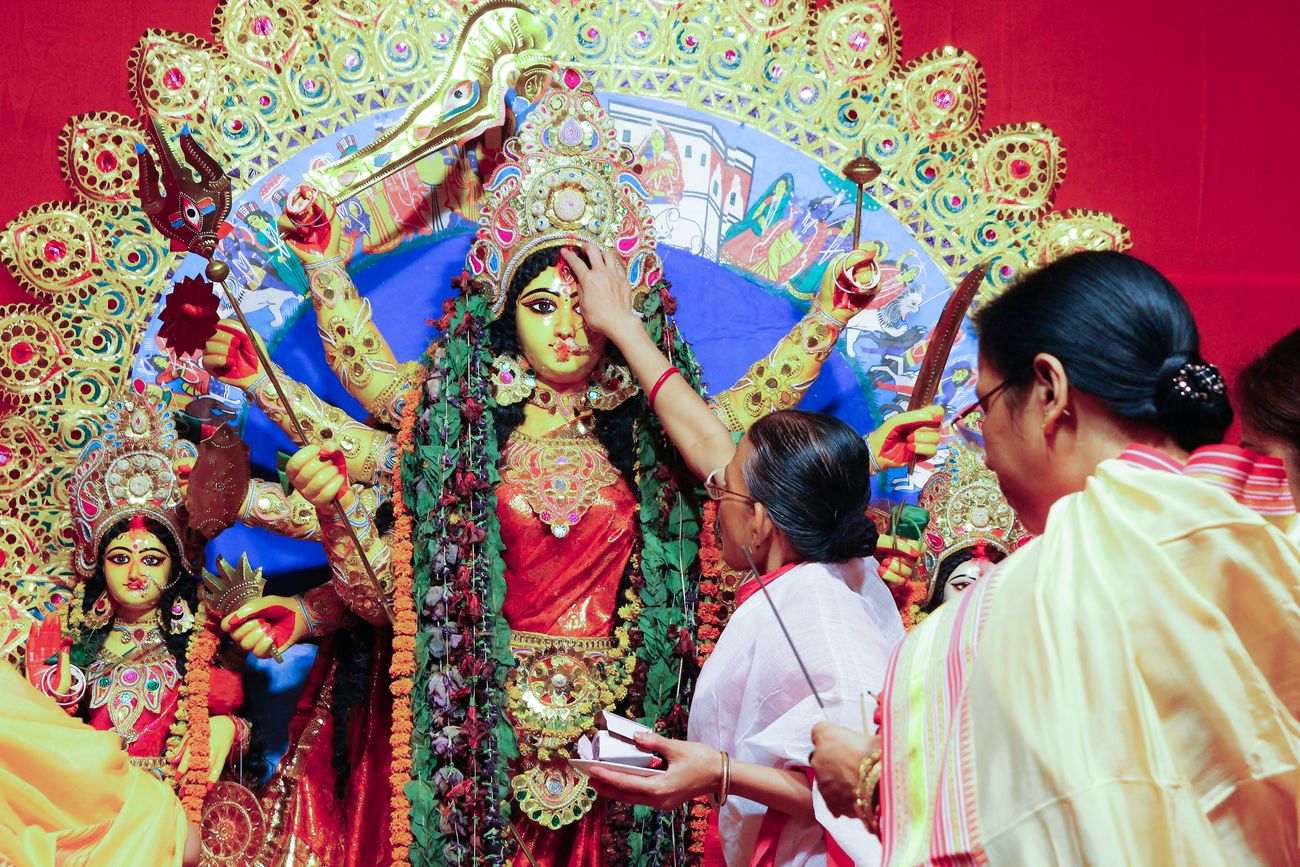
Bengali women welcome the idol of Goddess Durga with betel leaves and sweets © The Teaching Doc
Durga Puja
Kolkata transforms into a place of wonder and magic when October arrives because it is time for the Durga Puja, a religious festival that encompasses so much more. Everyone looks forward to this celebration and engages in feverish preparations – rich and poor, humble, and famous. The city is transformed into an open-air exhibition of art and culture. Unbelievably imposing pandals (temporary structures that house Ma Durga and her children during the five-day celebration) made of various materials sprout up all over the city and embody the festival’s artistic spirit
In contrast to the vivacity and ostentation of the neighborhood celebrations, old, prominent families (‘Bonedi Bari’ in Bengali) place emphasis on the old rites and traditions. There one can see displays of iconography and offerings in the ‘Thakur Dalan’ or ‘Durga Dalan’ (corridor of worship). The Bonedi Baris – about 150 in number, also are occasions for families and friends to gather. A large number of them welcome visitors, nevertheless, affording them an opportunity to get a look at the traditional side of the puja.
The festivities reach their high point on its last day —Vijaya Dashami. Spectacular processions head to the Ganges river in order to bathe the divine idols in its sacred waters. It is preceded by an especially touching ritual in which women use their hands to cover the face of the Goddess Durga in red vermillion powder while they whisper their farewells and pray for Durga’s return the following year.
The iconic, ever-busy and popular Indian Coffee House in Kolkata that has welcomed fanatics for over seventy years © Mazur Travel
College Street
Kolkata’s historic College Street is easy to reach by Metro. Just get off at the Mahatma Gandhi Road station, walk down that street for about five minutes, then turn left, and you will find yourself in India’s largest books market.
College Street is lined by hundreds of used book stands, among them are those run by some of India’s oldest and best institutes of learning, including – only to name a few examples – Presidency College, the University of Calcutta, and Calcutta Medical College. These schools started offering their books along this street early in the 19th century. Today, College Street serves as a gathering place for both serious academics and just plain bibliophiles.
There is so much on offer there, that College Street is also known as Boi Para — “The Book Town”.
Some people say that if you cannot find a particular book there, you won’t find it anywhere! And the prices are sometimes unbelievably low – even for rare books – but the visitor should be prepared to bargain.
The Indian Coffee House can be found on one of the avenue’s side streets. It has been a gathering place for some of the world’s most renowned intellects for over 70 years and is a must to visit. Gunther Grass was a regular there during the 1980s. Allen Ginsberg and Jack Kerouac spent afternoons there in the summer of 1962 arguing with each other as well with other city poets. The coffee house’s high ceilings and musty walls are testaments to the timelessness of intellectual curiosity.
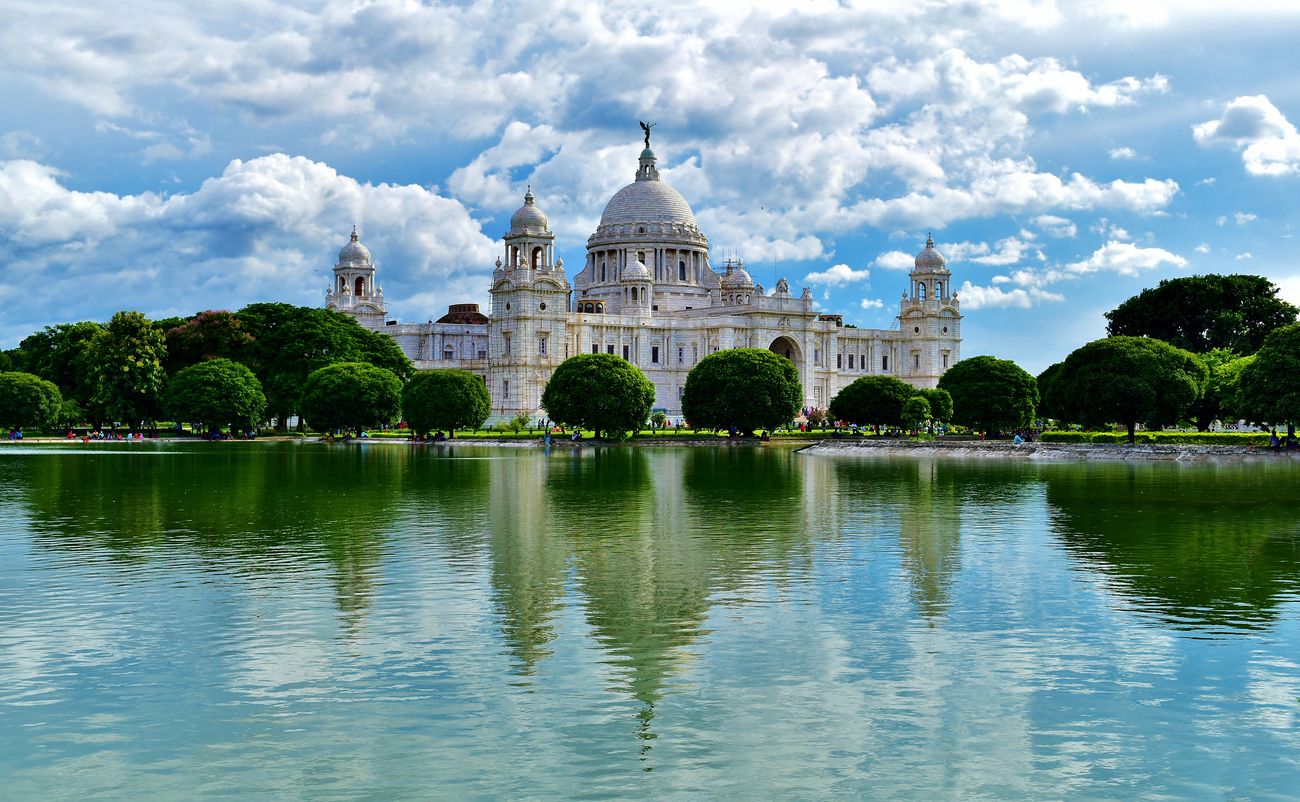
Kolkatas Taj Mahal – Kolkata’s Victoria Memorial looks more like a marooned spaceship and less like a relic of the British Raj. To the layman, this marble memorial is a British version of the Taj, and this too had been built in memory of a queen. The flower-speckled parkland, tended lovingly by wizened gardeners, is an invitation to lovers to stroll around arm-in-arm, even as the imposing bronze statue of Queen Victoria seems to look on with a faint air of “not being amused” © Manab Das
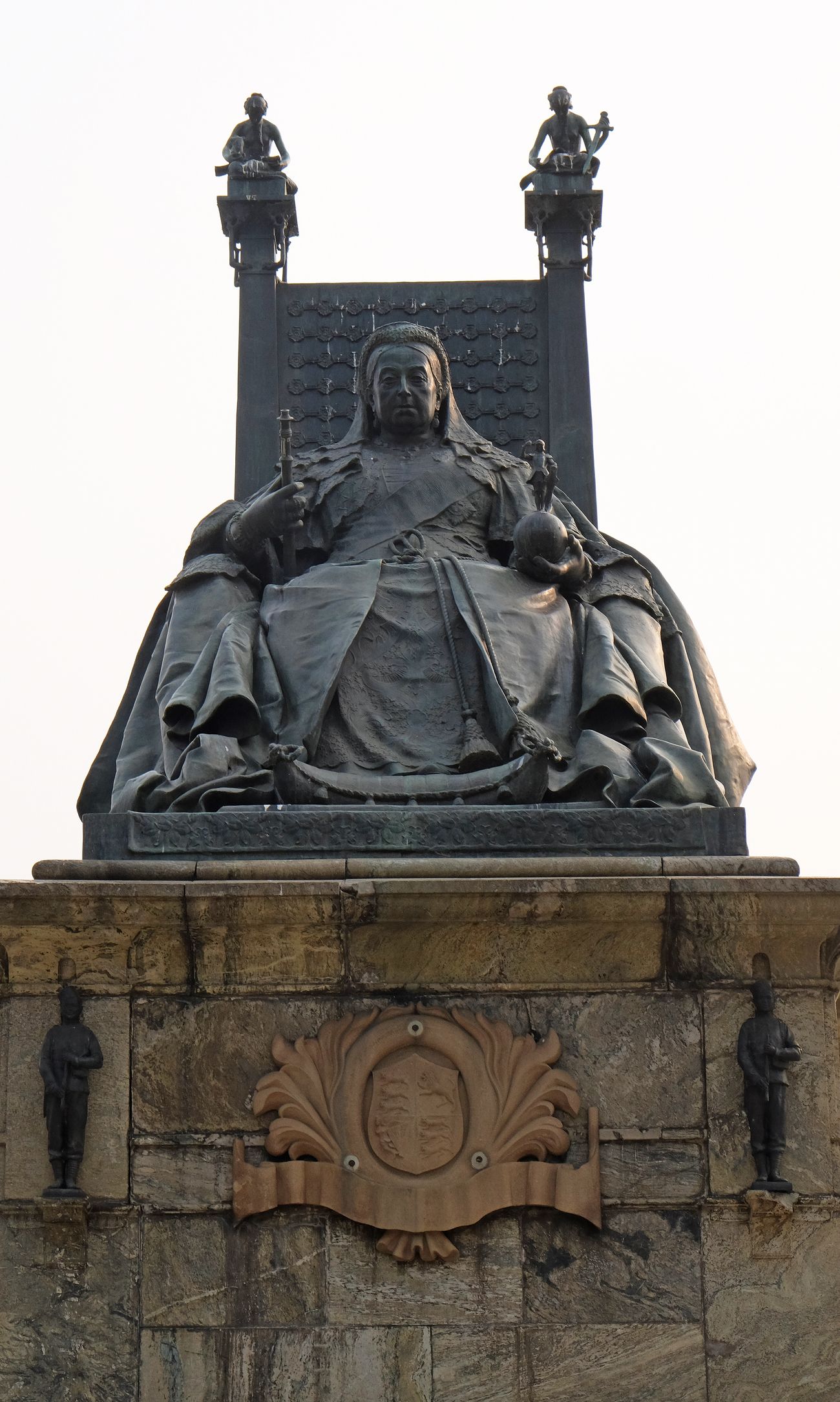
A bronze statue of Queen Victoria located on the grounds of Victoria Memorial in Kolkata, West Bengal © Zvonimir Atletic
The Maidan & The Victoria Memorial
The Maidan is an island of green in Kolkata’s concrete jungle, providing a pleasing source of fresh air and lawns. The park is about 3 kilometers in length and was created in 1758 in order to give the cannons of Fort William a clear field of fire. On a typical day, you will find people there taking leisurely walks or enjoying a ride in a horse carriage, playing cricket or football, families picnicking, land overs relaxing. In the winter, a slow tram line through the park is the best way to enjoy the green landscape and watch horses and cattle plod about in the thin winter mist.
Located near the southern tip of the Maidan, the Victoria Memorial is a fine monument of white marble-topped by an impressive dome. Completed only in 1921, it was actually built in honor of Queen Victoria’s death in 1901. It is widely regarded as one of India’s grandest buildings.
The monument dominates any view from the surrounding gardens and casts stunning reflections in the nearby bodies of water. Inside, visitors and wonder at the high central chamber and the galleries, which house collections that represent Kolkata’s colonial era. A sound-and-light show that lasts 45 minutes is well worth the price, especially if you are interested in history. The monument also provides an impressive back for the Kolkata Literary Meet, which is held every winter.
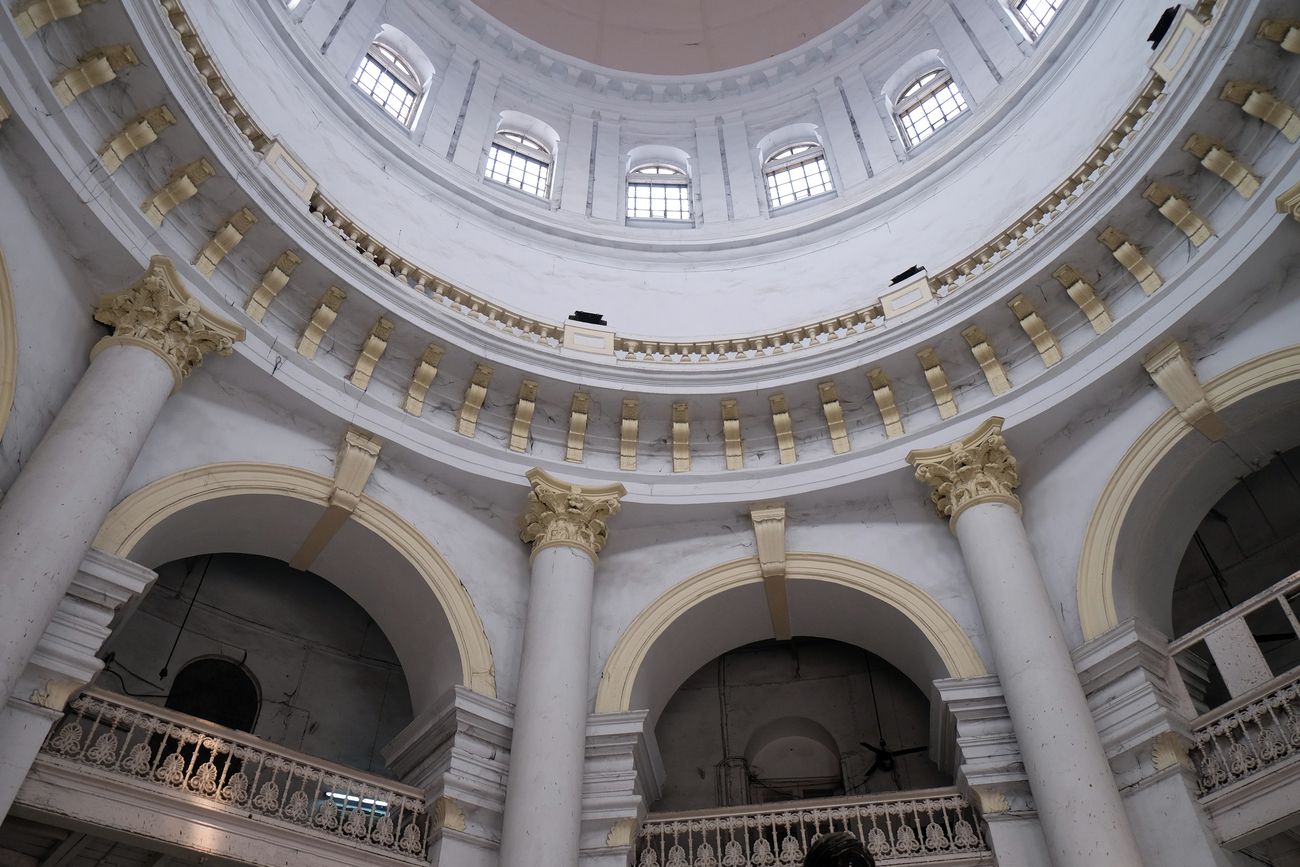
A view of the ceiling of the General Post Office located in Dalhousie Square, Kolkata, West Bengal. Bridge was designed in 1864 by British Architect Walter B. Grenville Designed in 1864 by Walter B. Grenville © Zvonimir Atletic
BBD Bagh
Built around a large water body called Lal Dighi (Red Lake), the square is named for three Bengal revolutionaries who entered Writers’ Building on a December morning in 1930 and killed the Inspector General of the British Indian Police. That man was infamous for his brutal treatment of political prisoners. The place was long named Dalhousie Square and – and as the former, the seat of British rule in India – is surrounded by impressive witnesses of India’s British colonial past, especially – but not limited to – the Currency Building, the GPO (General Post Office), Royal Insurance Building, Central Telegraph Office and the already mentioned Writers’ Building. Best visit it on Sunday to avoid the normally street-clogging traffic.
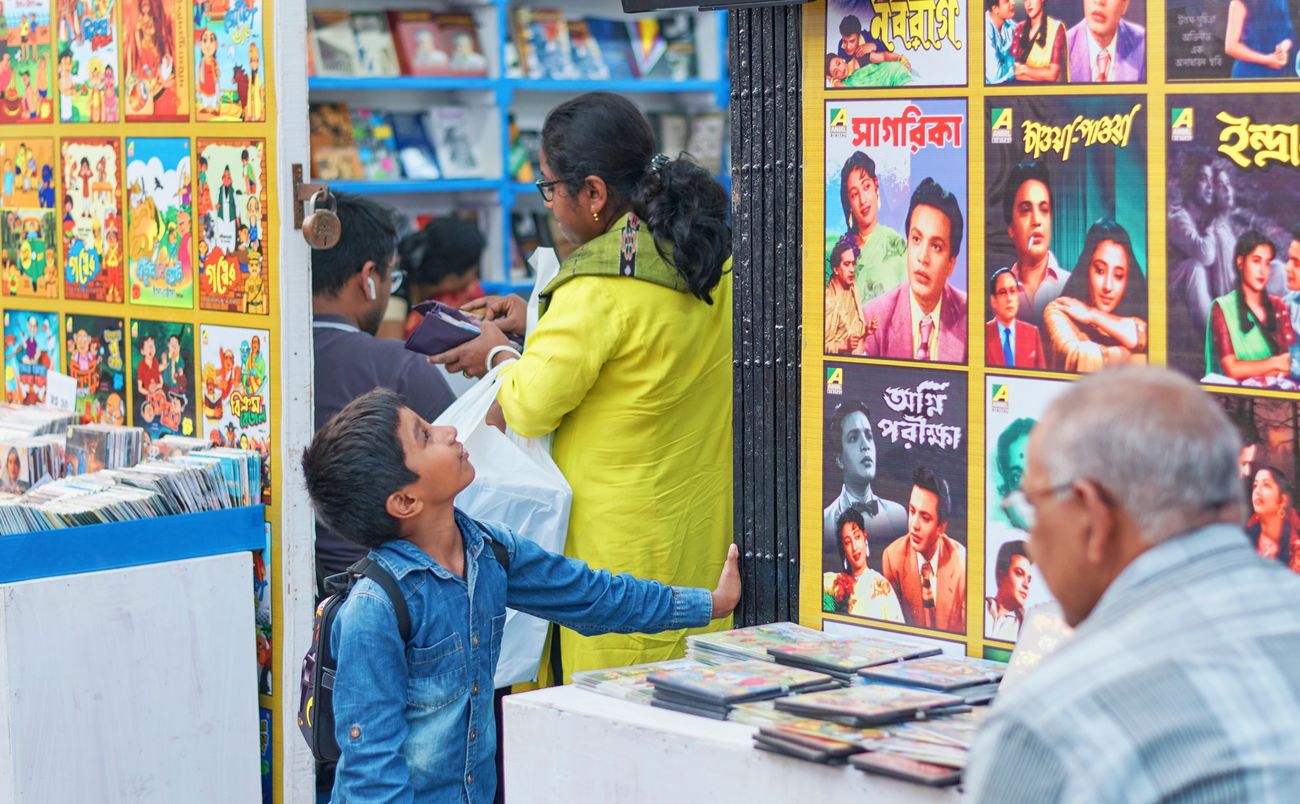
A young boy looking at the posters of retro Bengali movies which starred the iconic Uttam Kumar © Suprabhat
South Kolkata
A deep cultural and social south-north divide once characterized Kolkata before the city’s Metro lines were constructed. In South Kolkata, the neighborhoods of Bhowanipore and Rashbehari have quieted refuges from the city’s noisy bustle, and fashionable teahouses and boutiques dot the tree-lined stretch Southern Avenue. One place worth visiting in South Kolkata is the large lake Rabindra Sarovar. Swimming and rowing clubs are housed in surrounding wooded parks where you can also find people practicing yoga, playing music, and just enjoying walks along the peaceful paths. Another highlight is the Nandan-Rabindra Sadan-Academy complex that provides a venue for films, plays, and art exhibits, and especially plays host to the renowned Kolkata Film Festival which takes place every November.
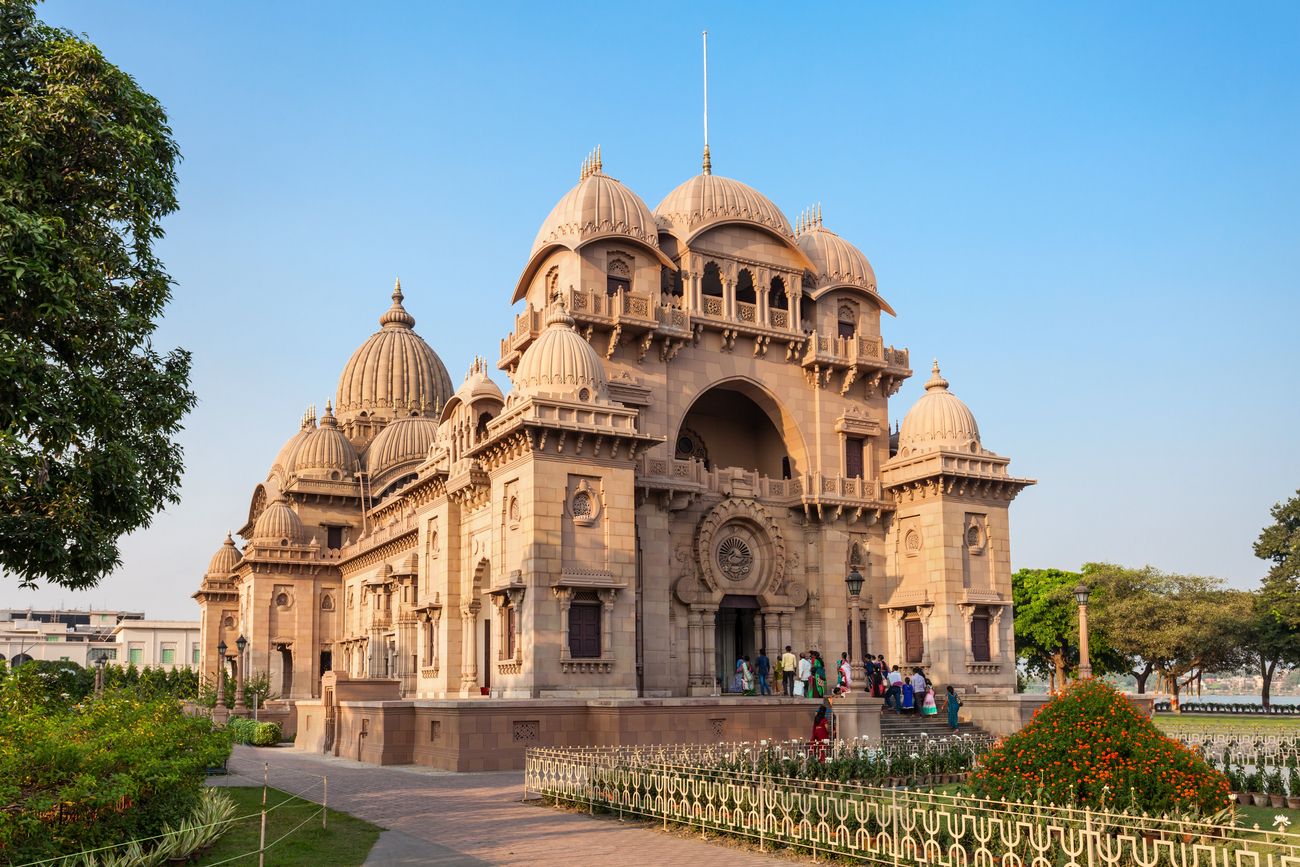
Belur Math which is the headquarters of Ramakrishna Math and Mission which was started by Swami Vivekananda © saiko3p
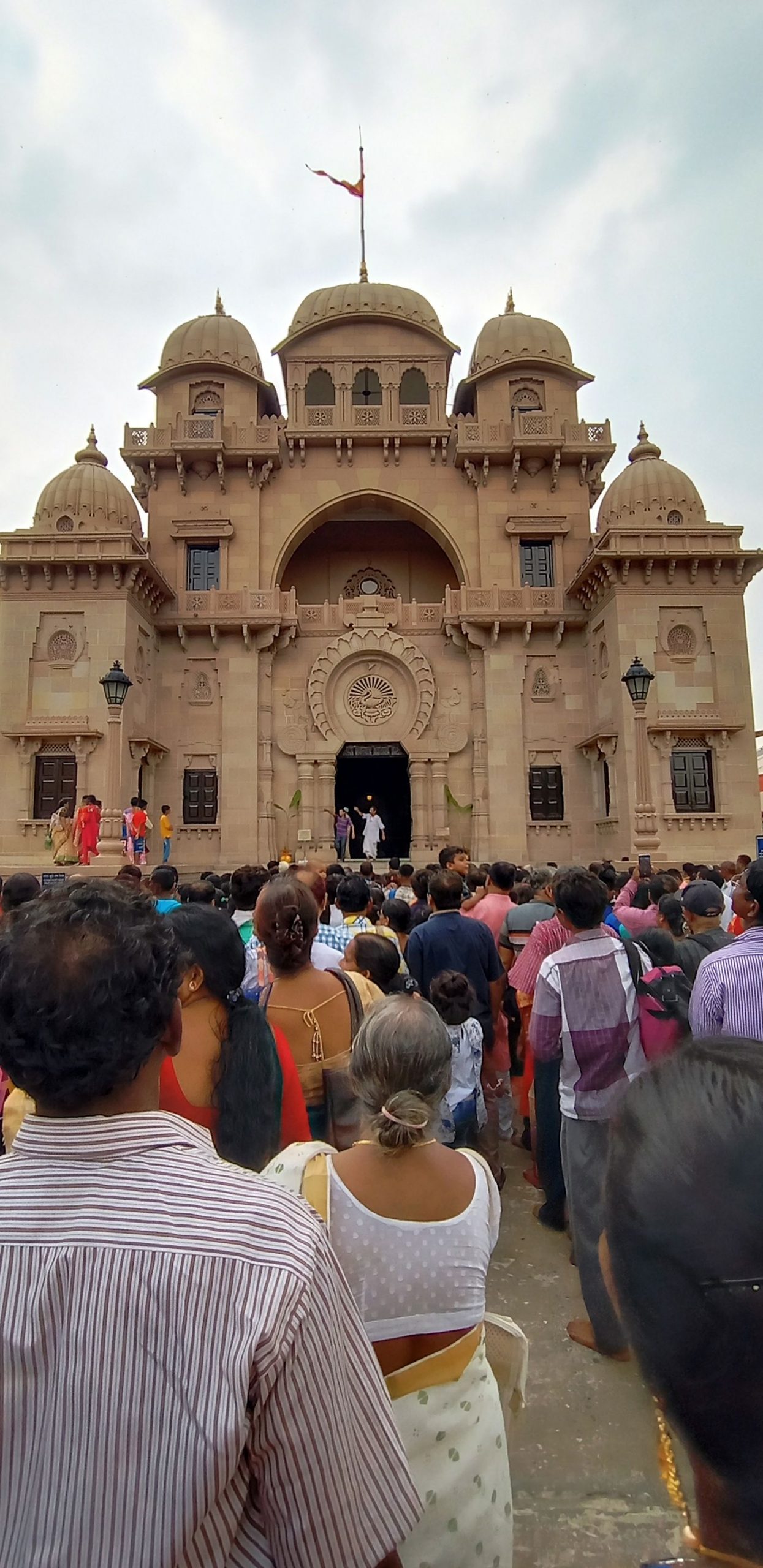
Visitors to West Bengal’s Belur Math, the Ramakrishna Math and Mission headquarters. The monastery was established by Swami Vivekananda © Manoj 007
Shrines
Despite its comparatively brief history as a city, Kolkata has played host to many religions and spiritual movements. The Kalighat Temple is one of the city’s most holy for Hindu pilgrims. It counts among the 51 “Shakti Peethas” – especially significant sites in the goddess-focused Hindu Shaktism tradition. The Belur Math is located on the northern edge of the city. It was founded by Swami Vivekananda, and its architecture with its remarkable combination of Hindu, Christian, and Islamic symbology embodies the unity of all religions. The impressive Pareswanath Temple is one of the most significant Jain shrines in all India. The largest mosque in the city is the Nakhoda Masjid, built in the neighborhood of Chitpore. The mosque’s interior is elaborately decorated, and its architecture clearly shows the influence of the mausoleum of Emperor Akbar at Sikandra Agra.
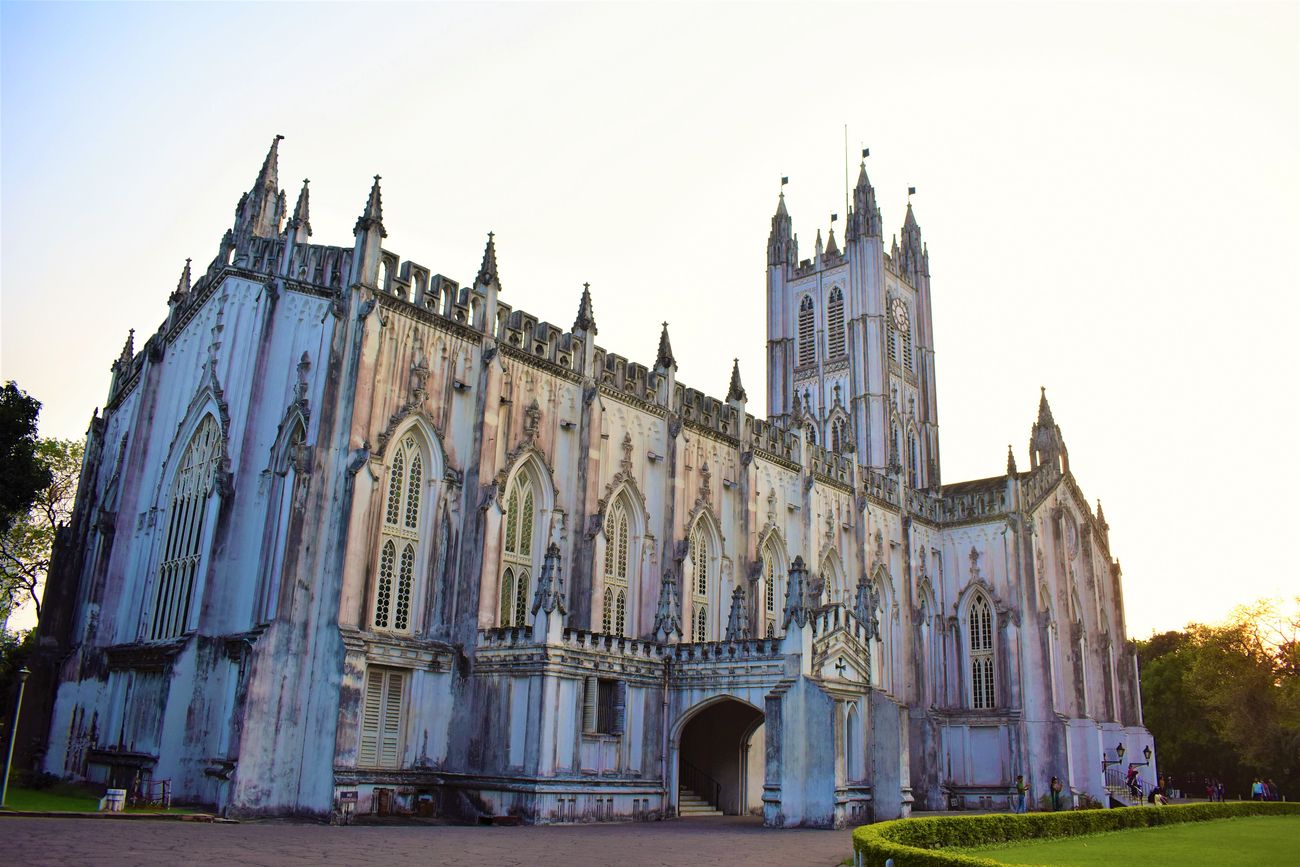
A specimen of Gothic architecture from 1847, the St. Paul’s Cathedral in Kolkata © Rashbihari Dutta
Central and northern Kolkata also contains some beautiful Christian centers of worship. The impressive St Paul’s Cathedral is located at the southern edge of the Maidan. It was the first cathedral in the British Empire built in a colonial possession. The St. John’s Church, which was built in 1787, is located near the Governor House (Raj Bhavan). Next to it is the Armenian Church. On January 7 every year, Christmas celebrations are held in accordance with tradition. Visitors traveling along the APC Road will catch an impressive view of the St James’ Church and its twin spires.
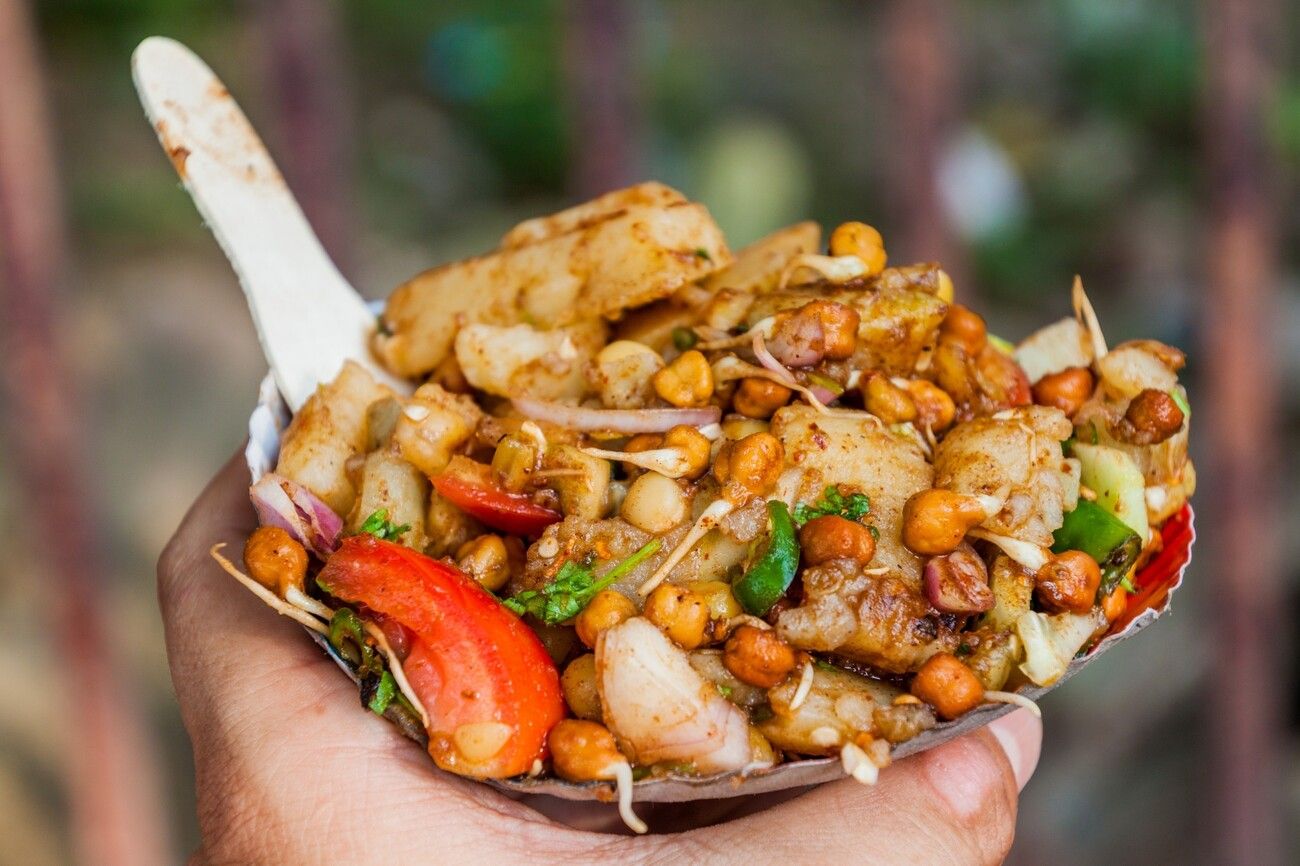
Aloo chaat chana is a popular street snack that can be spotted everywhere on the streets of Kolkata © Matyas Rehak
Culinary Kolkata
To paraphrase an old saying, the best way to a person’s heart is through the stomach – and Kolkata’s cuisine definitely provides grounds for falling in love. Just the aromas of the various dishes in preparation will cause the visitor’s taste buds to tingle. There is only enough space here to name a very few of the city’s delights. Phuchkas – a Bengali variant on Pani puri – are stuffed with mashed potatoes, spices, and tamarind chutney. Aloo kabli is a delicious mix of boiled potatoes enhanced with tamarind, onions, tomatoes, chilies, chickpeas, and tangy spices. Telebhaj is gram or corn batter fried to a crispy delight in mustard oil and traditionally stuffed with potato, onion rings, or brinjal, although some places use coriander leaves, pumpkin, or mangoes.
Perhaps the city’s culinary pride and joy among street foods is the Kathi roll. This is a paratha of flaky flour rolled around any number of chosen fillings, including omelets, chicken, mutton, minced meat, fresh cheese (paneer). Fillings are accompanied by sauces, capsicum, onion; and the whole thing is garnished with a dash of pepper, chilies and lime).
Russel Street, located just off Vardhan Market, offers mouth-watering dishes, including but by no means limited to Puchkas, Khatta Meetha Chaat, Paapdi chaat, and moong dal Chila.
Another thing you must sample while exploring Kolkata’s street foods is Kesar chai (Saffron Tea) served at Sharma Tea House. It will truly be “love at first sip”, and it will be very difficult to stop after only one cup!
Not that Kolkata cuisine is limited to street food! The exclusive, members-only Bengal and Calcutta Clubs offer exquisite experiences in dining. Impeccable white-gloved waiters lend that last touch of elegance to traditional dishes from the British colonial era such as mutton curry, vindaloo (pork or chicken curry), and mulligatawny soup. If you just cannot get in one of these clubs, you can enjoy these same dishes at the food stall on Park Street during the Christmas season. Park Street is, in fact, the real center of traditional food in Kolkata and is home to a number of attractive restaurants. Flury’s, however, is still the most famous establishment there. Since 1927, this stylish tearoom is host to long queues of customers waiting to get a table for breakfast. Its plum cakes are a takeaway favorite.
No sample of Kolkata cuisine would be complete without biryani. This dish combines tender meat with mild spices and comes with a large, browned potato perched atop a bed of rice. Among the best places to enjoy this dish is the Royal in Chitpore, Shiraz in Park Circus, and Aminia in Dharmatala.
If you are looking for traditional Bengali cuisine, you can try Kewpies’ in Bhowanipore, and 6 Ballygunge Place or Oh! Calcutta in Ballygunge. Authentic dishes can also be enjoyed at less expense in some of the city’s more modest hotels.
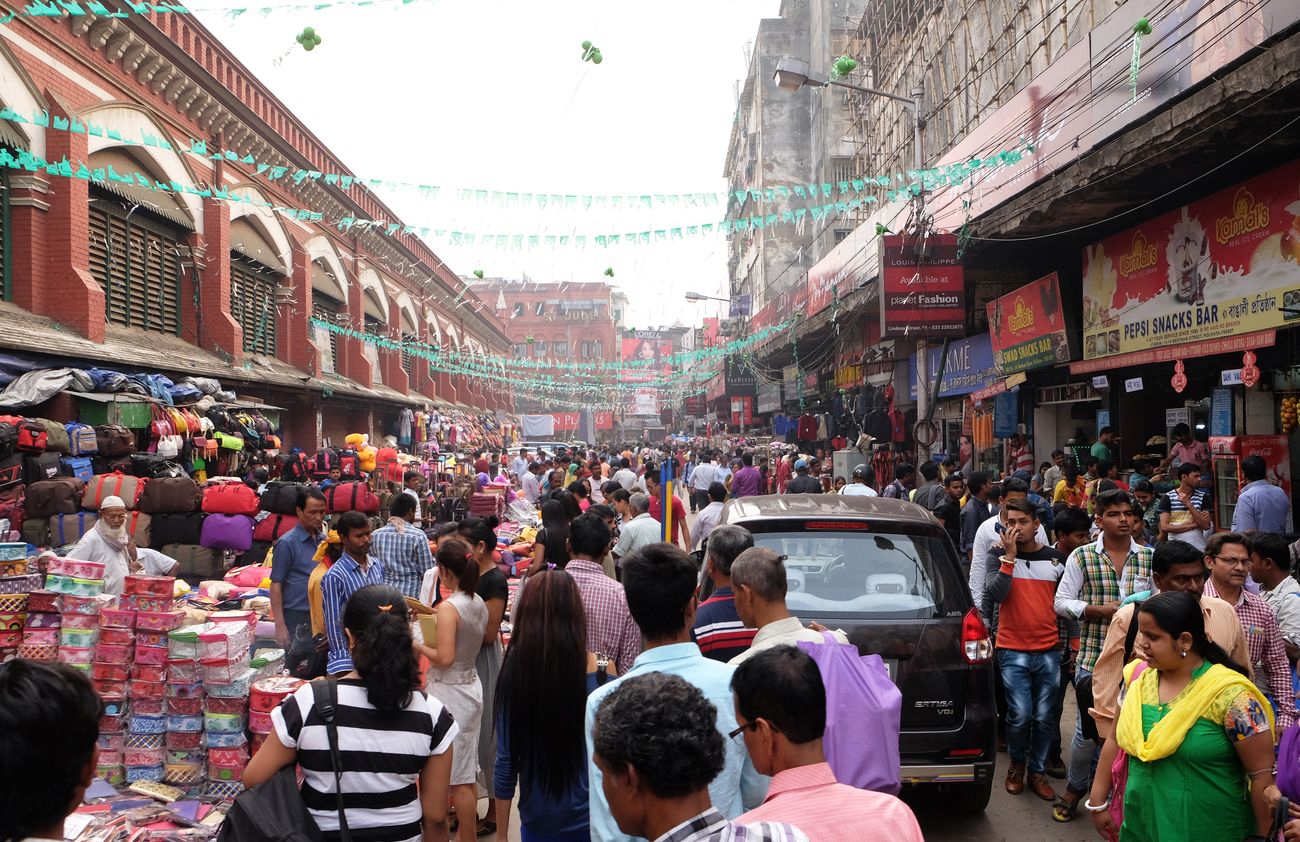
The Sir Stuart Hogg Market is over a century old, yet, ironically, it is called the New Market © Zvonimir Atletic
Where to Shop
The New Market, an icon of the Raj Era, is Kolkata’s true “Shopping center”. It was established in 1874 and was originally known as Hogg Market. Located on Lindsay Street in the city center, one can find almost anything there – meat and fish, clothing, accessories, sweets, and flowers. It is a real “one-stop-shop” – all under one roof.
The Dakshinapan at Dhakuria is a somewhat run-down looking shopping complex, but it houses numerous state shops that sell ethnic wear, handmade jewelry, and other handicrafts.
Winter is the traditional season to shop for traditional handicrafts. Native artisans and craftsmen travel to the city from the surrounding villages and offer their wares at fairs held on the city’s eastern edge. These fairs offer welcome color and life during the otherwise grey winter days. In recent times, however, modern malls have been springing up all over Kolkata, offering modern designs and international brands, and competing with traditional crafts. They are gradually transforming the face of the city.
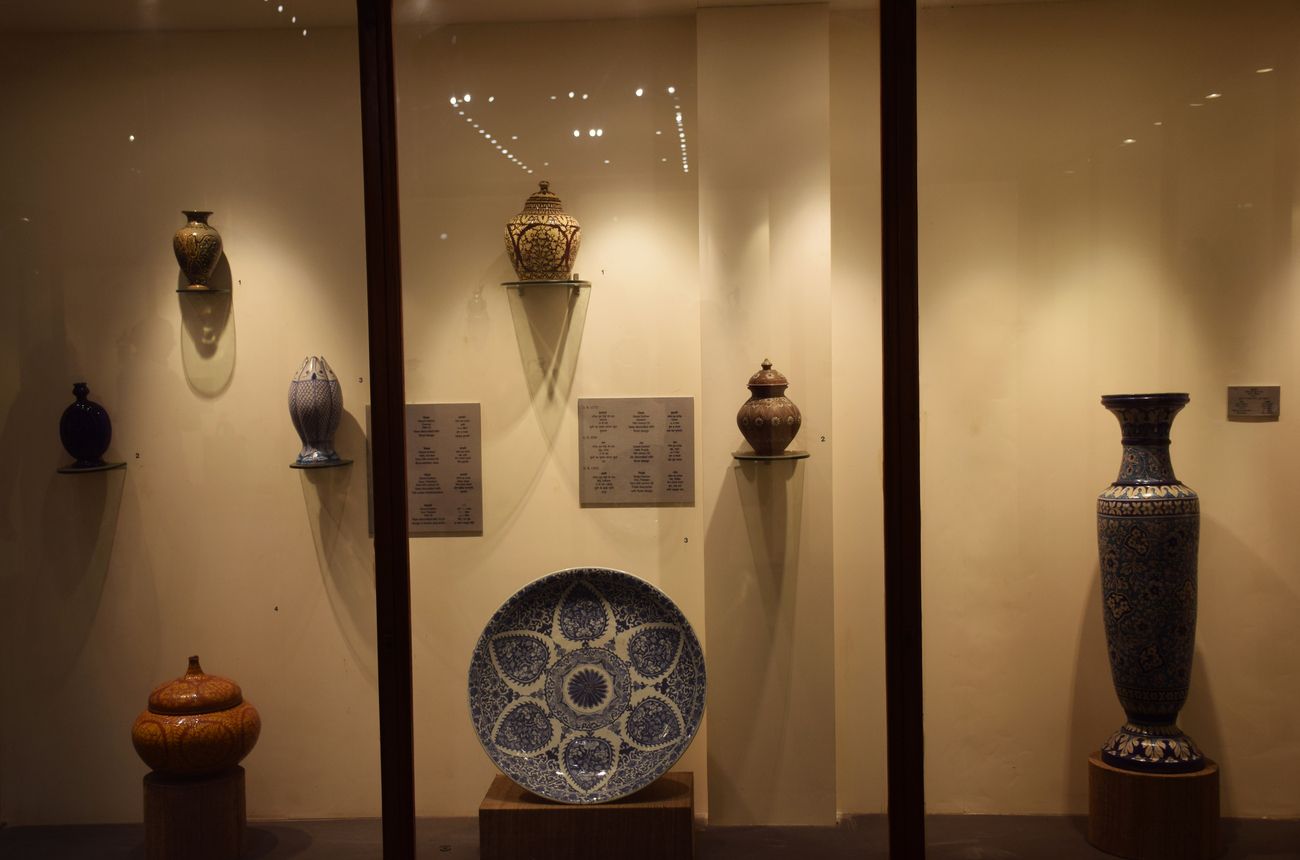
Vintage Potteries on display at the Indian Museum in Kolkata © Dkroy
The Kolkata Few Tourists Know
It’s not hard to see that Kolkata has a rich and magnificent history. Everywhere you go, you will see magnificent examples of architecture witness to the city’s legendary past: the old, imperial buildings on the BBD Bagh, including the fateful Writers Building; the impressive Victoria Memorial; the churches, temples, and mosques. All these sights attest to Kolkata’s marvelous heritage.
But Kolkata has so much more to offer if you are only willing to take a little more time to explore other spots deserving of the effort. There is, for example, the Rabindra Bharati Museum. Nobel Laureate Rabindranath Tagore spent his youth in this building and there died. It is a shrine to his life that contains not only his paintings and photos but even displays the items he used in daily life. You can spend hours there getting to know the life of this remarkable man.
If museums are your thing, then be sure to visit Netaji Bhavan, the ancestral family home of the famous fighter for freedom, Netaji Subhas Chandra Bose. Now a museum, it houses a wide range of artifacts and documents that attest to his life and times, even including his car.
Then there is the Star Theatre – where the city’s first play was performed in 1883. Ever since then, the theatre has hosted historical plays attended by the city’s leading art patrons and connoisseurs. This building is not only worth a visit due to its history and ornate façade. The theatre plays a living role in the city’s modern life, so go ahead and attend a Bollywood film. During the annual Kolkata International Film Festival, films are screened there, and the building also contains both an art gallery and the Noty Binodini Memorial Amphitheatre.
Experience Shobhabazar Rajbari’s 250-year history with a visit to Shobhabazar. This palatial house, built in the 18th century and one of Kolkata’s oldest, has been host to the city’s most accomplished and important people. It is also famous for the Durga Puja celebrations held there.
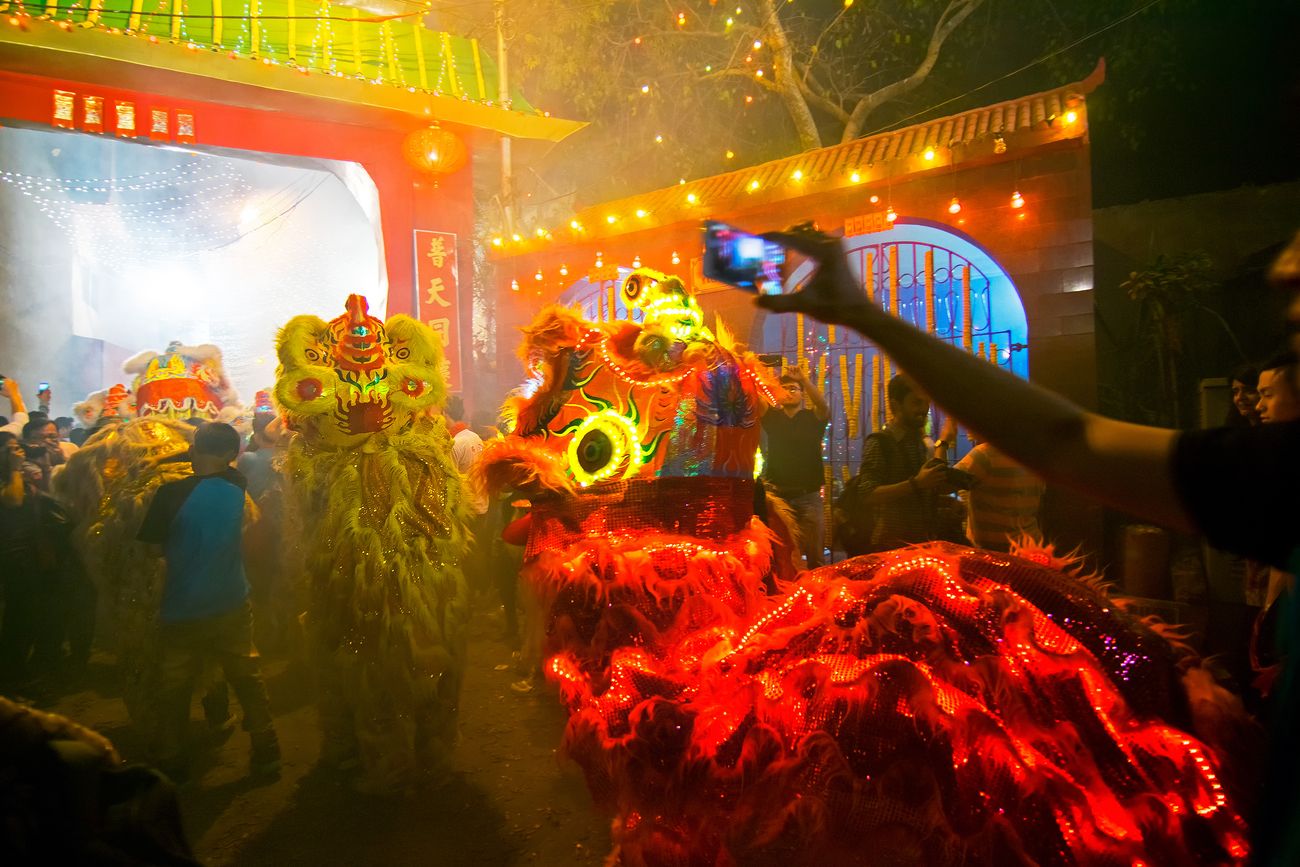
A slice of China lives on in the Tiretta Bazaar area (also known as Old Chinatown colloquially) as Chinese youths welcome their New Year with a traditional dragon dance. Drop by Tiretti Bazaar for some authentic Chinese delicacies © Rudra Narayan Mitra
Kolkata offers a wonderful spectrum of local and regional culinary specialties. But if you have a yen for something different, visit the Tiretta Bazaar – a neighborhood near Lalbazar in central Kolkata. Because of the large number of Chinese immigrants there (Chinese first started to arrive in Kolkata before 1820!), it is also known as China Town, and you can be sure to enjoy some of the best Chinese food you can find anywhere. This market is a real paradise for Chinese food fans! Momos, chicken and fish dumplings, pork baos, delicious soups, prawn wafers, and so much more! Beware, however, the market is only open on Sundays starting at 7 am and most of the food is gone by 8 am. Nahoum’s is also a definite must if you are a fan of baked goods and sweets. This legendary Jewish bakery in New Market has existed for more than a century. Aside from its delicious plum cakes, cheese Sambusaks, and challah bread, it is especially popular for its delectable chocolate fudge and rich brownies. As you enjoy this bakery’s excellent goods and watch the city pass by, you will be forgiven for wondering what other hidden treasure Kolkata has in store for you. And you can be sure that Kolkata has much more to offer. Take some time, do some more research and make friends in Kolkata. A wealth of unforgettable experiences is waiting for you.
No trip to Kolkata can be deemed complete without driving around in an iconic yellow cab. The Chowringhee Dharamtala crossing with Metropolitan colonial heritage building in the background, busy with the yellow taxis of Kolkata © Roop_Dey
FACT SHEET
GETTING TO KOLKATA
Closest Airport: Kolkata’s Netaji Subhas Chandra Bose International Airport. IndiGo, Air India, Vistara and Go Air fly to Kolkata from other major Indian cities, especially New Delhi.
Closest Rail Station: Howrah Junction (Code: HWH)
Getting Around: Kolkata has a good public transport network with a number of options, including the modern Metro. Taxis can also be convenient. If cost is not a major consideration, hiring a private car is the most practical way of exploring the city.
Safety: Kolkata is a city that is well lit beyond midnight, but as with any large city, it is not advisable to go out unaccompanied after dark.
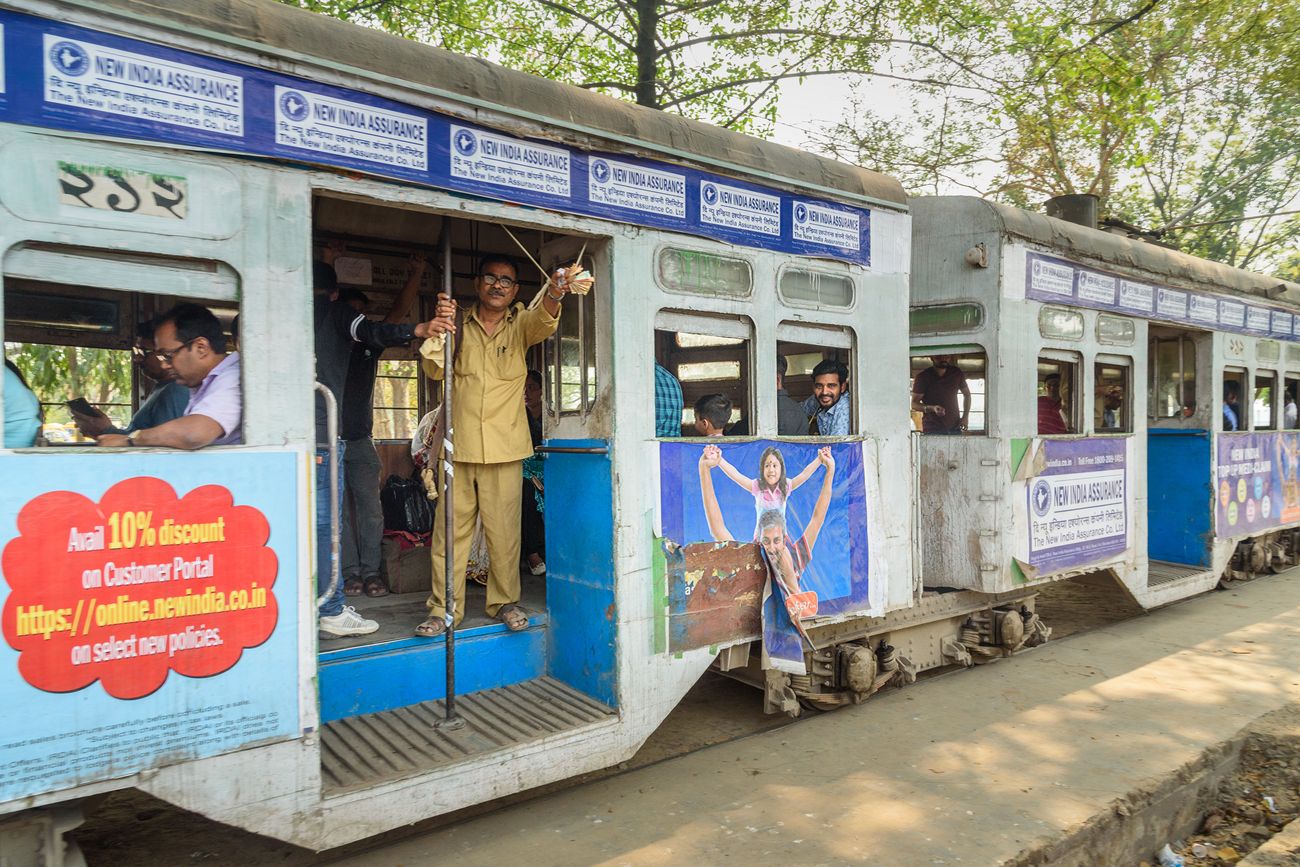
Historic trams are still the lifeline in Kolkata. Hop a tram for the quintessential Kolkata experience. Kolkata’s trams have been running through the busy streets of the city since 1902 © Elena Odareeva
Some Images From Our Trip To Kolkata
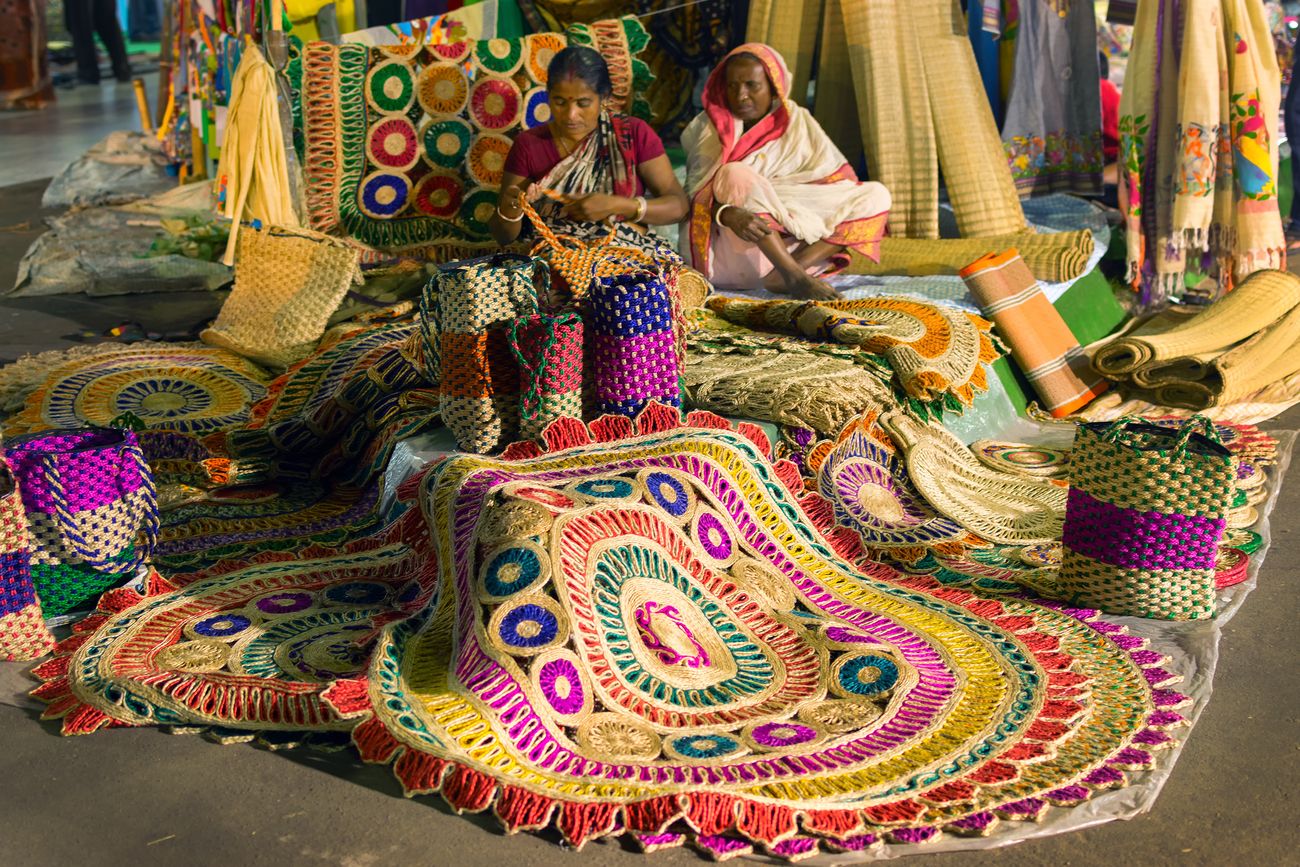
Women at Asia’s largest handicrafts fair in Kolkata preparing traditional handicraft artworks such as jute bags and carpets © Rudra Narayan Mitra

A rural woman paints a pot during the Handicraft Fair in Kolkata © Arindam Banerjee
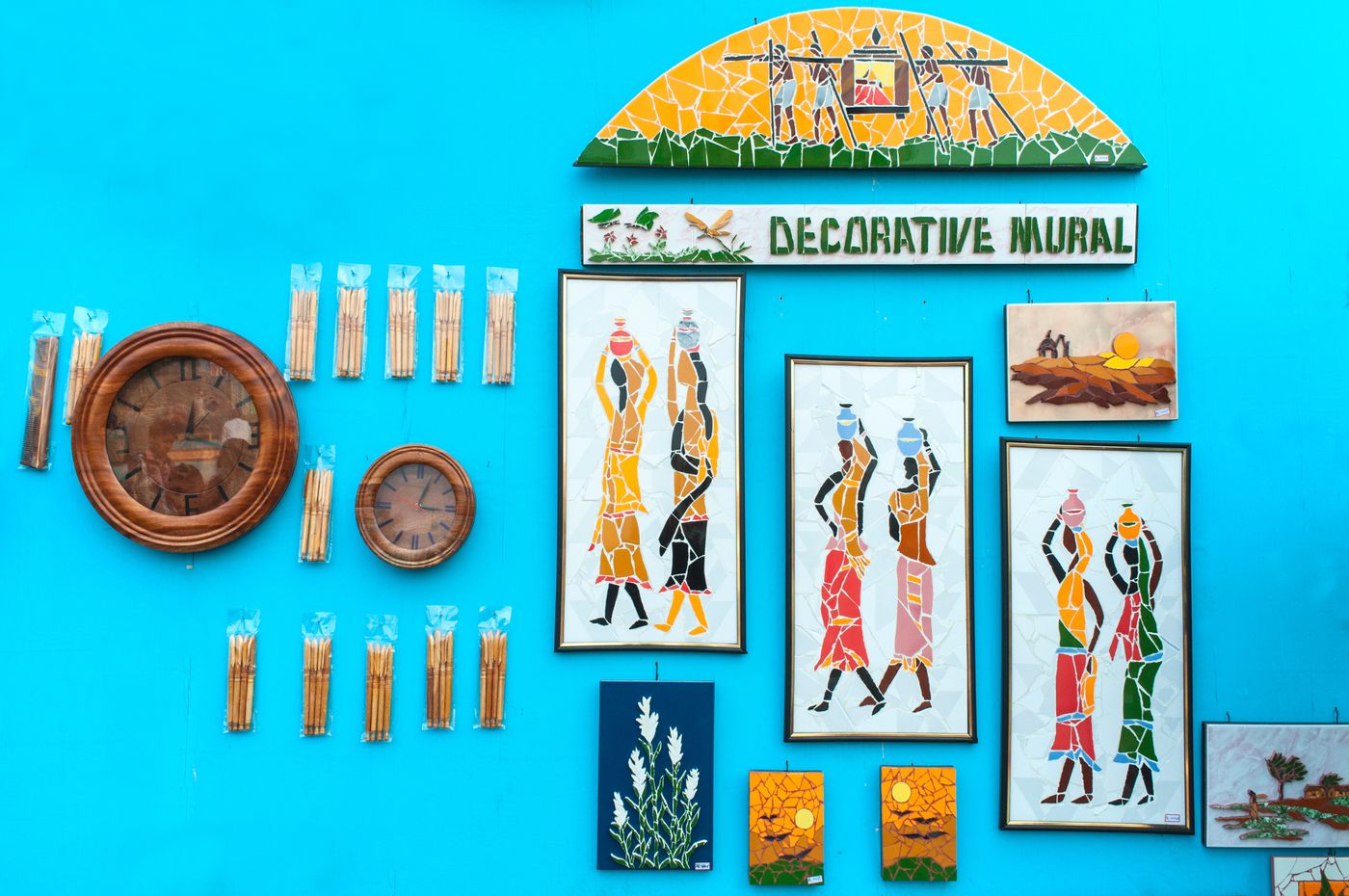
Some of the handicraft on display during Kolkata’s Handicraft Fair, the largest of its kind in Asia © Rudra Narayan Mitra
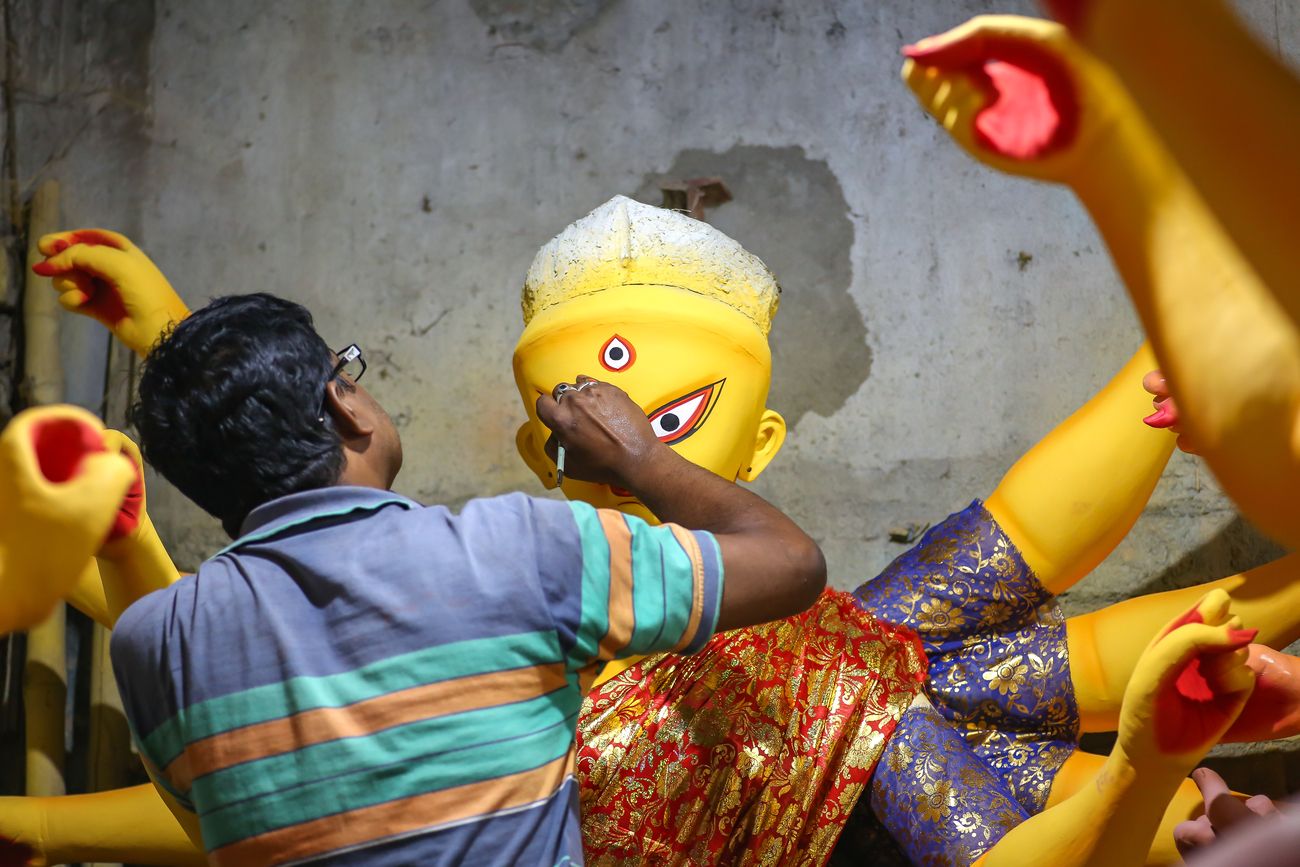
An artisan applies the final touches to the idol of Goddess Durga before the Durga Puja festival at the Kumartuli area of Kolkata © Roop_Dey
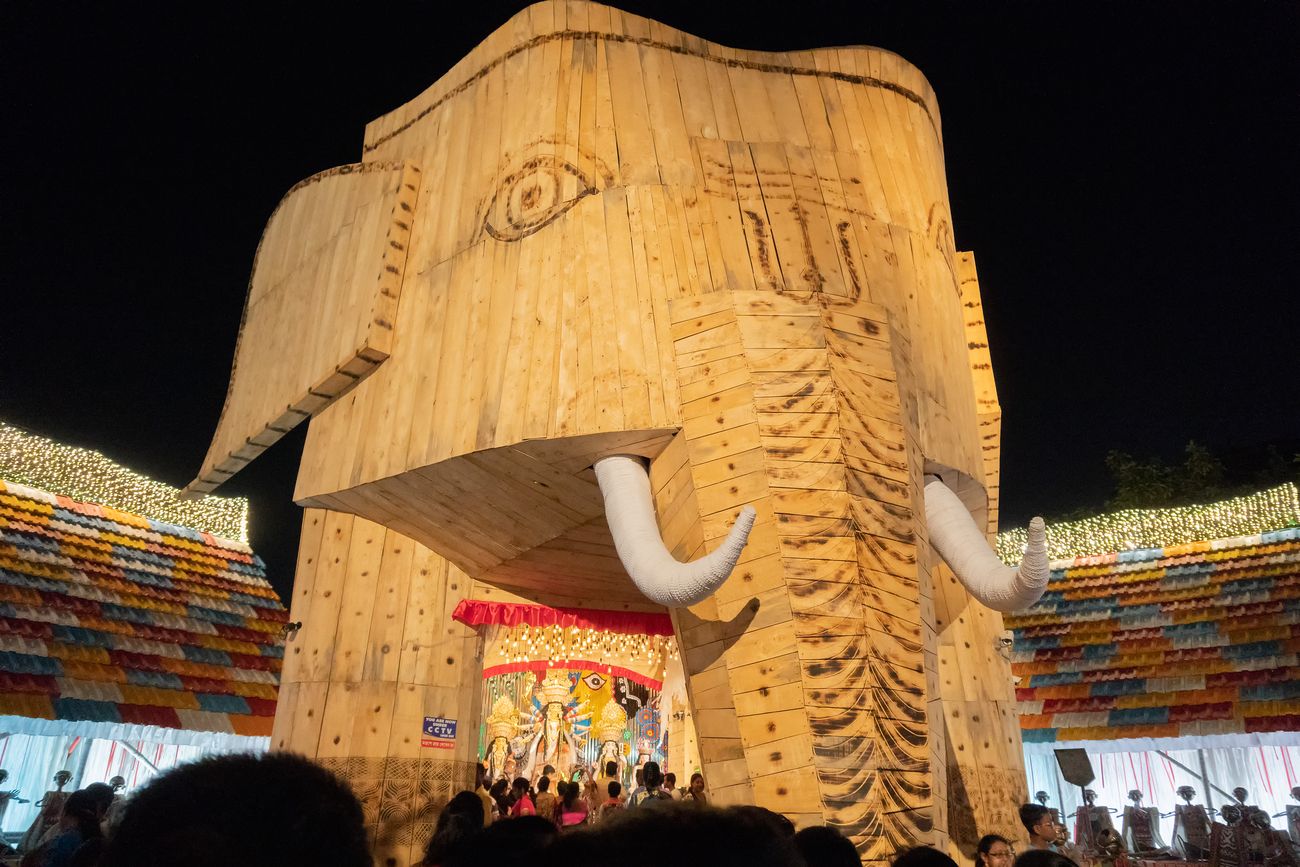
A durga puja pandal decorated in the shape of an elephant on the occasion of the holy festival © Rudra Narayan Mitra
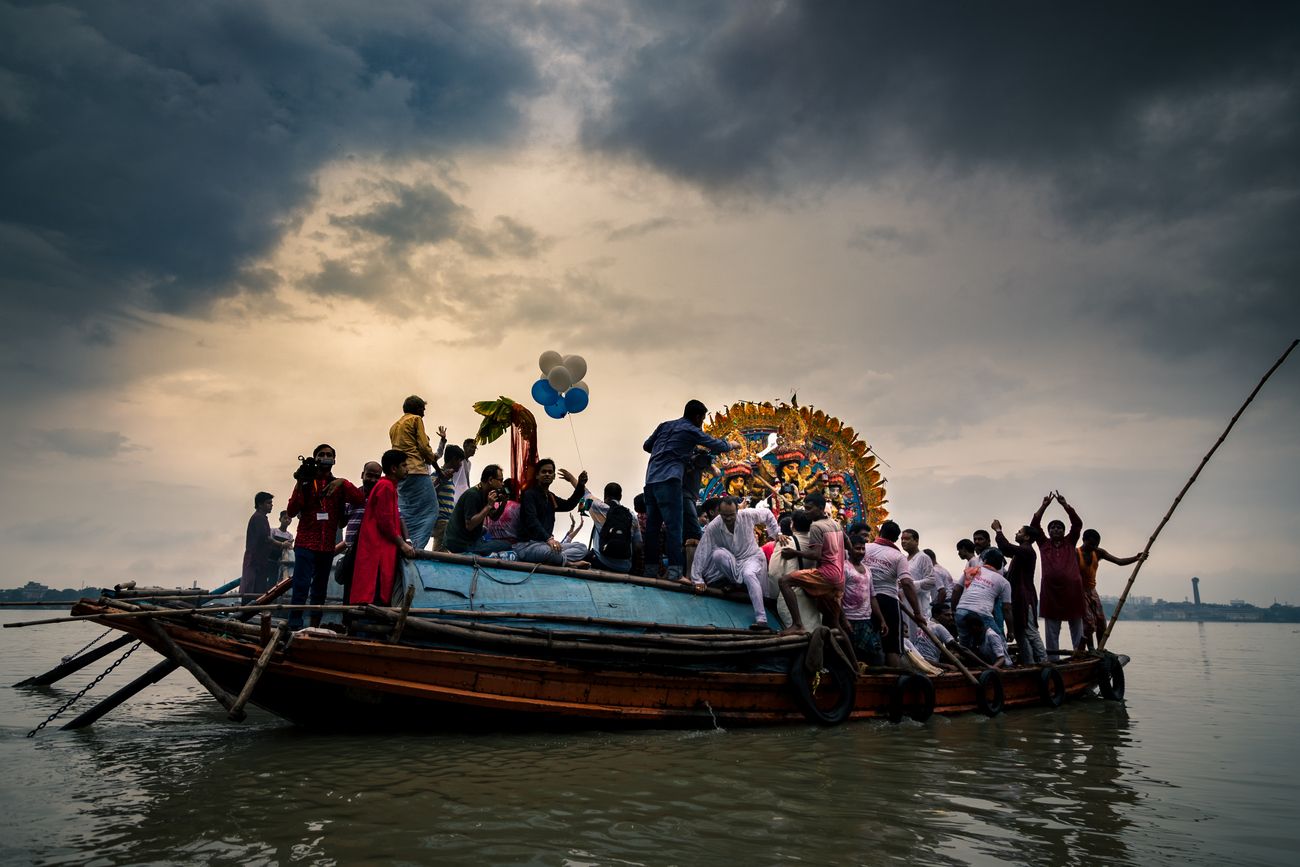
The idol of Goddess Durga rocking on the boat on the river Hooghly at a ritual during Durga Puja © srbh_graphy
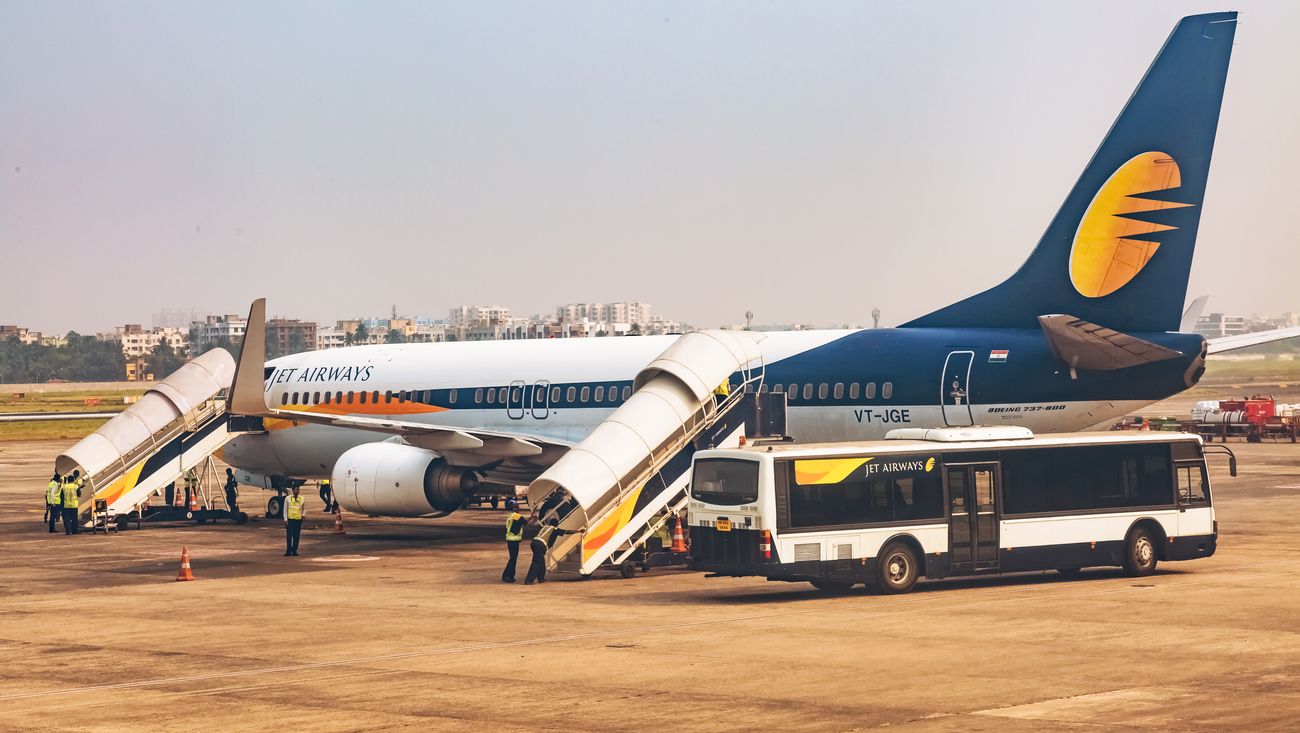
A Jet Airways aircraft waiting on the tarmac at the Netaji Subhash Chandra Bose International airport in Kolkata prior to takeoff © Roop_Dey
A fleet of the iconic yellow Ambassador taxis waiting outside the Netaji Subash Chandra Bose International Airport in Kolkata © SIHASAKPRACHUM
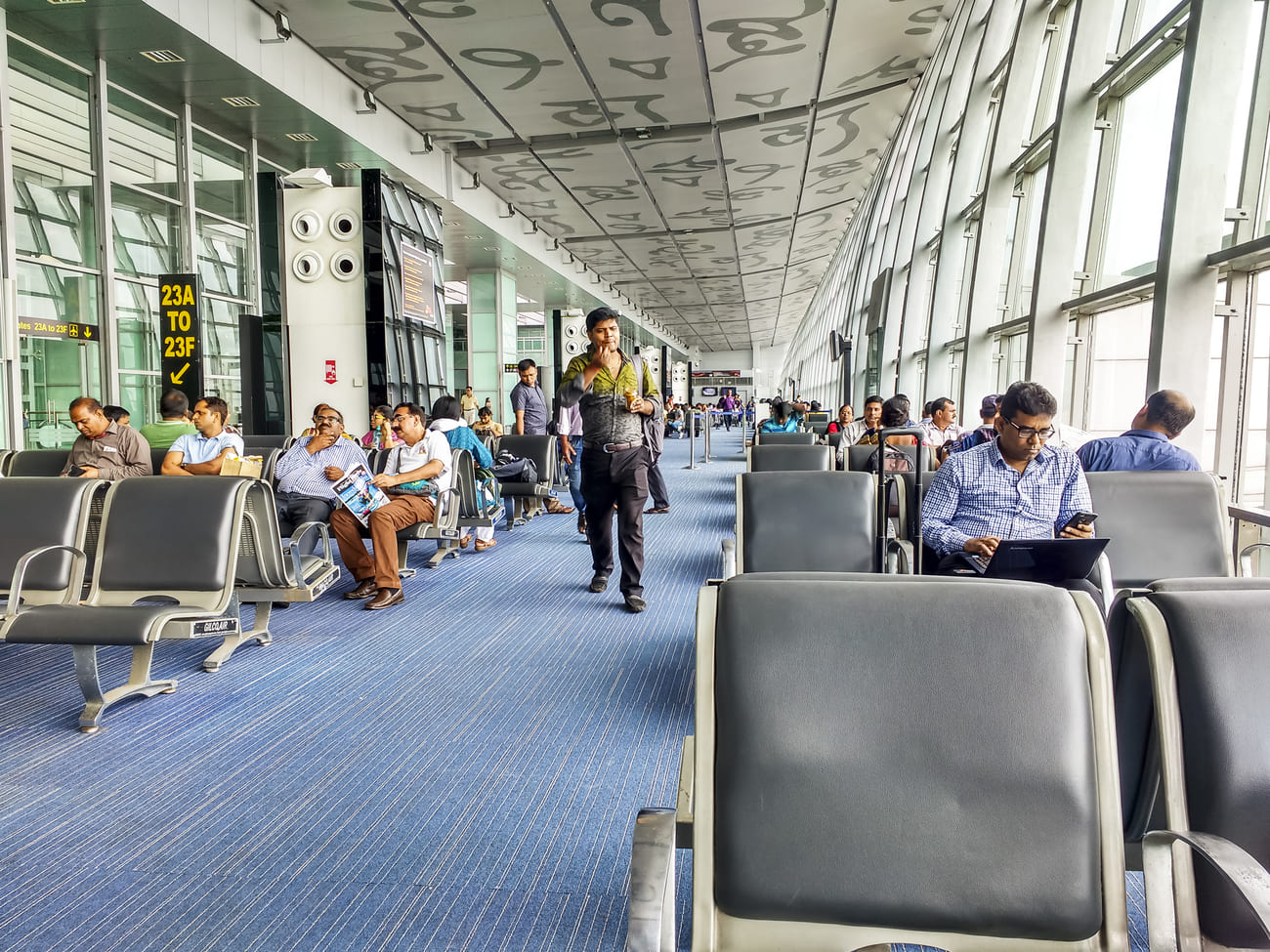
Netaji Subash Chandra Bose, Eastern India’s largest international airport in Kolkata, where passengers are awaiting their flights in the departure lounge © VasukiRao / GETTY IMAGES
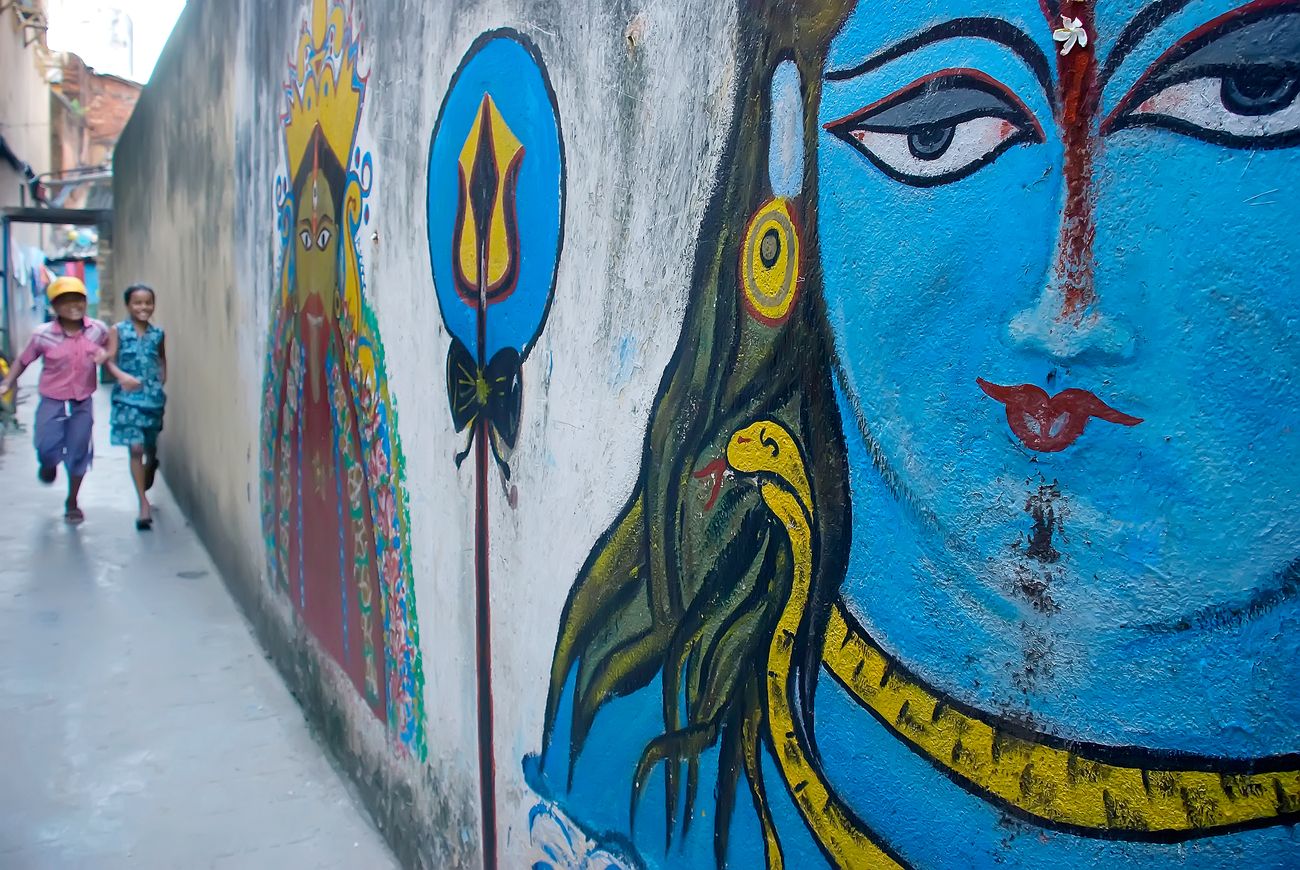
Children playing in a street in Kolkata with Murals of Shiva and other Indian Gods © Somnath Chatterjee
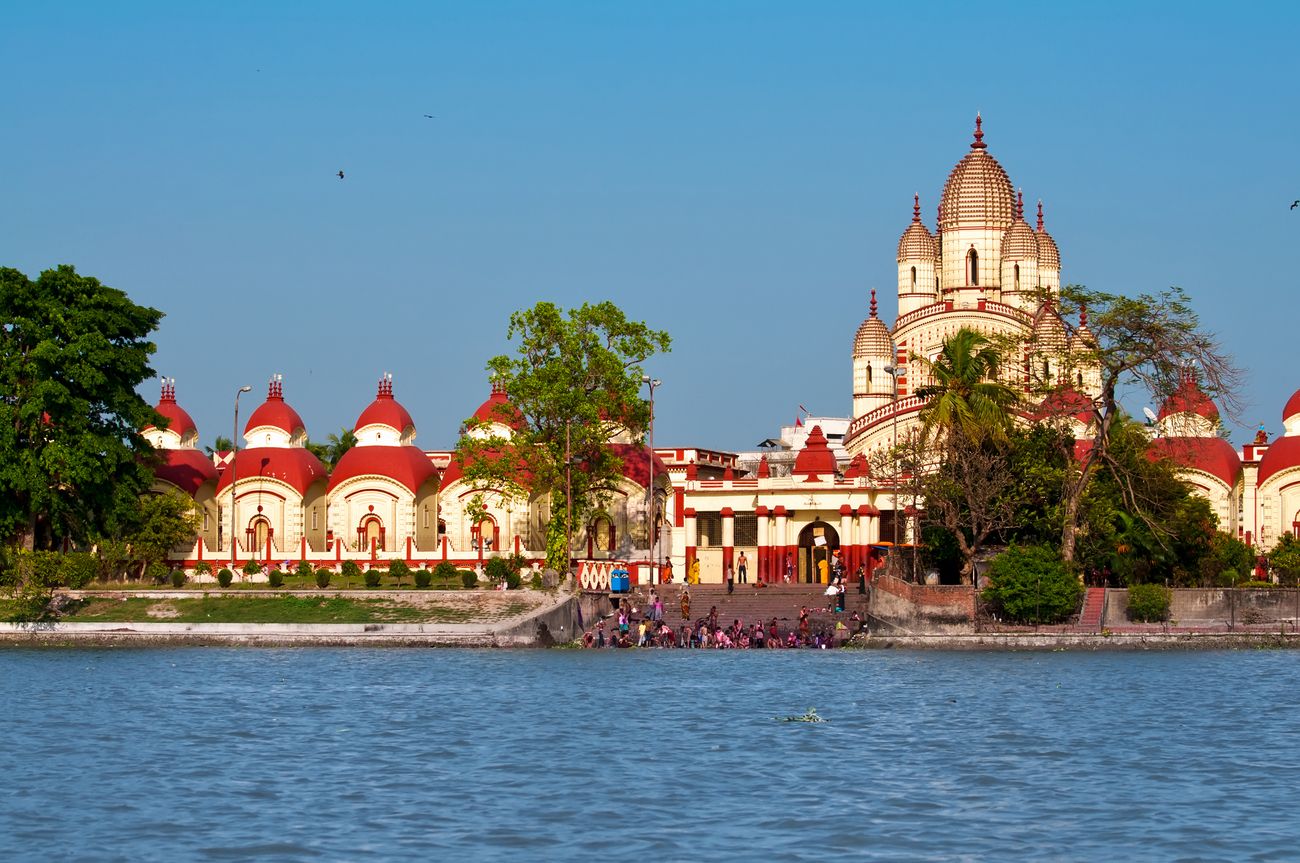
The Dakshineswar Kali Bari temple on the banks of River Hooghly, which is home to Goddess Kali © Jayakumar
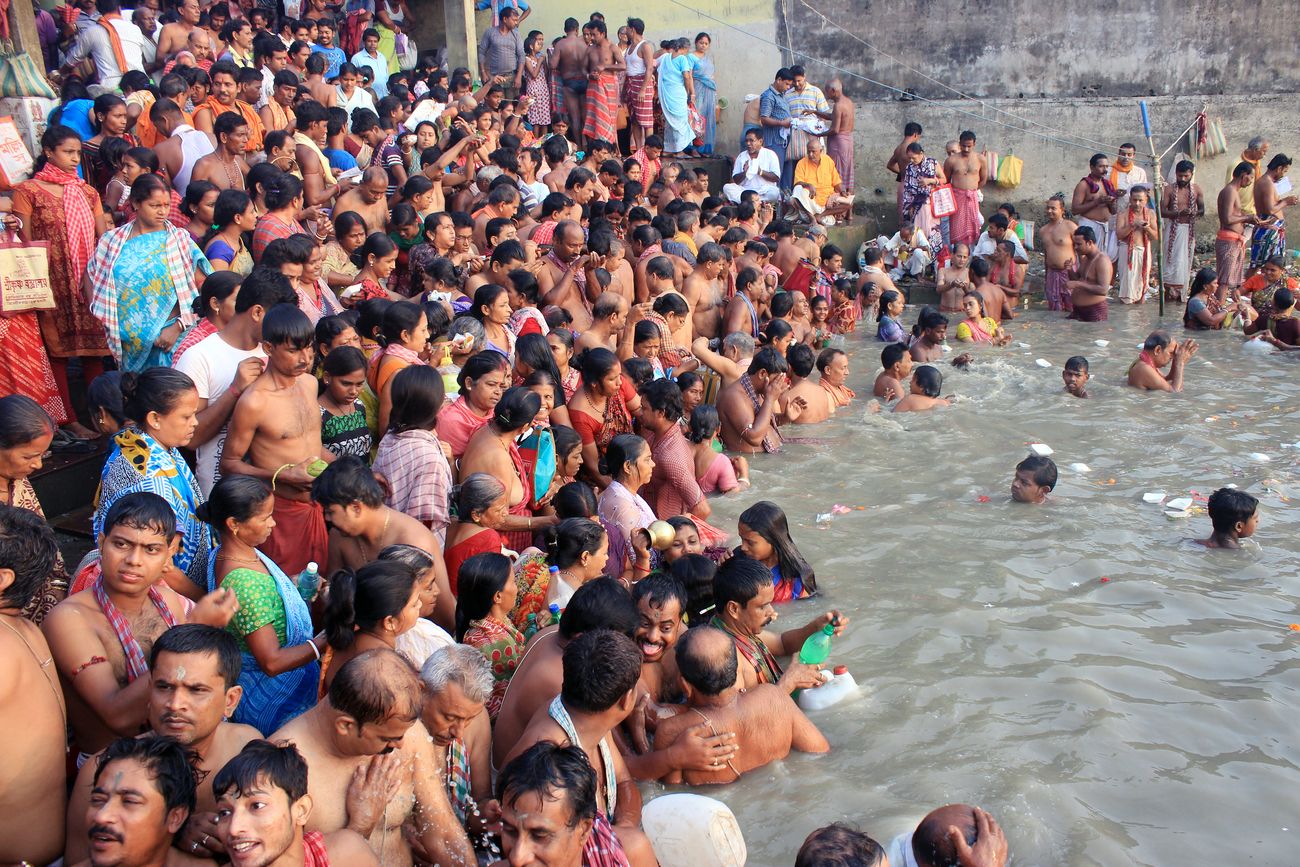
Pilgrims on the banks of Hooghly river in Kolkata enjoying a holy dip and offering prayers © Anubhab Roy
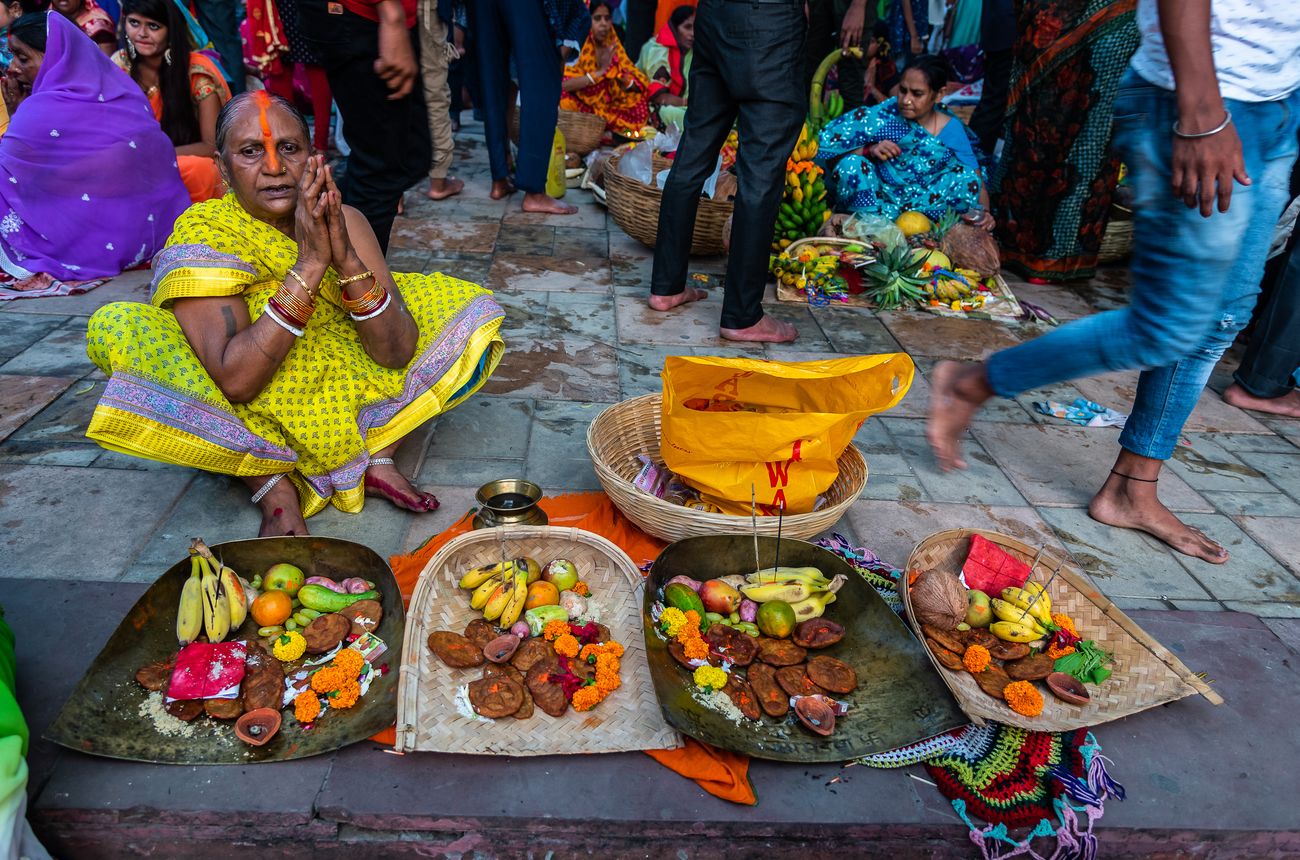
An old Indian lady sitting with a traditional puja thali at Princep Ghat in Kolkata waiting to offer prayers to River Ganges © ABIR ROY BARMAN
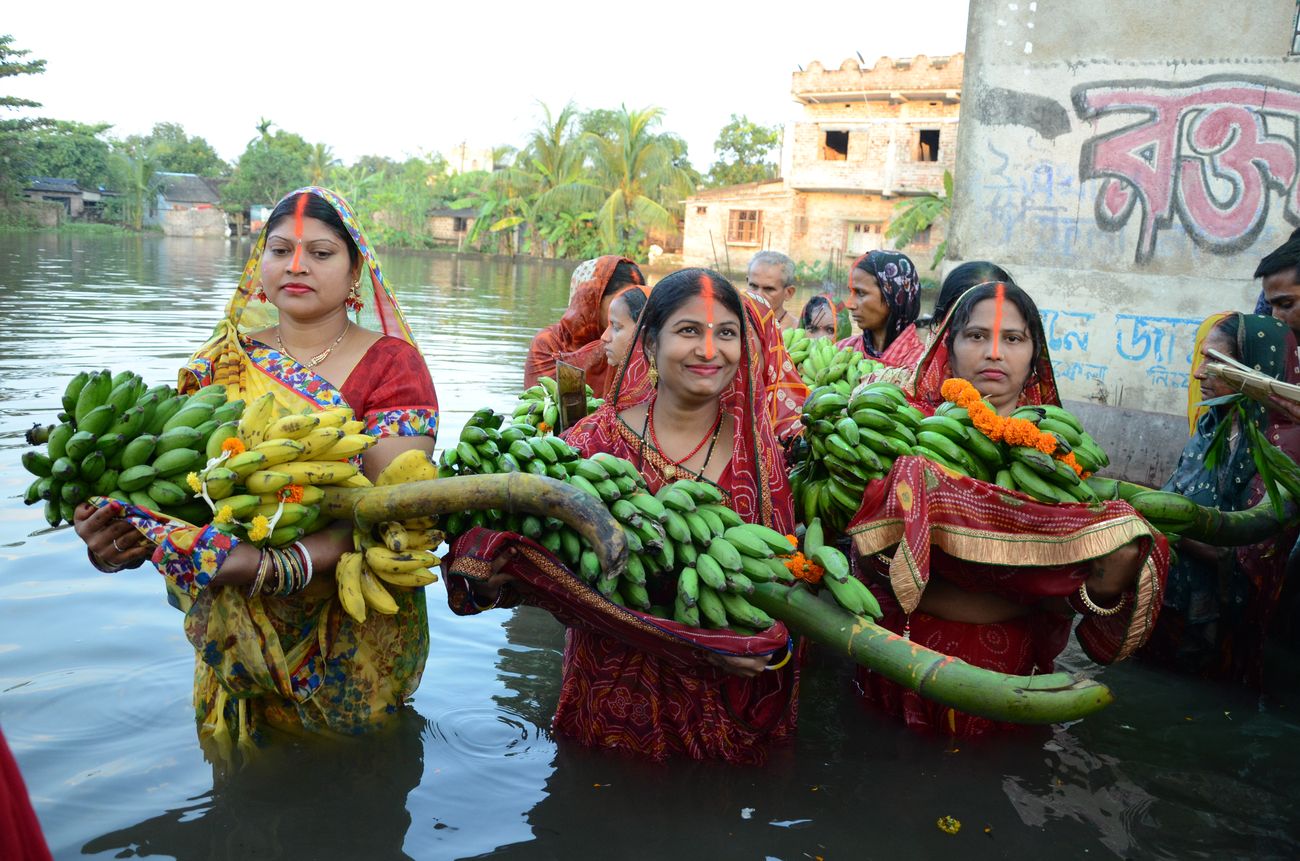
Women standing in the holy river with offerings of bananas and other fruits on the occasion of the ancient Vedic festival of Chhath Puja which is celebrated primarily in Bihar © PHOTO BAZAR INDIA
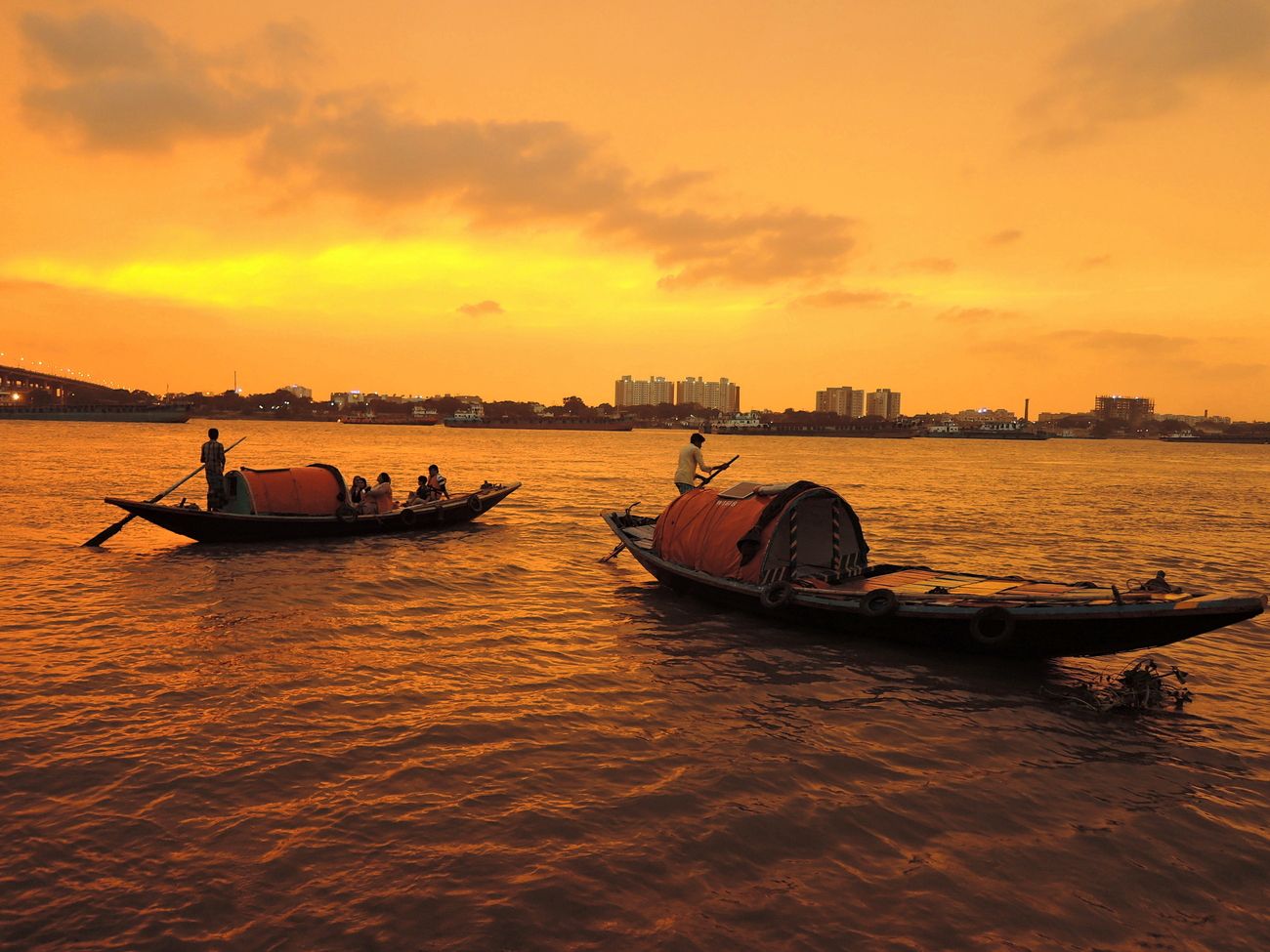
Relieve the Kolkata Charm as you soak in the splendor of the setting sun while drifting on the Hooghly river © Saurav022
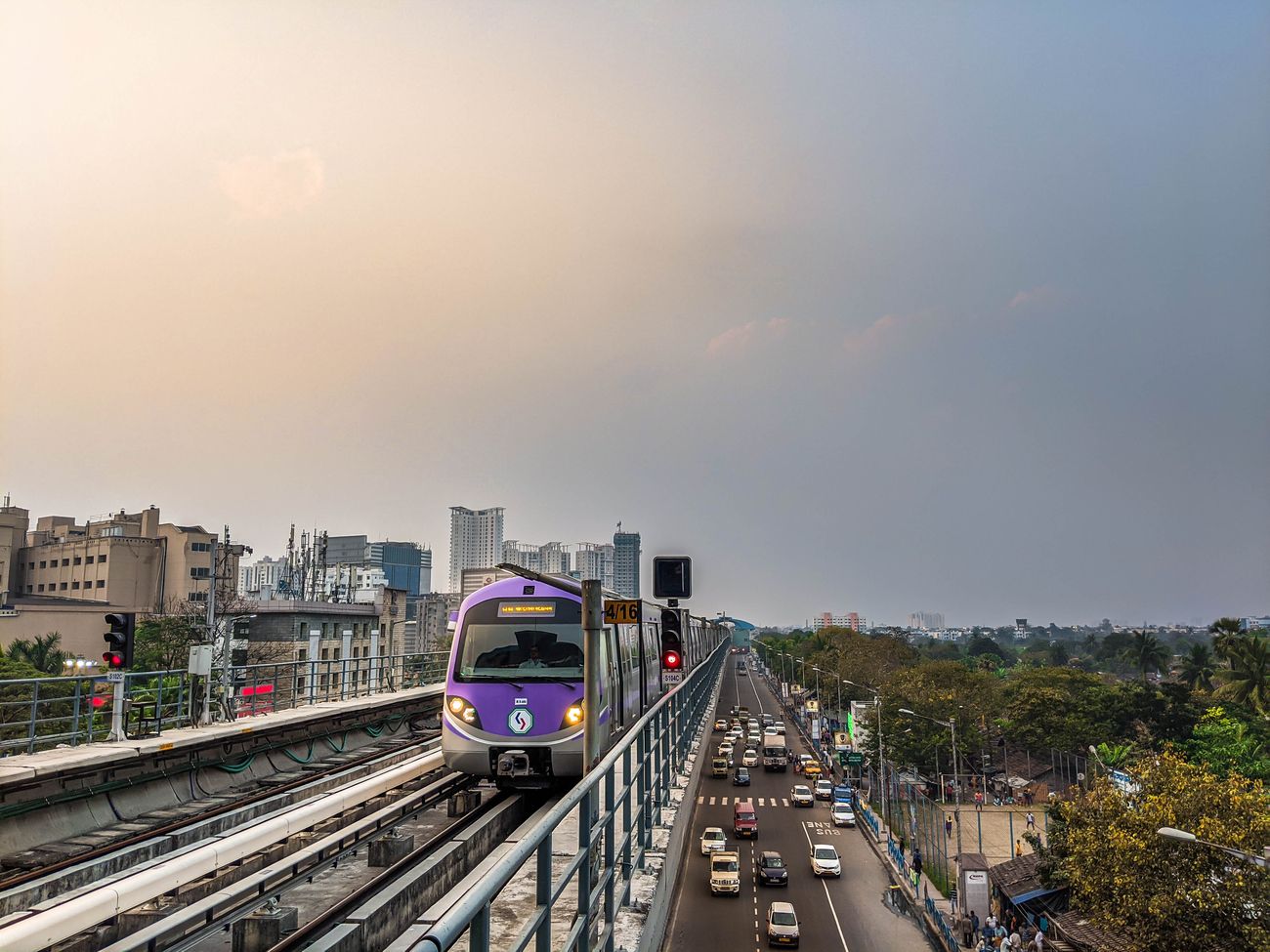
Traffic drives parallel to the overhead East-West metro rail route in Kolkata © rahul09
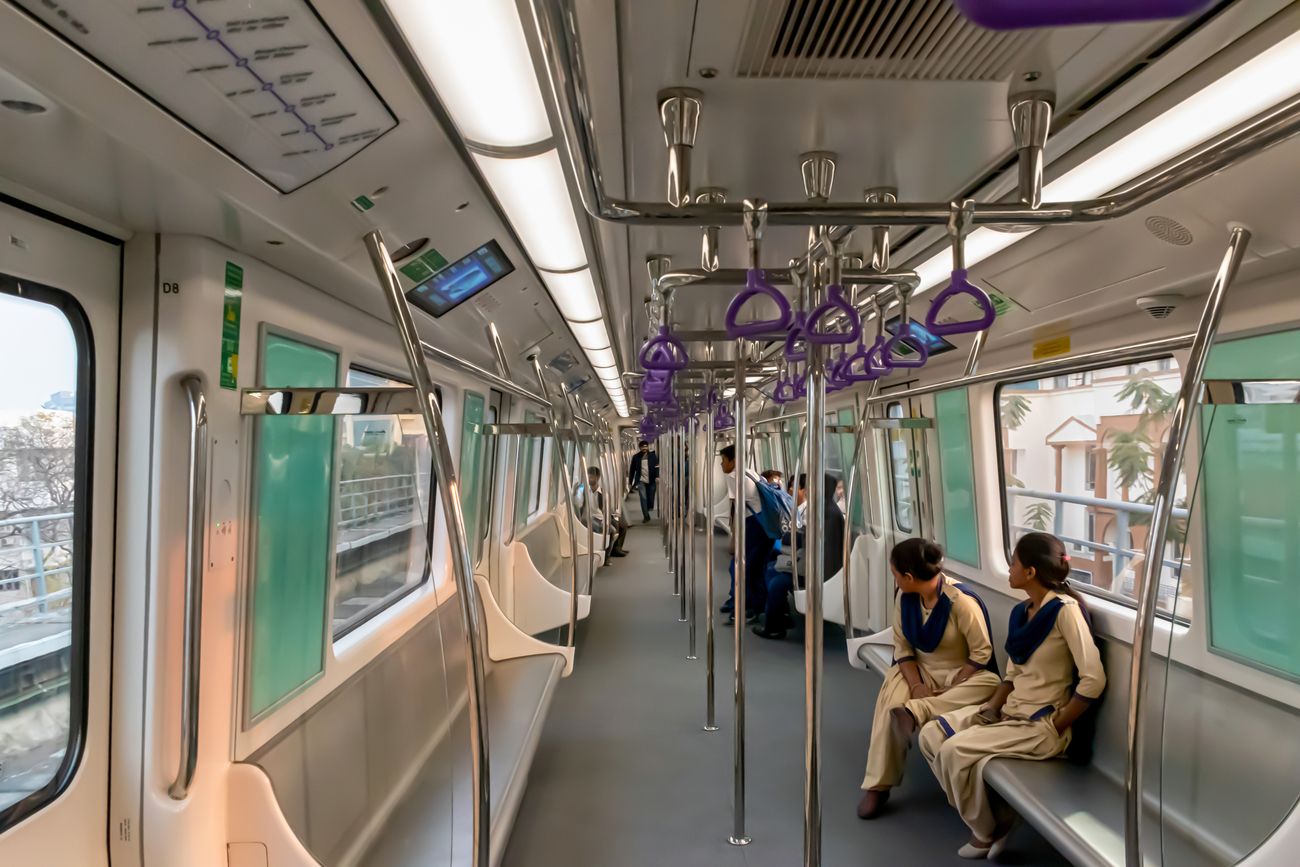
A group of passengers sitting inside the Metro rail in Kolkata waiting for the arrival of their stops © Sudip Biswas
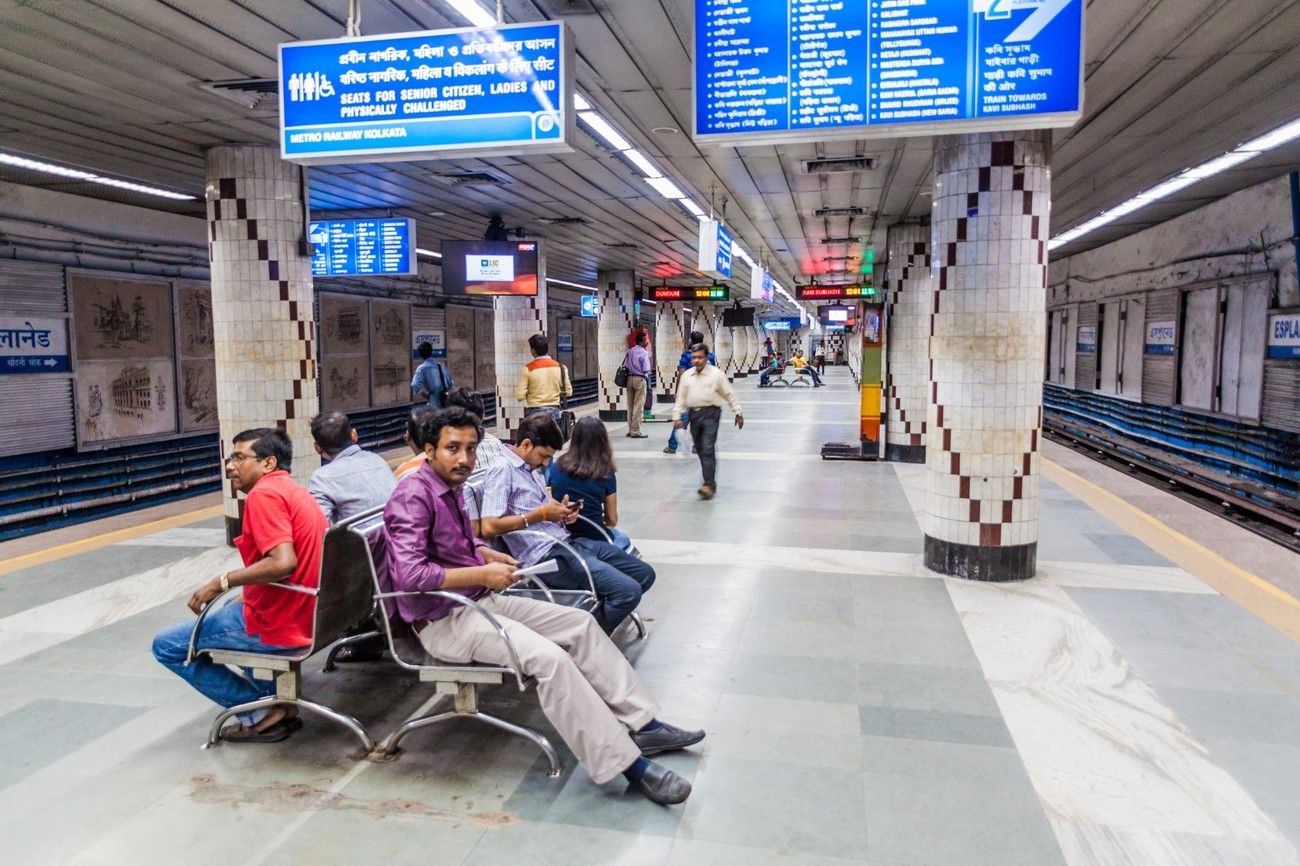
A group of commuters waiting at the platform, waiting for the Metro train to arrive, in Esplanade, Kolkata
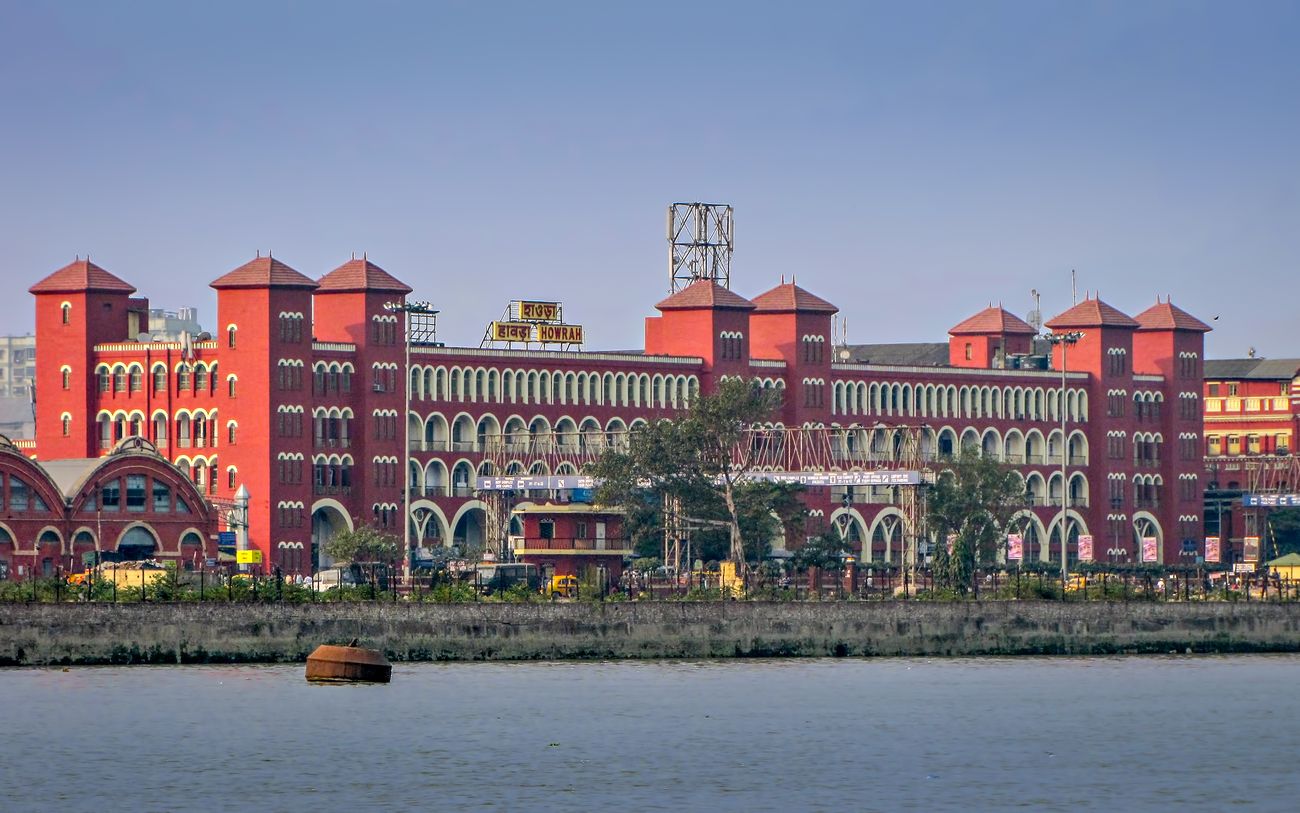
View of the Howrah Railway Station, the oldest and largest railway complex in India, across Hooghly River in Kolkata, West Bengal, India © Lalam photography
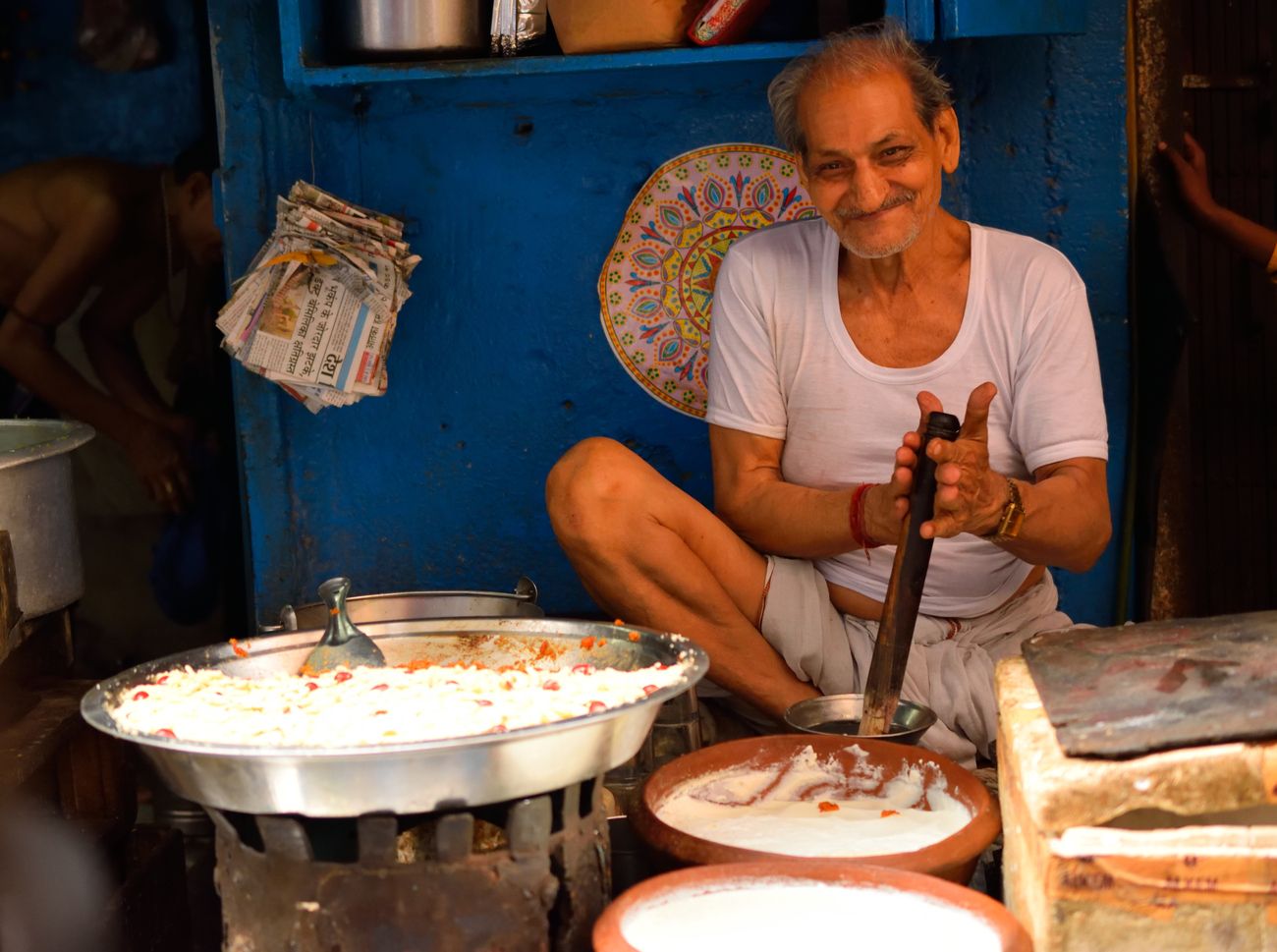
A local vendor prepares curd or doi at his shop which is considered an auspicious sweet © Saurav022
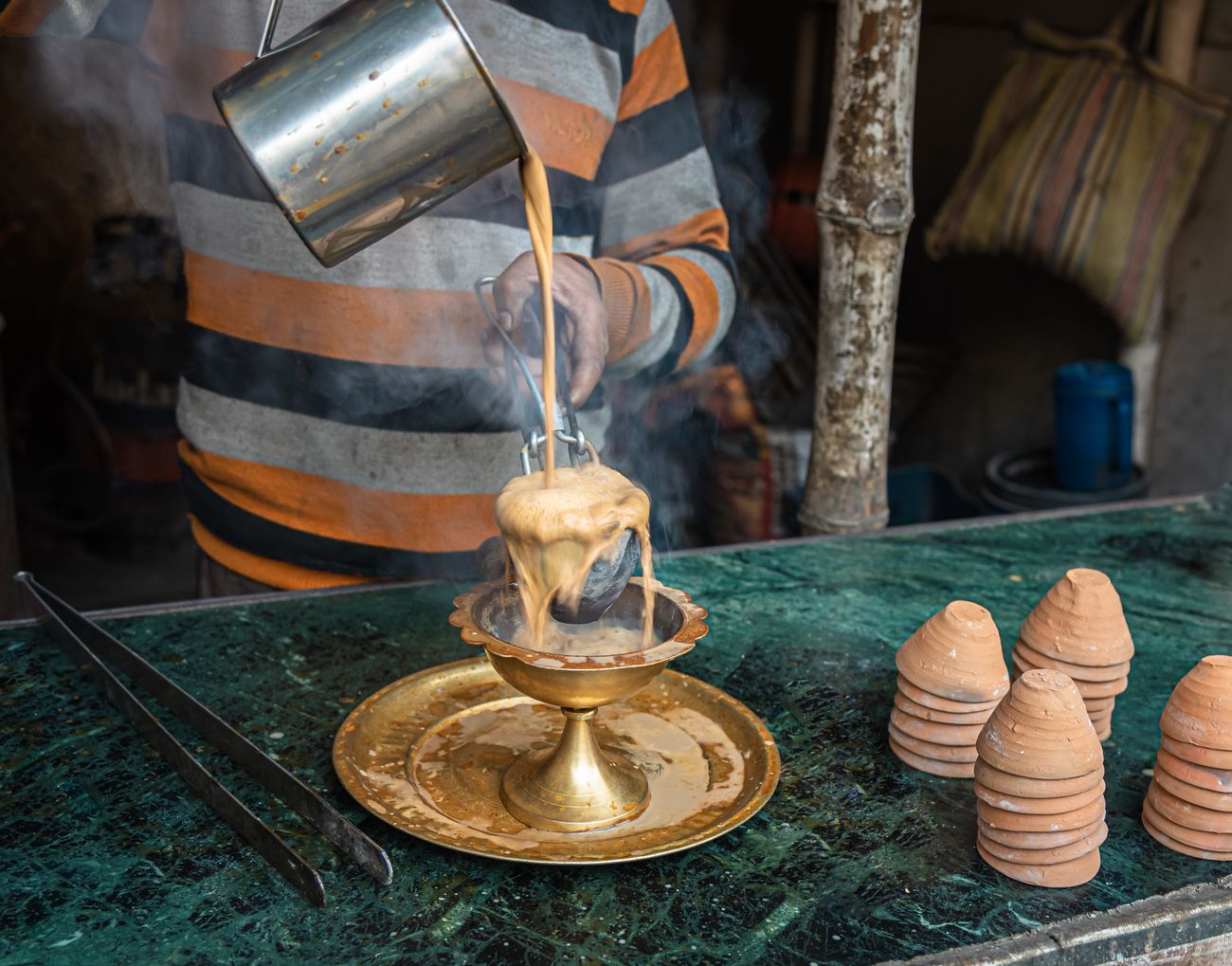
A roadside vendor in the process of preparing a mug of milk chai in a street in Kolkata © ABIR ROY BARMAN
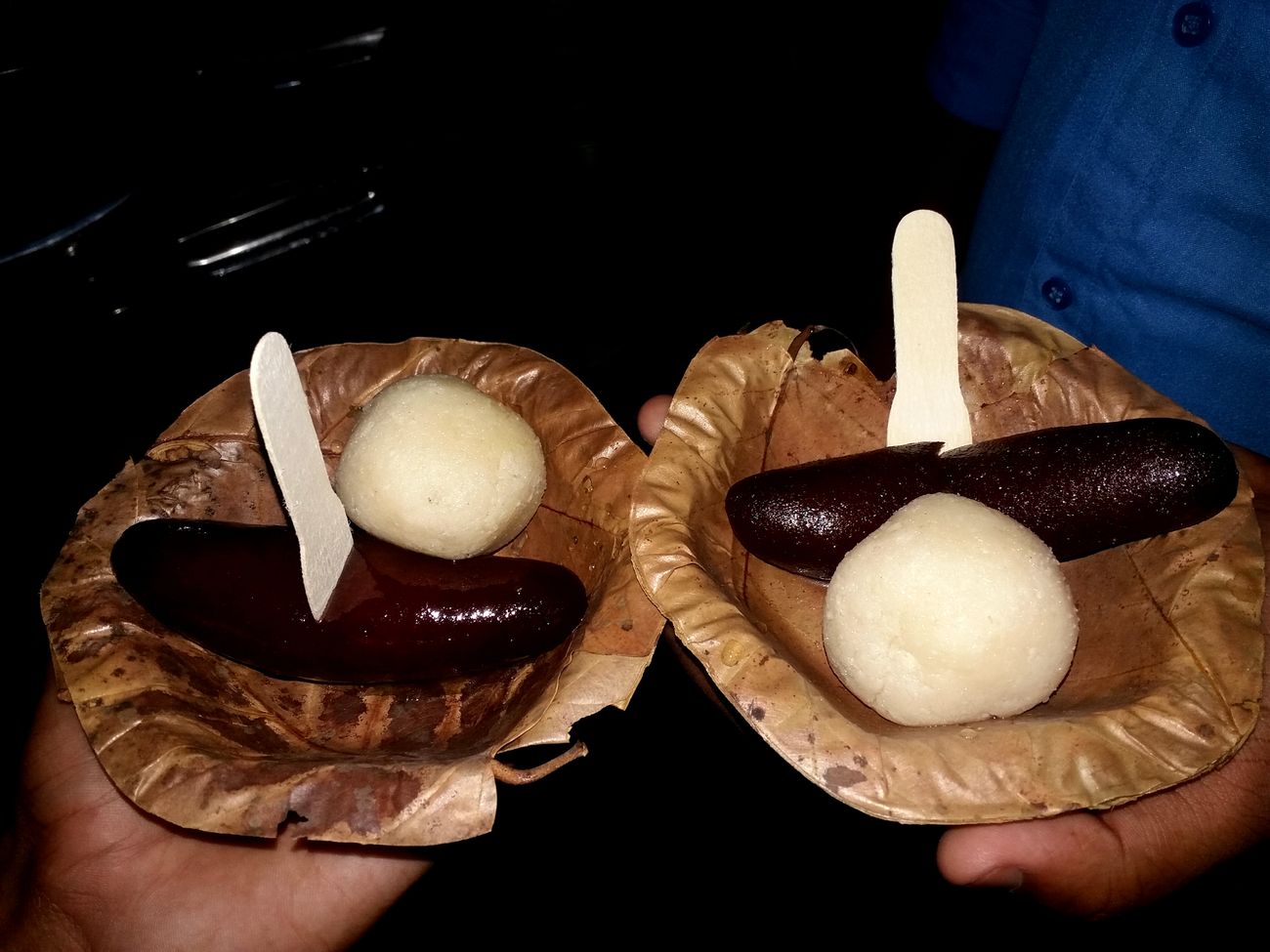
Kolkata’s specialty sweets, Roshogula and gulab jamun, as served at sweet shops on the streets © Photography the Soulmate
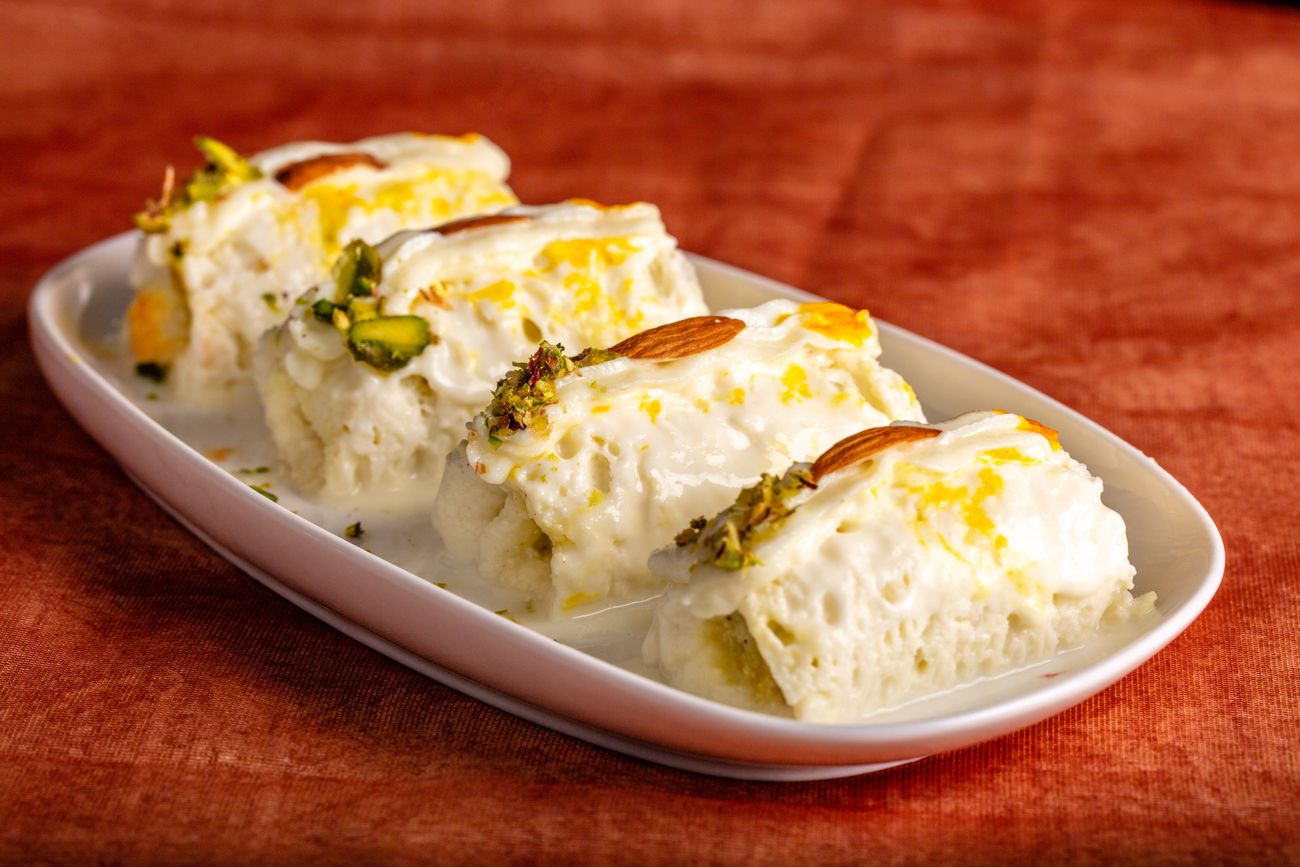
The ever-popular malai chop, also known as cream chop, a sinfully delicious dessert that is very popular in Bangladesh and West Bengal © Deepak Bishnoi
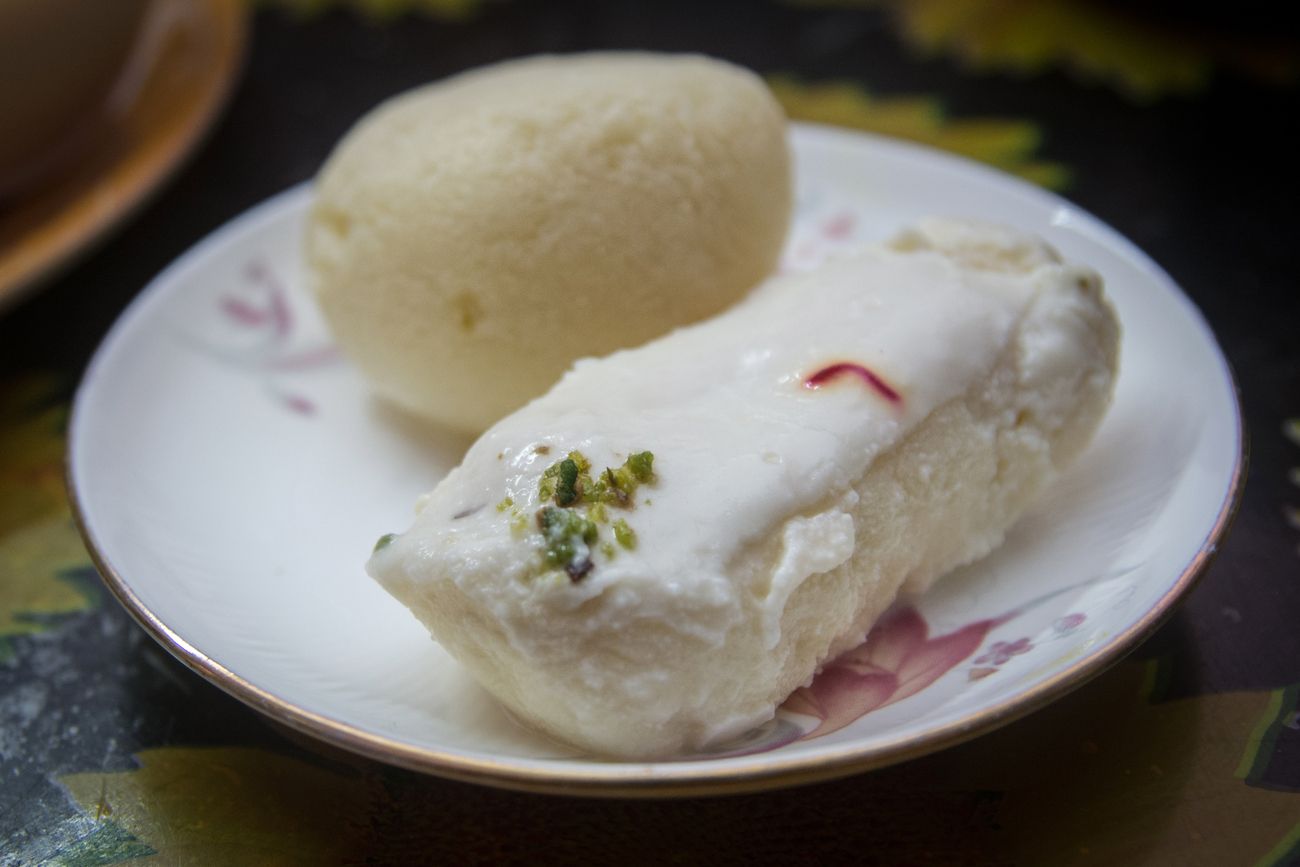
Rosgulla and Lod Chomchom are some of India’s most popular Bengali sweets © Amitpaul911
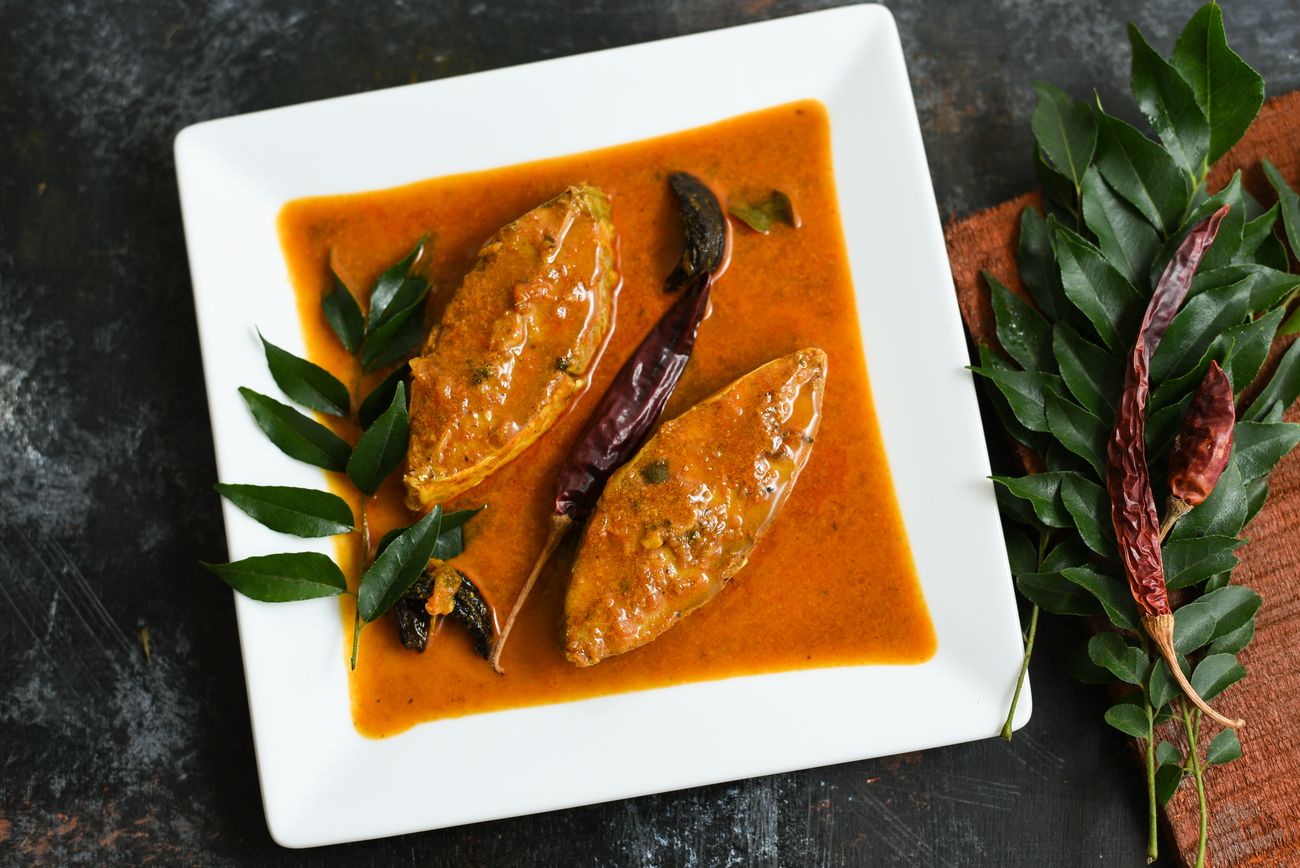
The traditional Bengali Rohu or King fish curry which is made with coconut milk, Gambooge, and turmeric, and is very popular across Bengal ©Santhosh Varghese
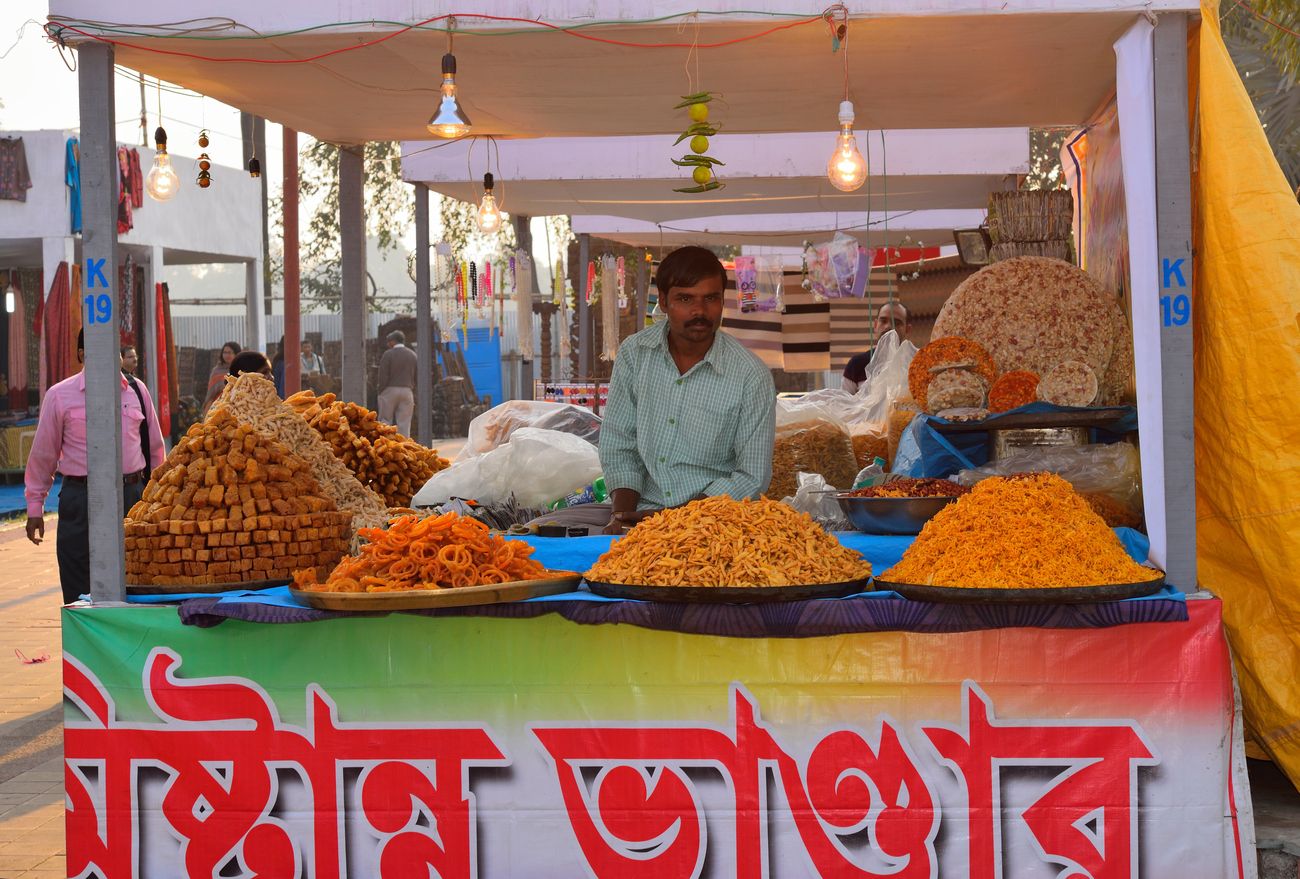
A shopkeeper selling local Indian snack mix at a roadside shop © Saurav022
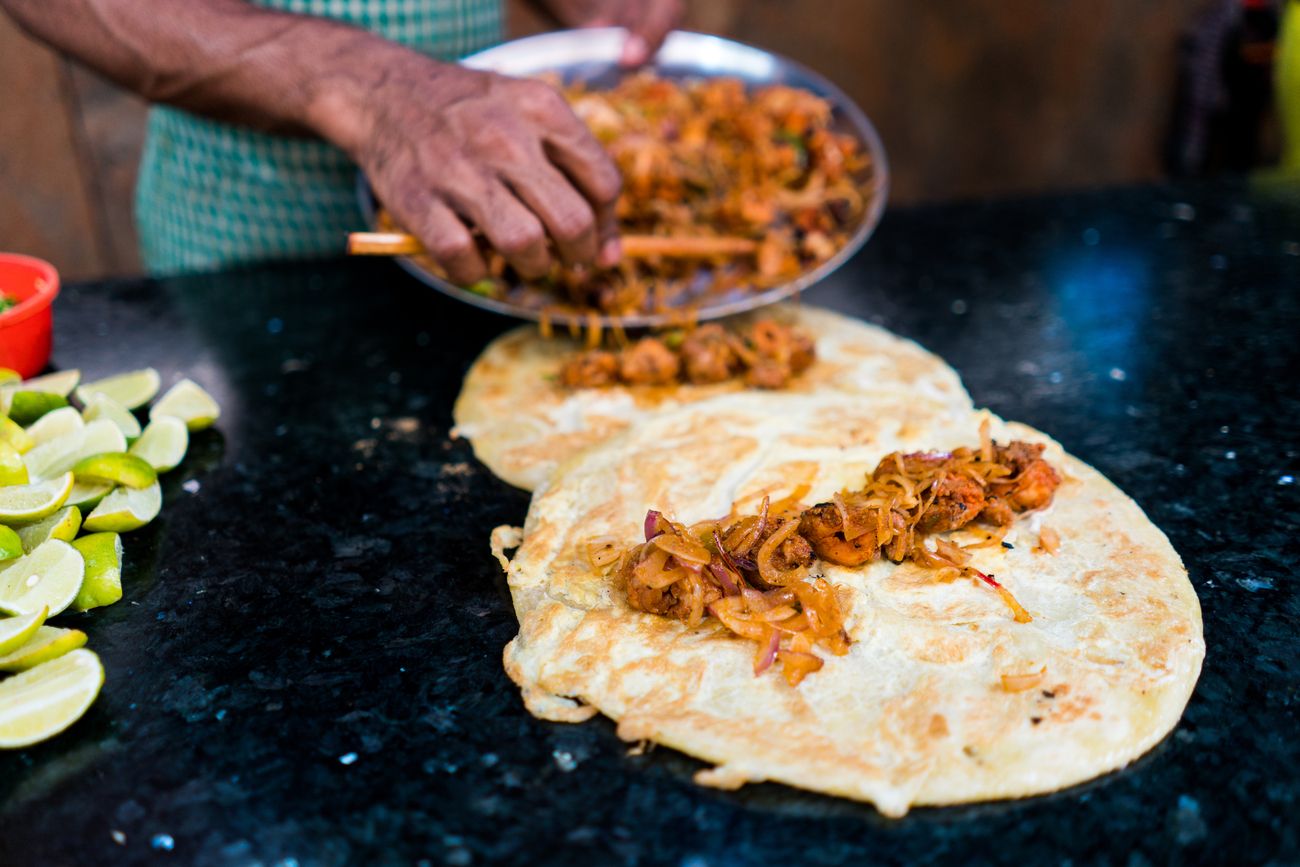
A street vendor prepares Kolkata’s renowned Kathi Rolls with chicken and egg, ready to be hit with lime juice, onion, and other toppings © Alexreynolds
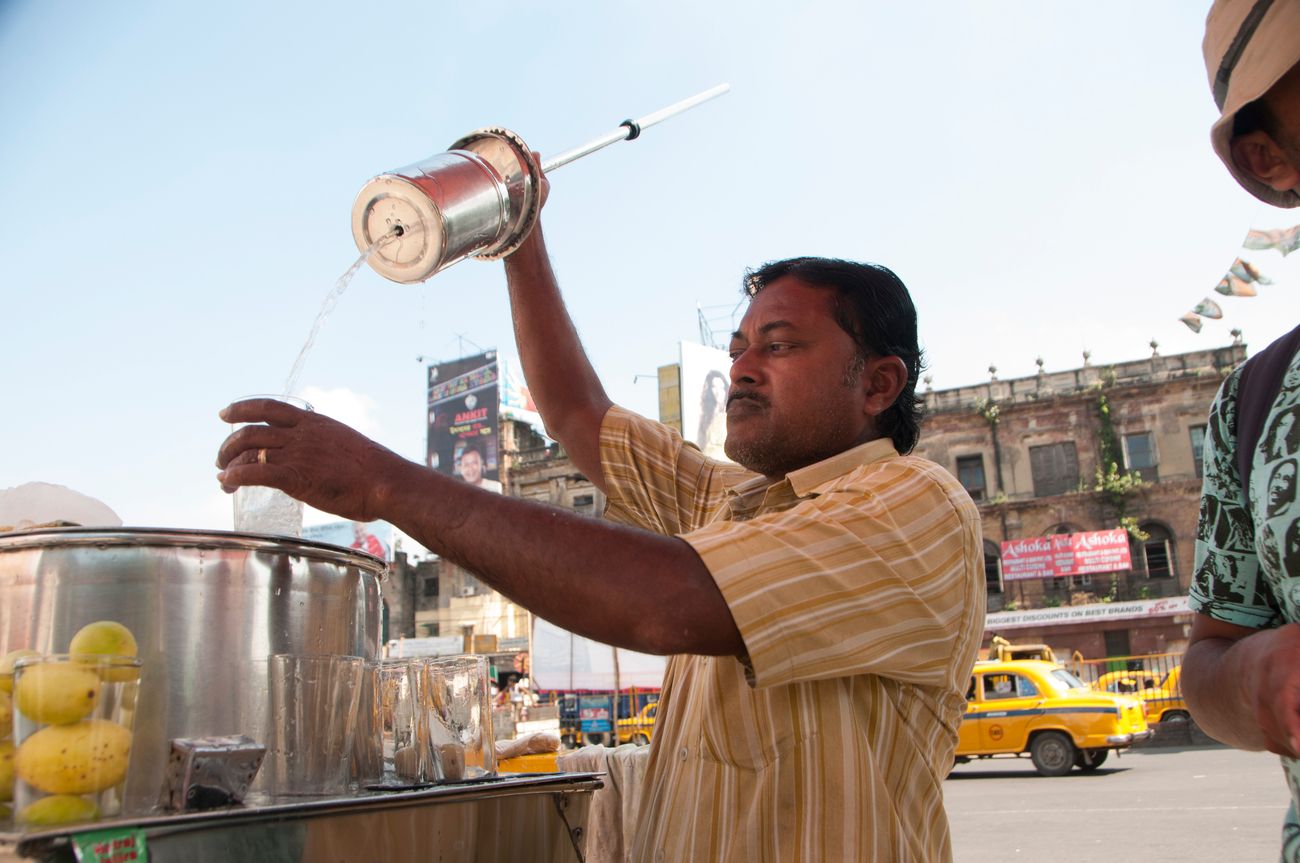
A street vendor selling Indian style lemonade on the streets of Kolkata © CRS PHOTO
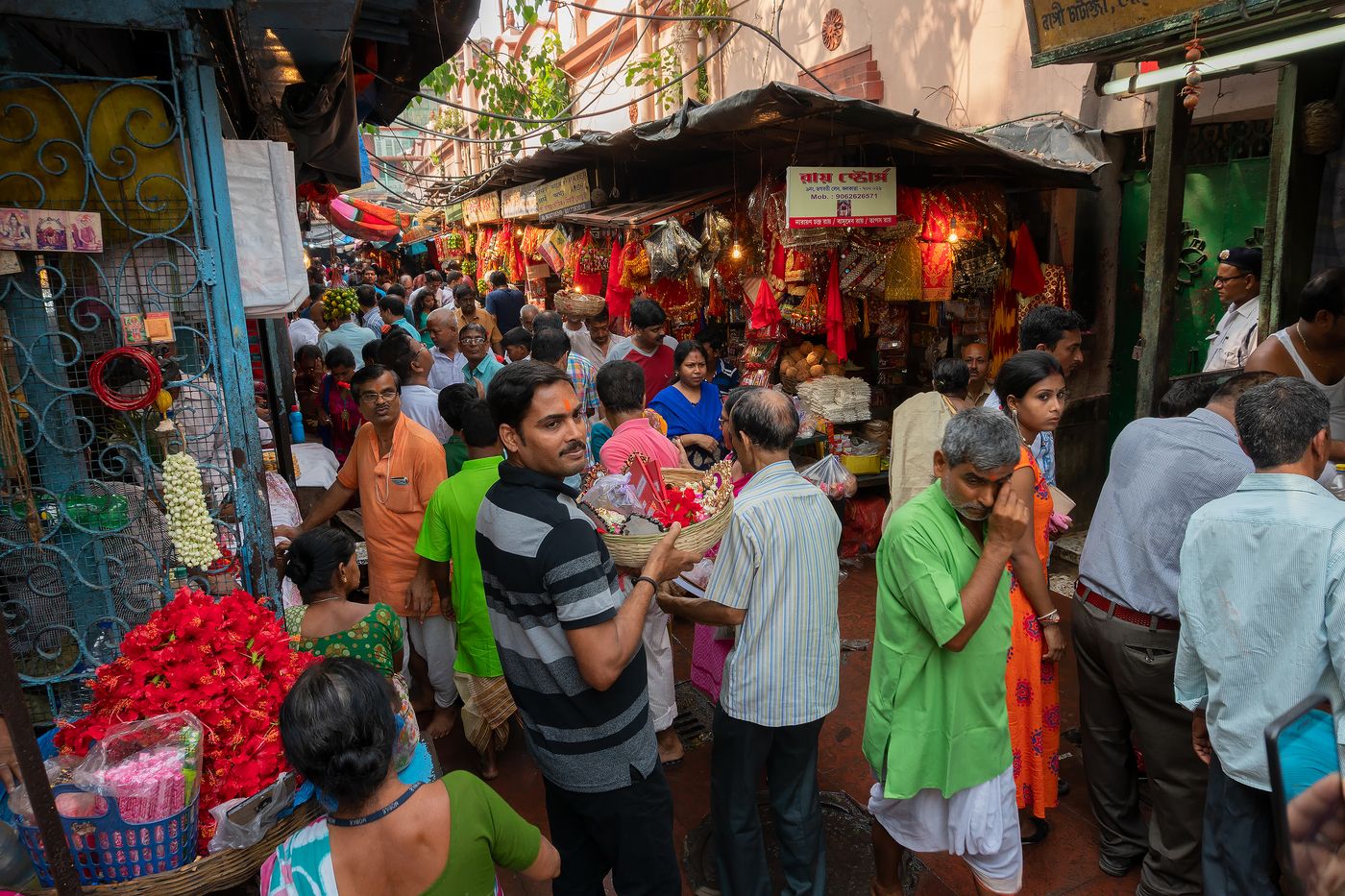
A man carries in tokri (wooden basket) flowers, idols of Lord Ganesha and Goddess Lakshmi, on his way to Kali Temple in Kolkata © Rudra Narayan Mitra
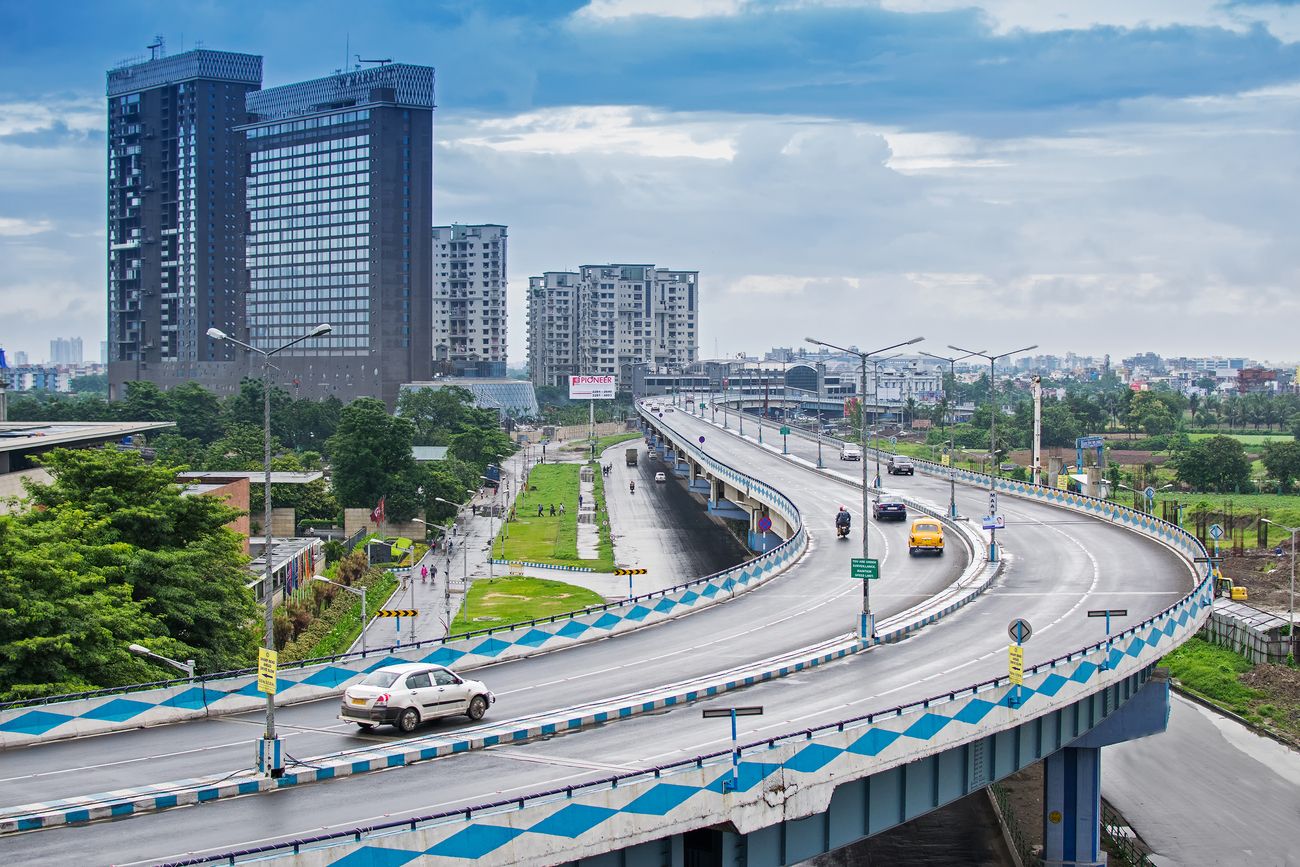
. An aerial view of the 4.5 km long Parama Island flyover in Kolkata, also known as Ma or Maa flyover © Rudra Narayan Mitra
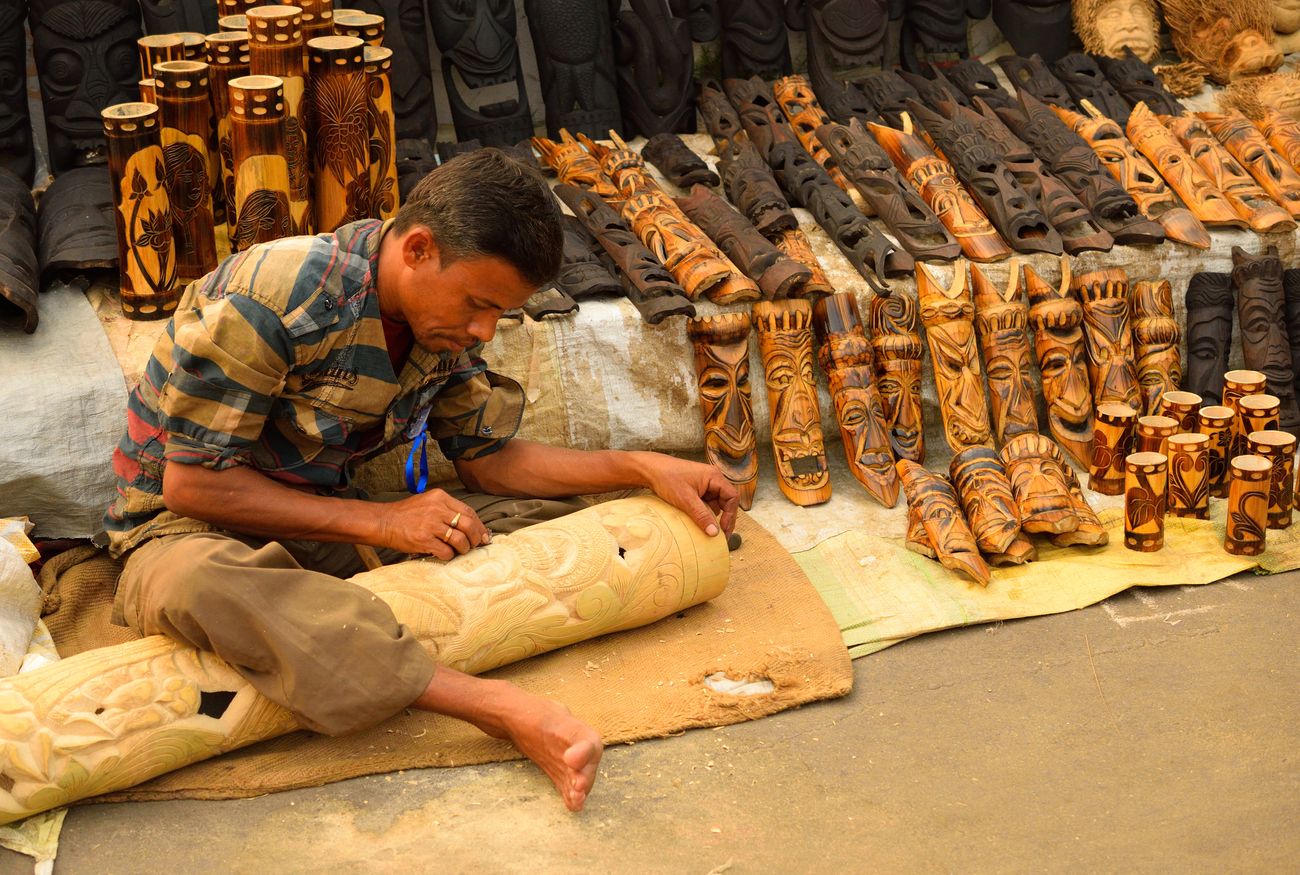
An artist at his workstation-cum-chop carving wood to create intricate tribal masks © Saurav022
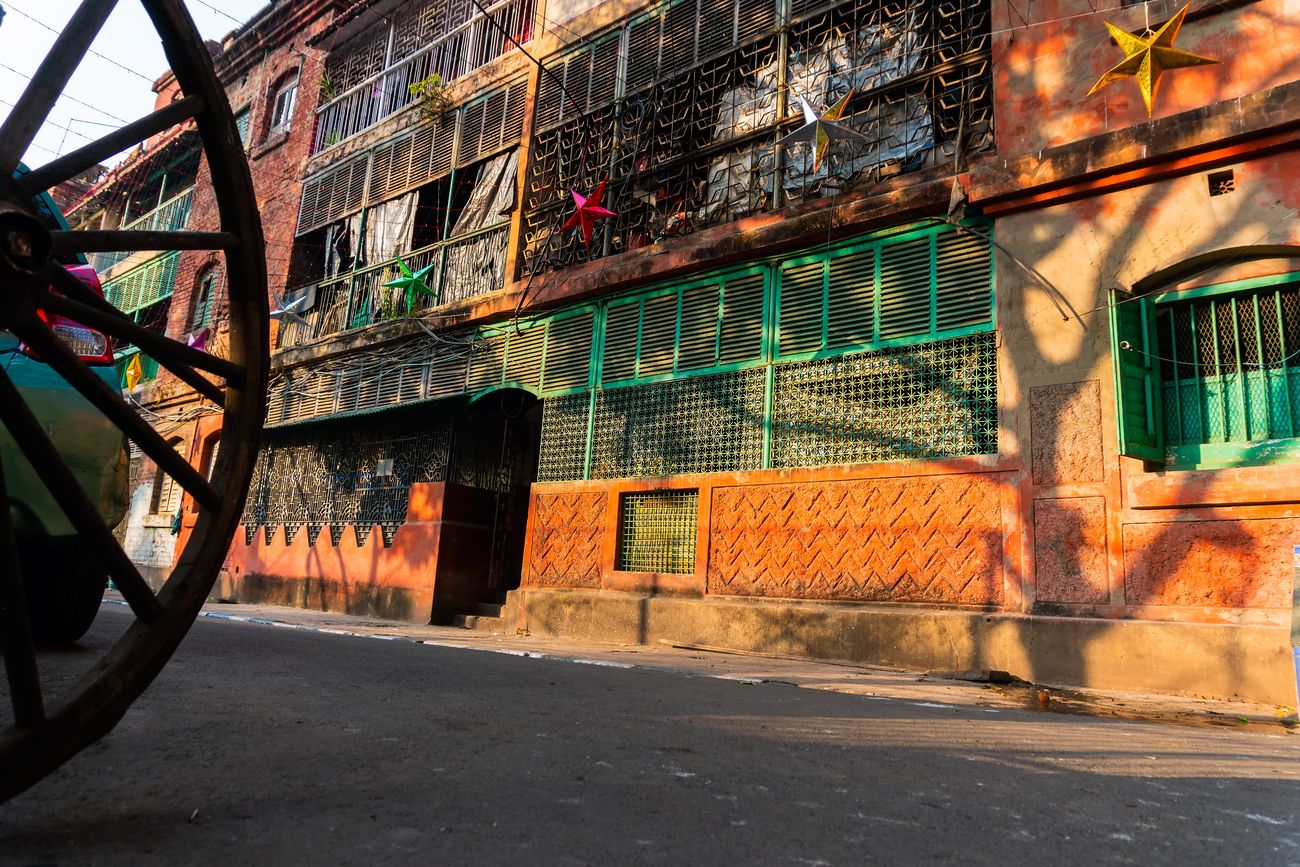
An old residential building with green windows tucked away in the lanes of Bow Barracks in Kolkata, West Bengal © Rudra Narayan Mitra
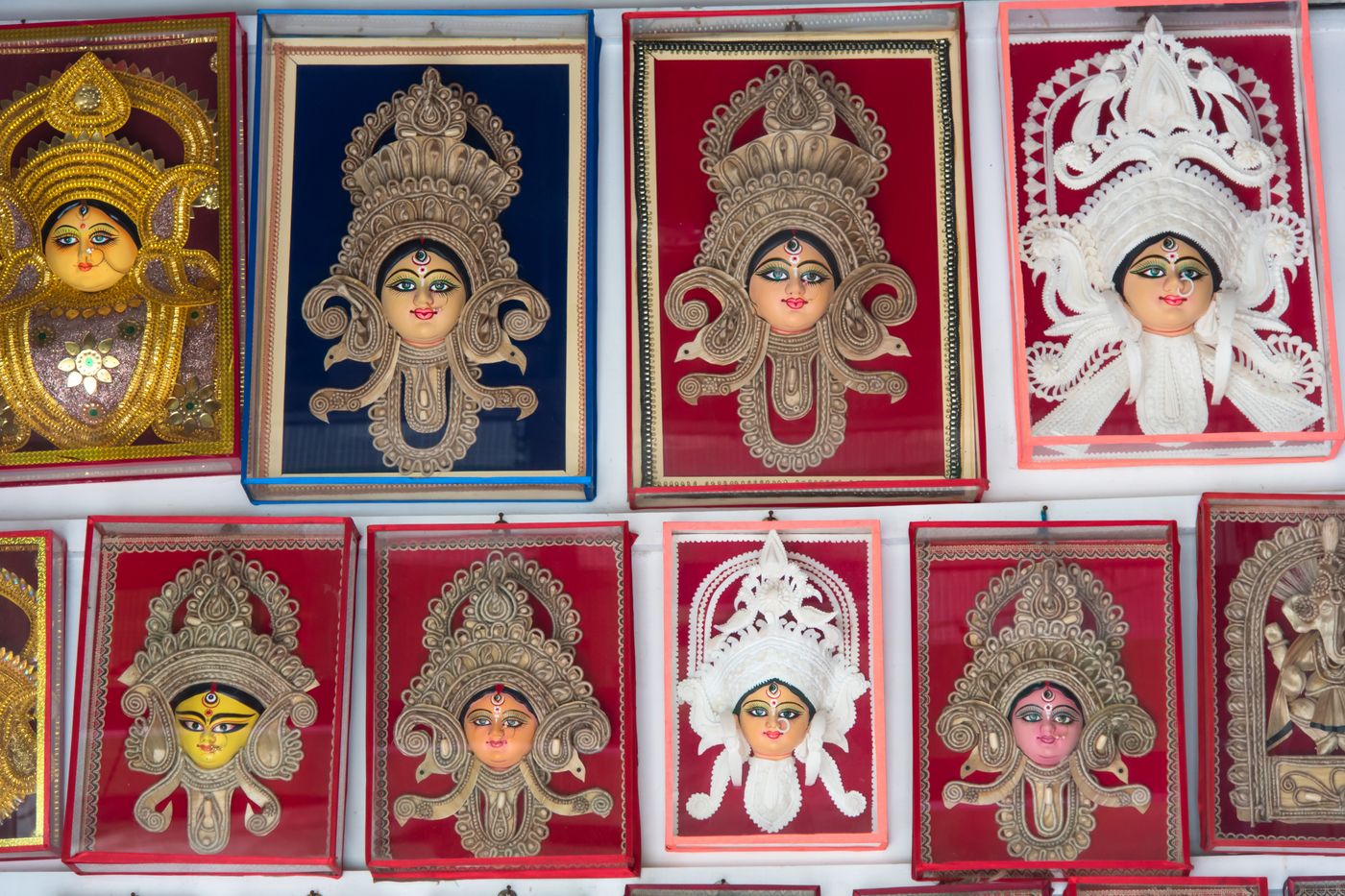
Beautifully decorated idols of the Hindu deity Durga on sale in a Kolkata shop © DebashisK
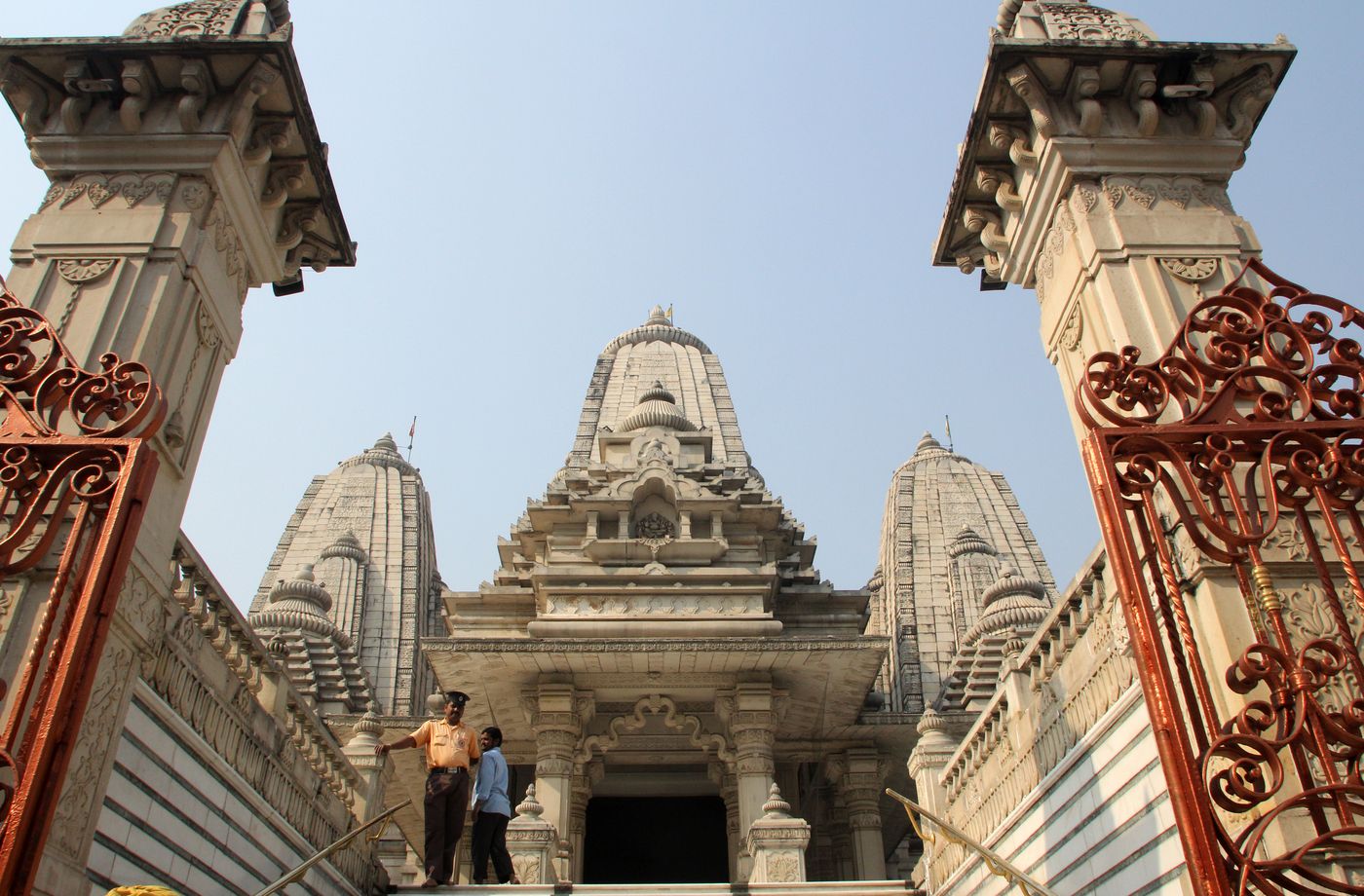
One of Kolkata’s largest Hindu Temples, Birla Mandir is an architectural masterpiece © Zvonimir Atletic
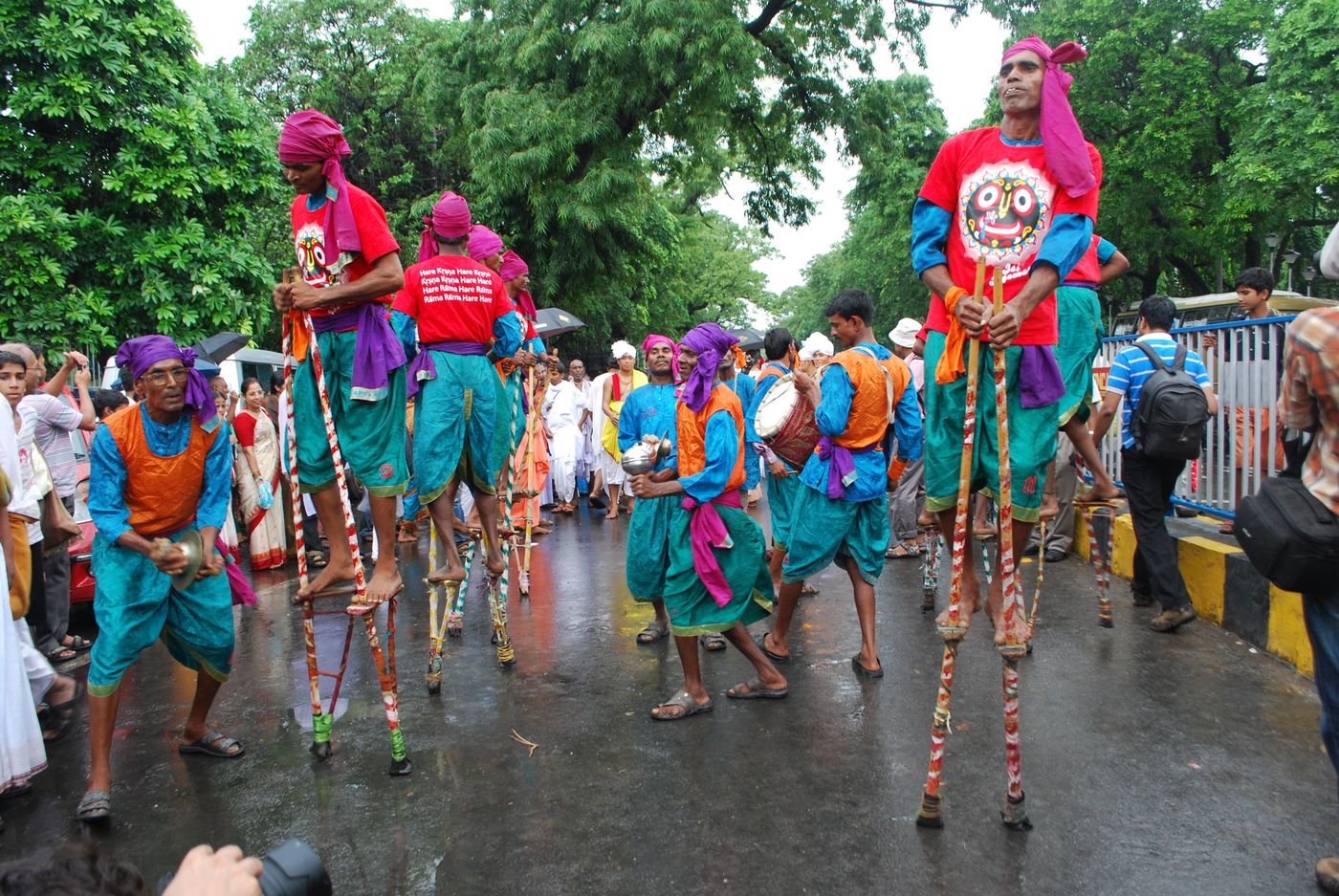
People watch colorful procession of performers during the week-long Rathyatra Festival in Kolkata © Chowdhury Arindam
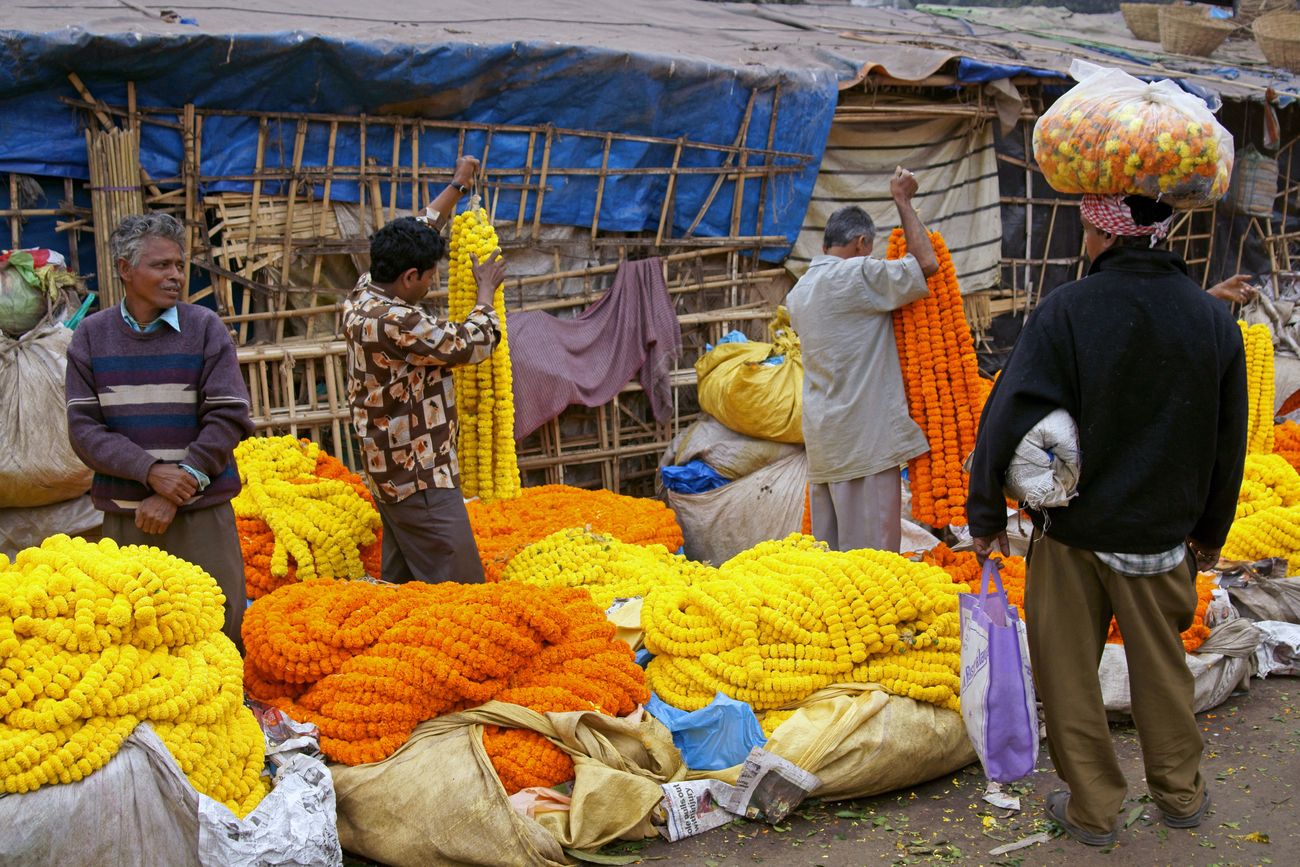
Stop by Phool Bazaar to admire all the riotous colours on display © Jeremy Richards
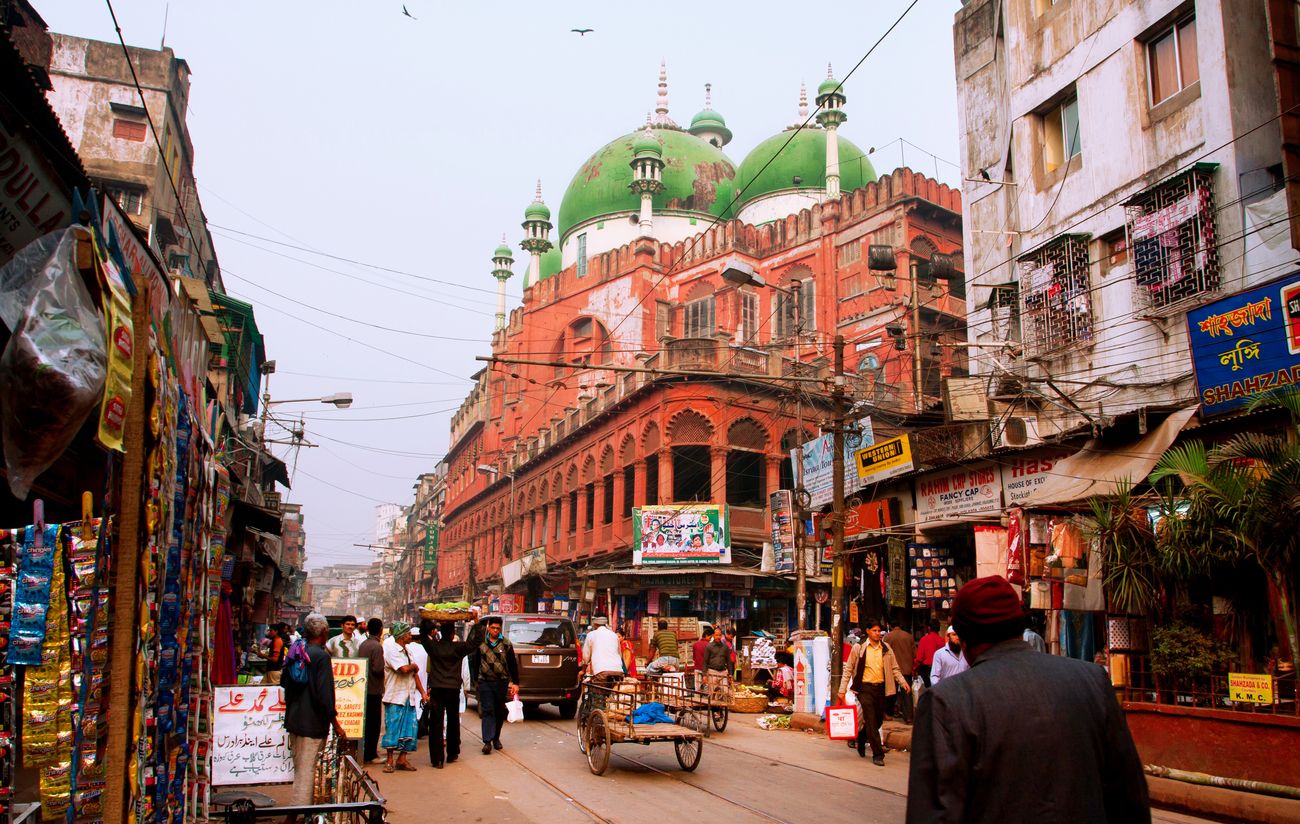
The busy street next to Nakhoda Masjid mosque of Kolkata which was built in the year 1926, incurring a cost of INR 1,500,000 at the time © Radiokafka
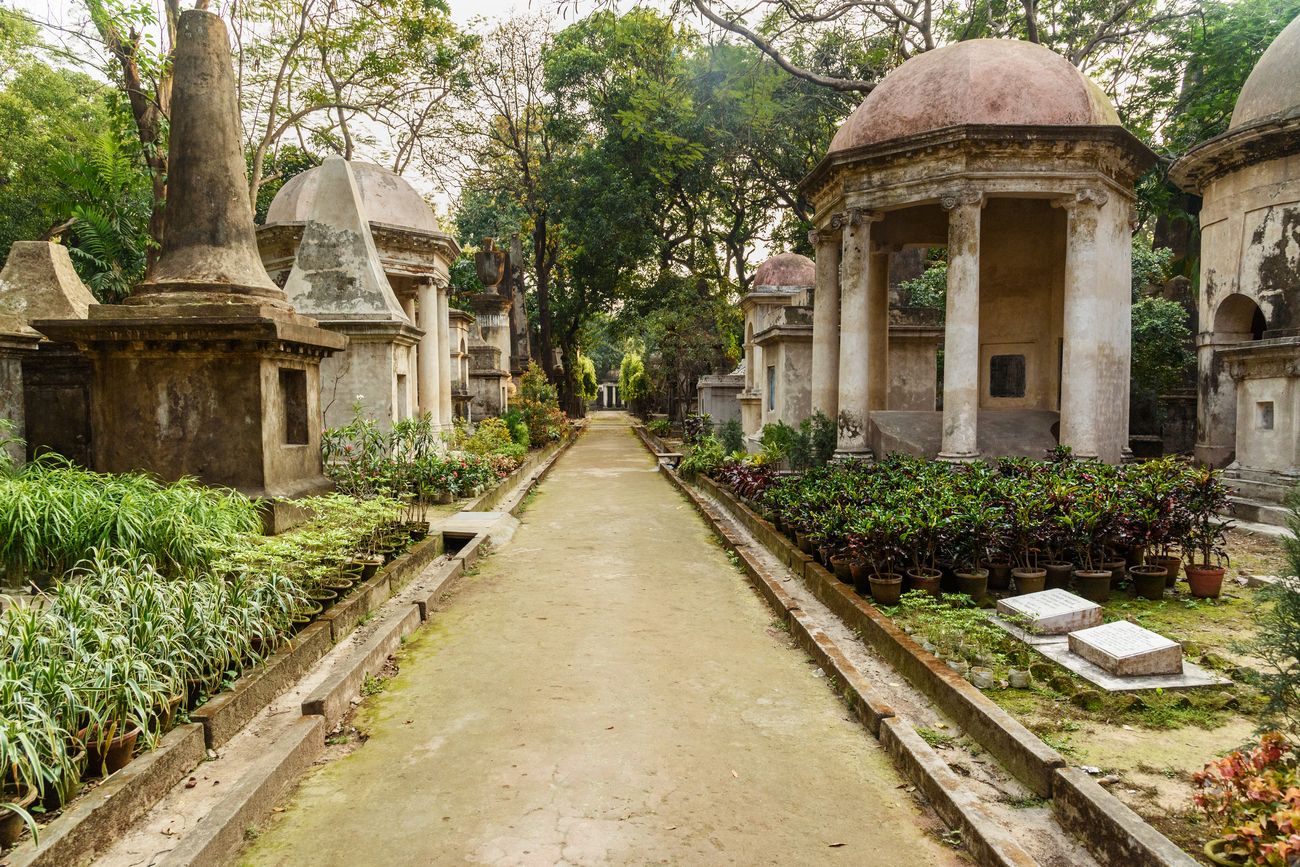
The famous South Park Street Cemetery for Christians which was opened in 1767© lena Odareeva
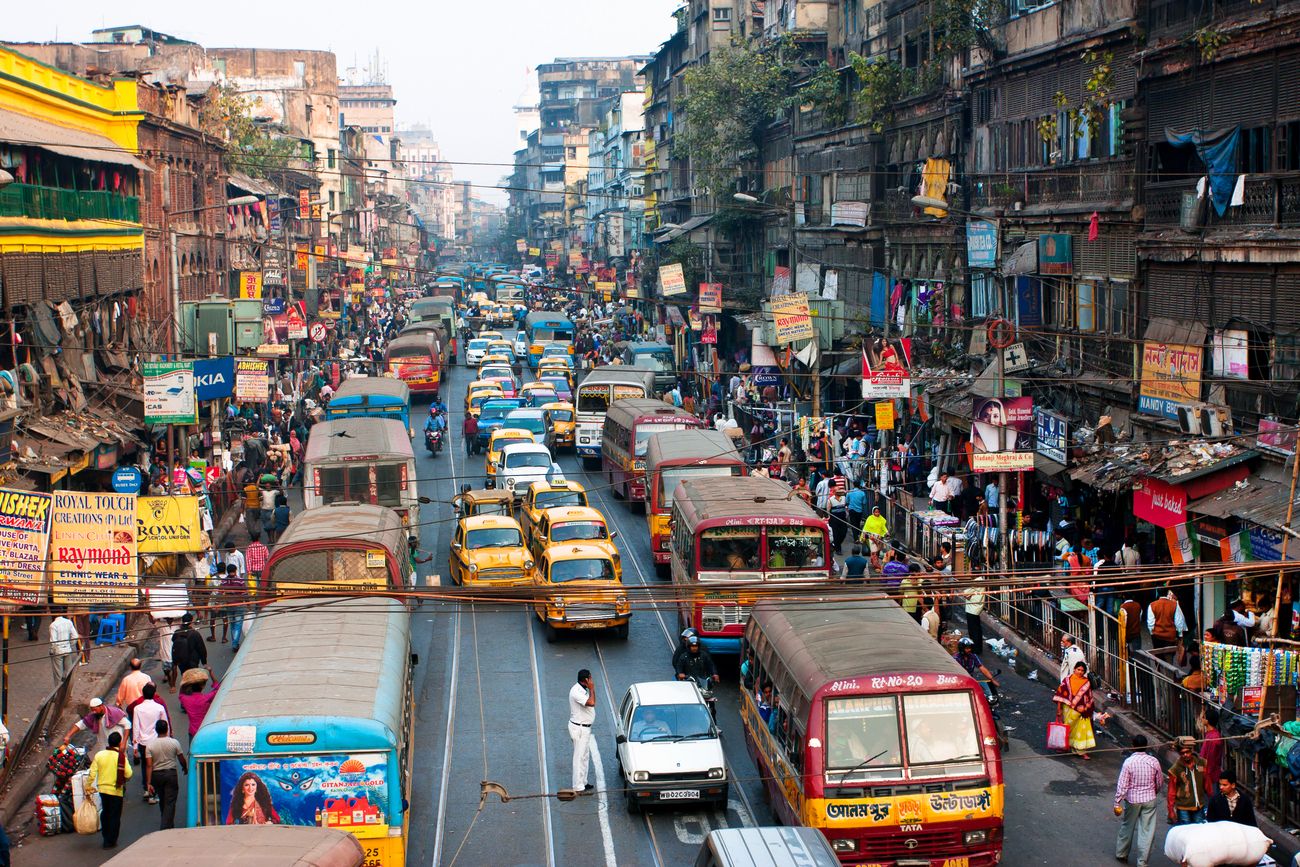
The past and the present collide in the streets of Kolkata. Chitpur, located in the heart of the older, northern part of the city, is rife with beautiful colonial mansions and is notorious for congestion © Radiokafka
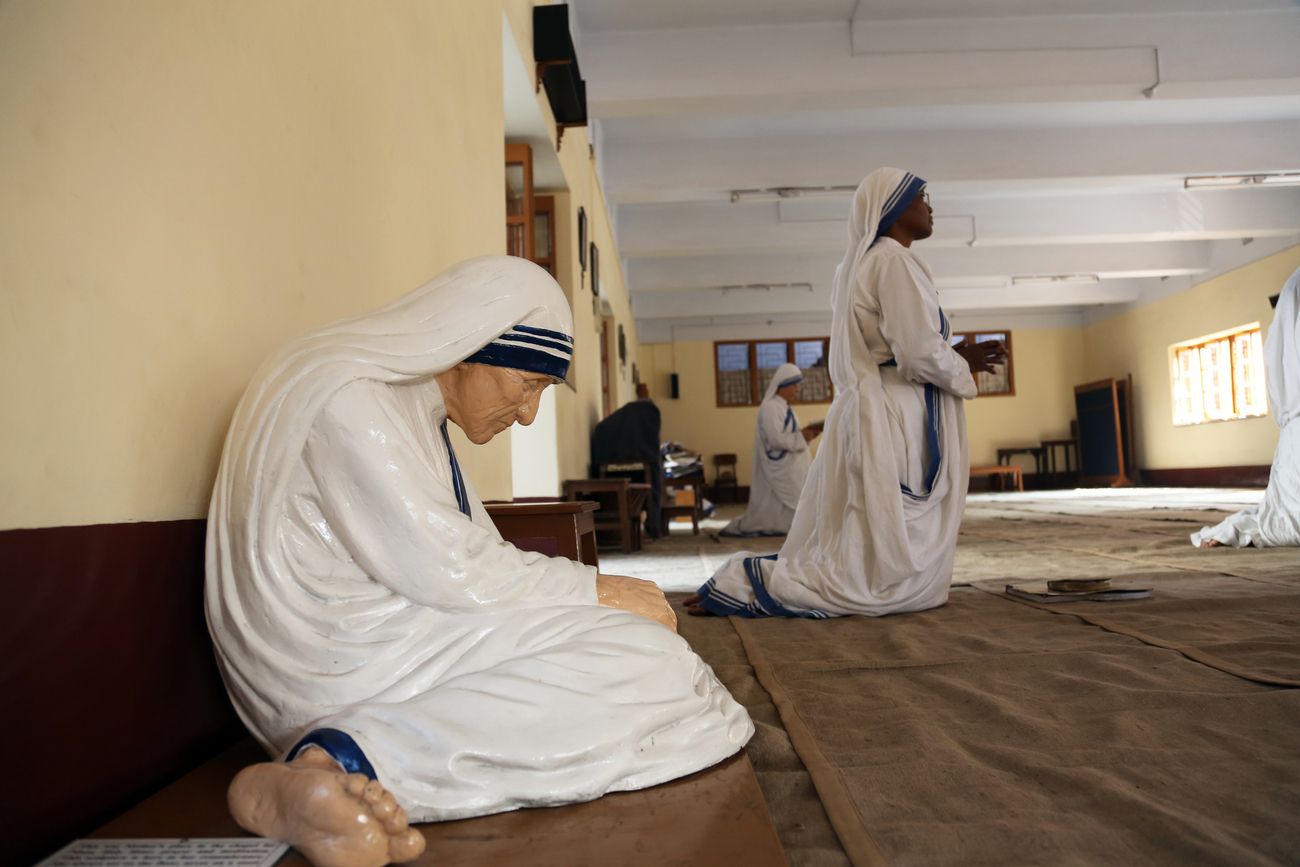
The statue of Mother Teresa in her prayer pose at the Chapel of the Mother House in Kolkata © Zvonimir Atletic
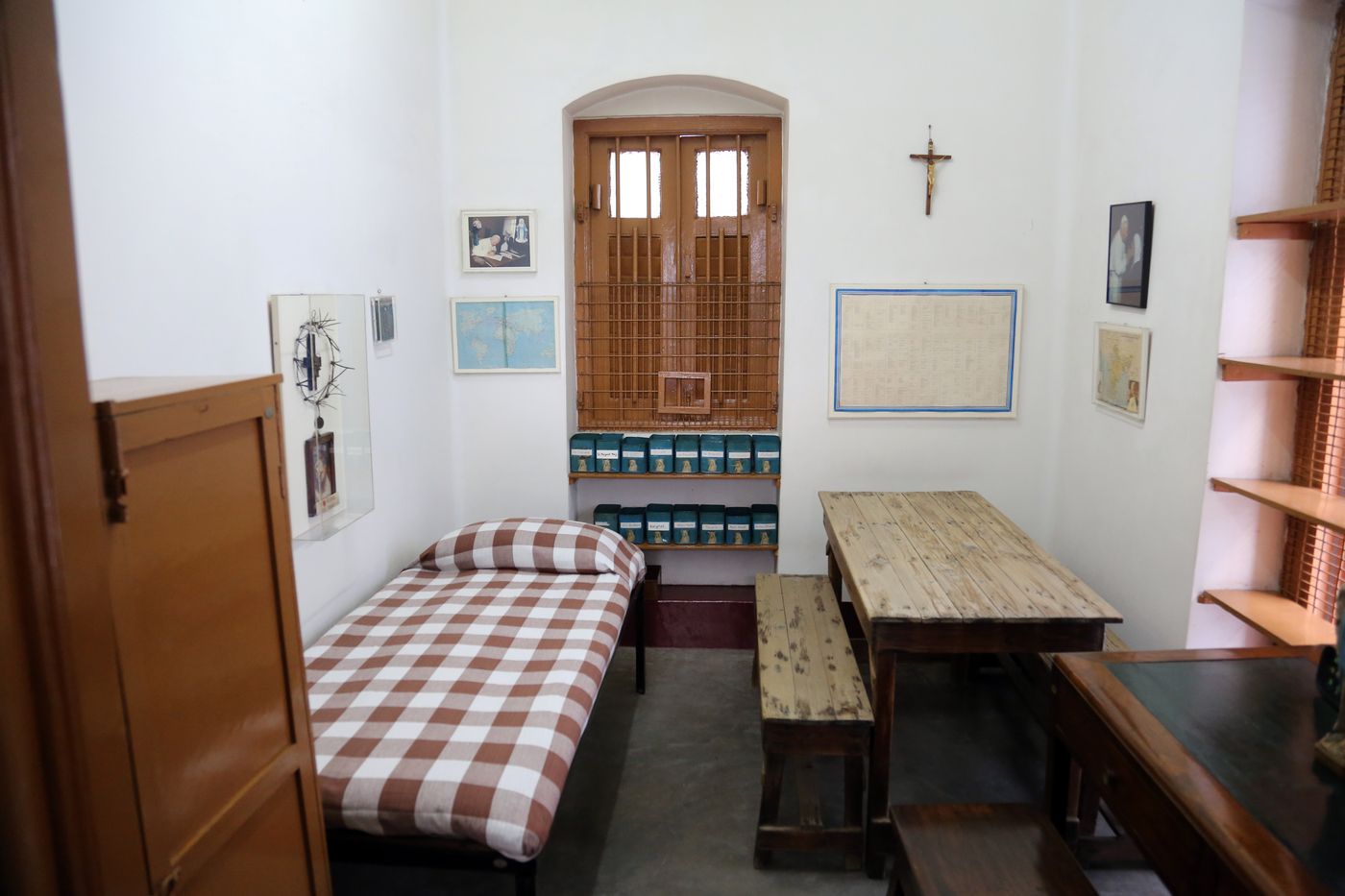
The simple, modest room at Mother House where Mother Teresa lived and was buried after her death © Zvonimir Atletic
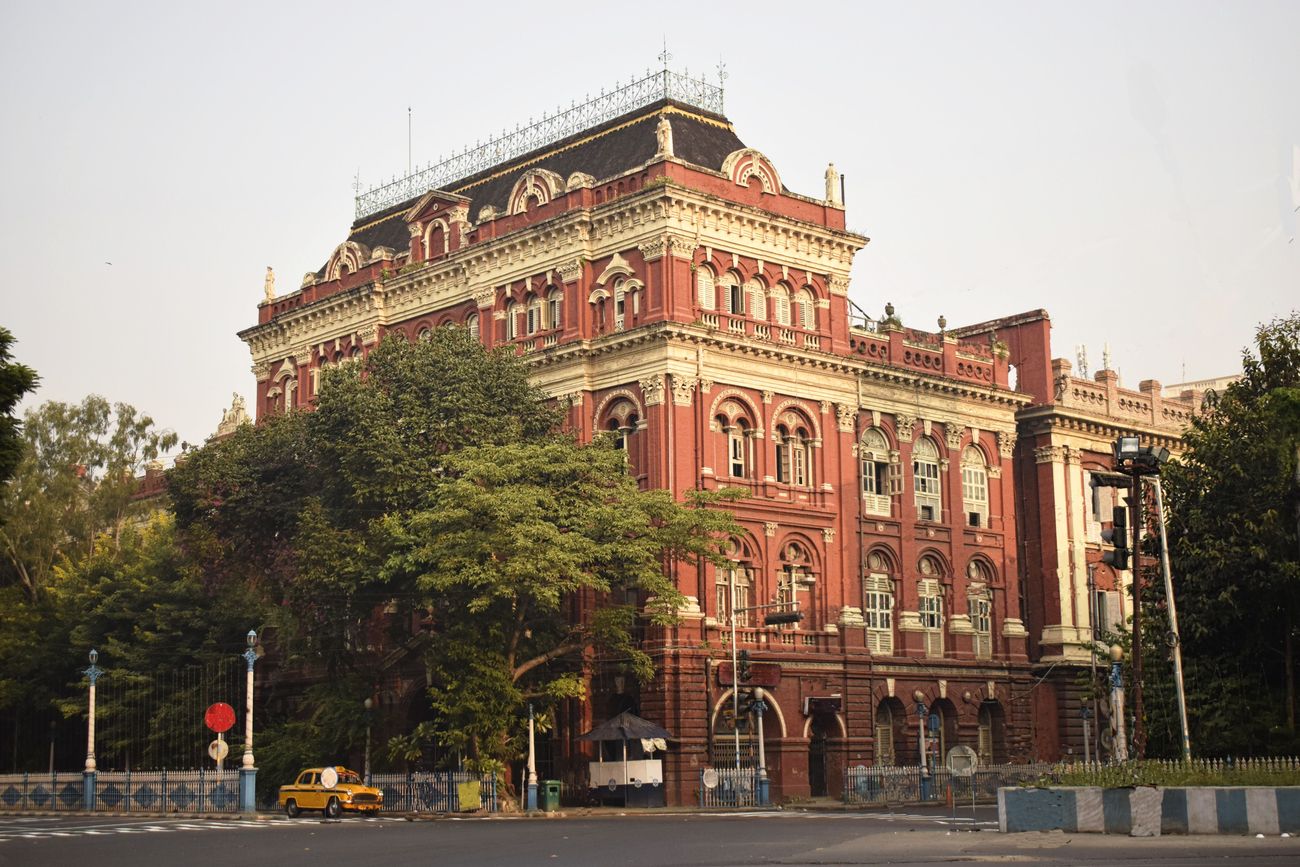
The Writers’ Building in Kolkata standing as a reminder of the colonial past © Debjit Chakraborty
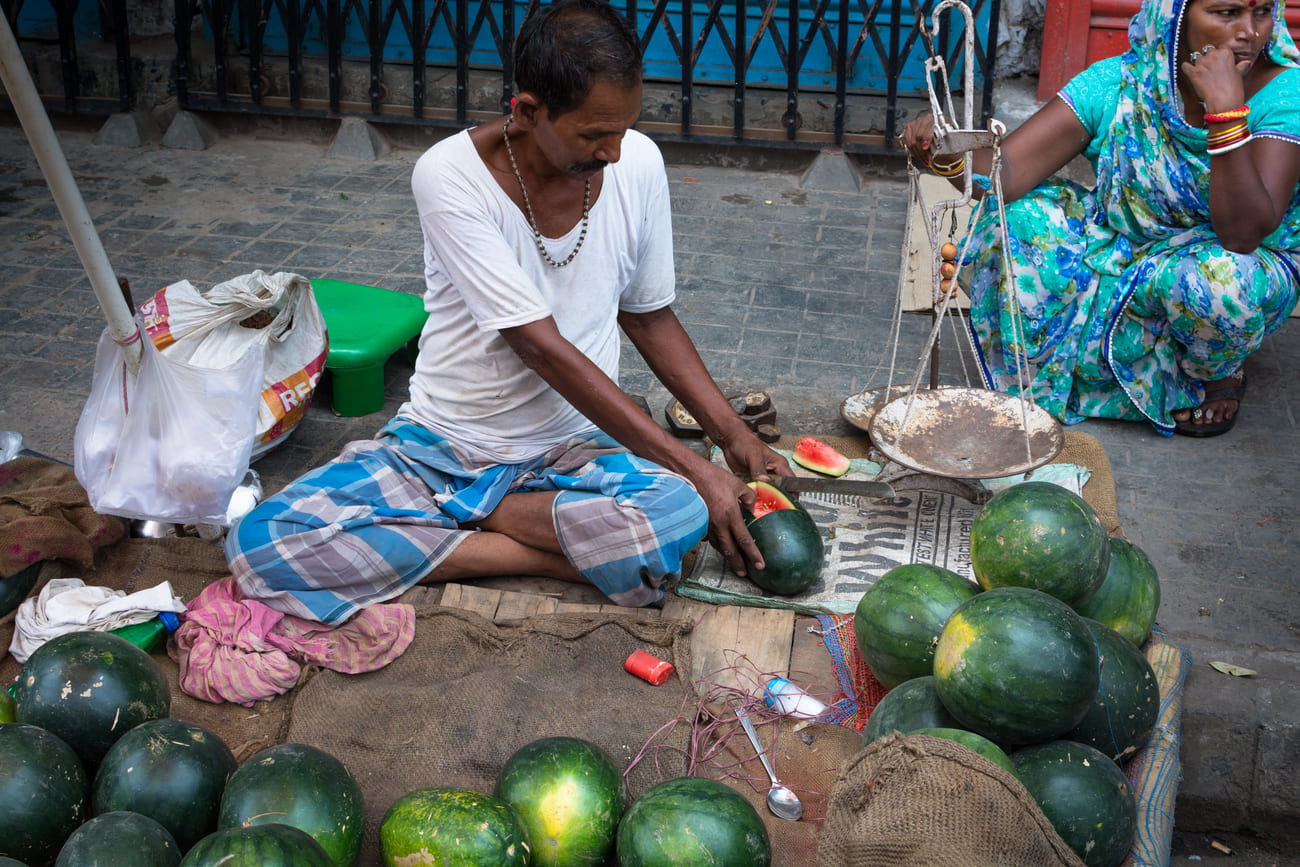
Watermelons on sale on the streets of Kolkata © Korkusung / GETTY IMAGES
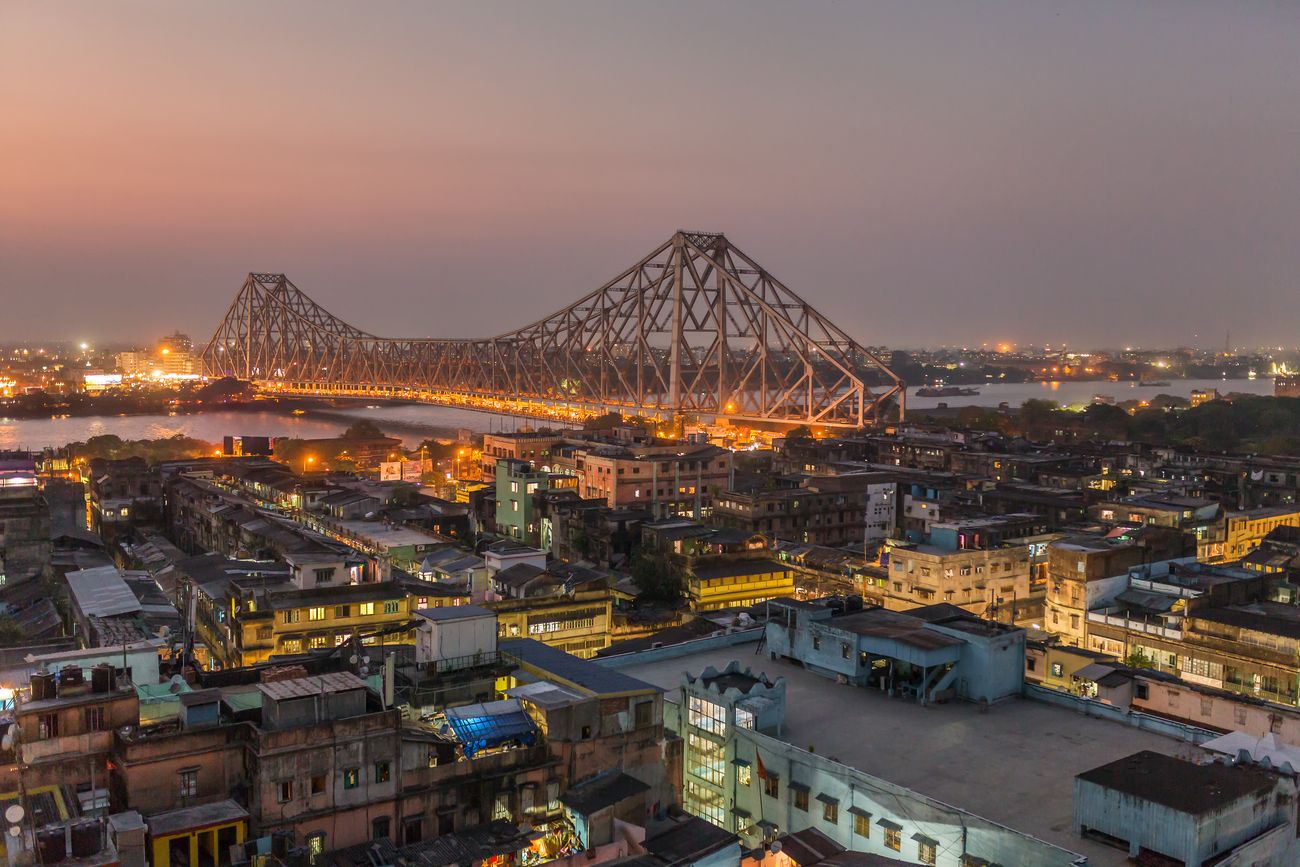
An aerial shot of the Howrah Bridge across River Hooghly at the time of twilight, and the parts of Kolkata that surround it © Mazur Travel
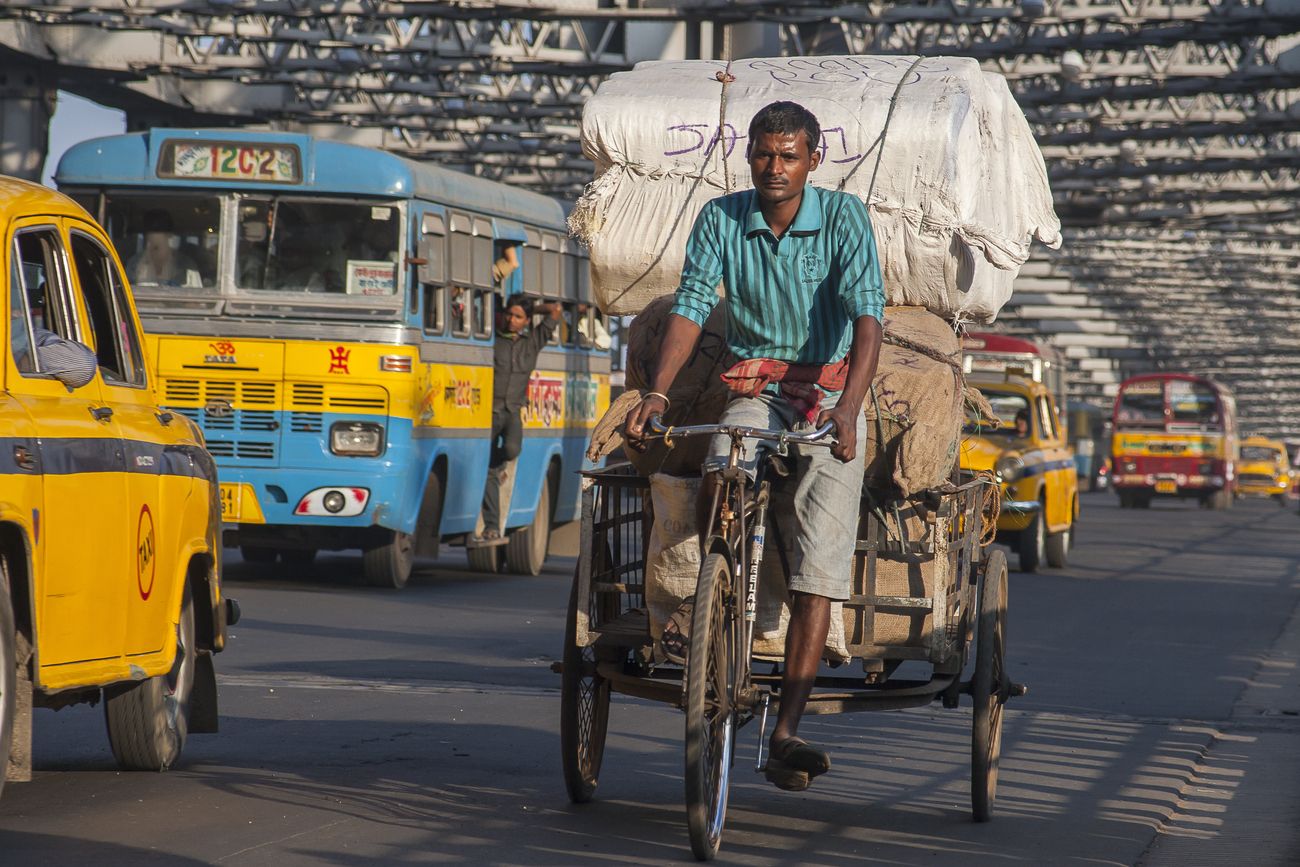
Traffic on the landmark Howrah Bridge with a rickshaw-puller, taxis, and public transportation bus © NOWAK LUKASZ

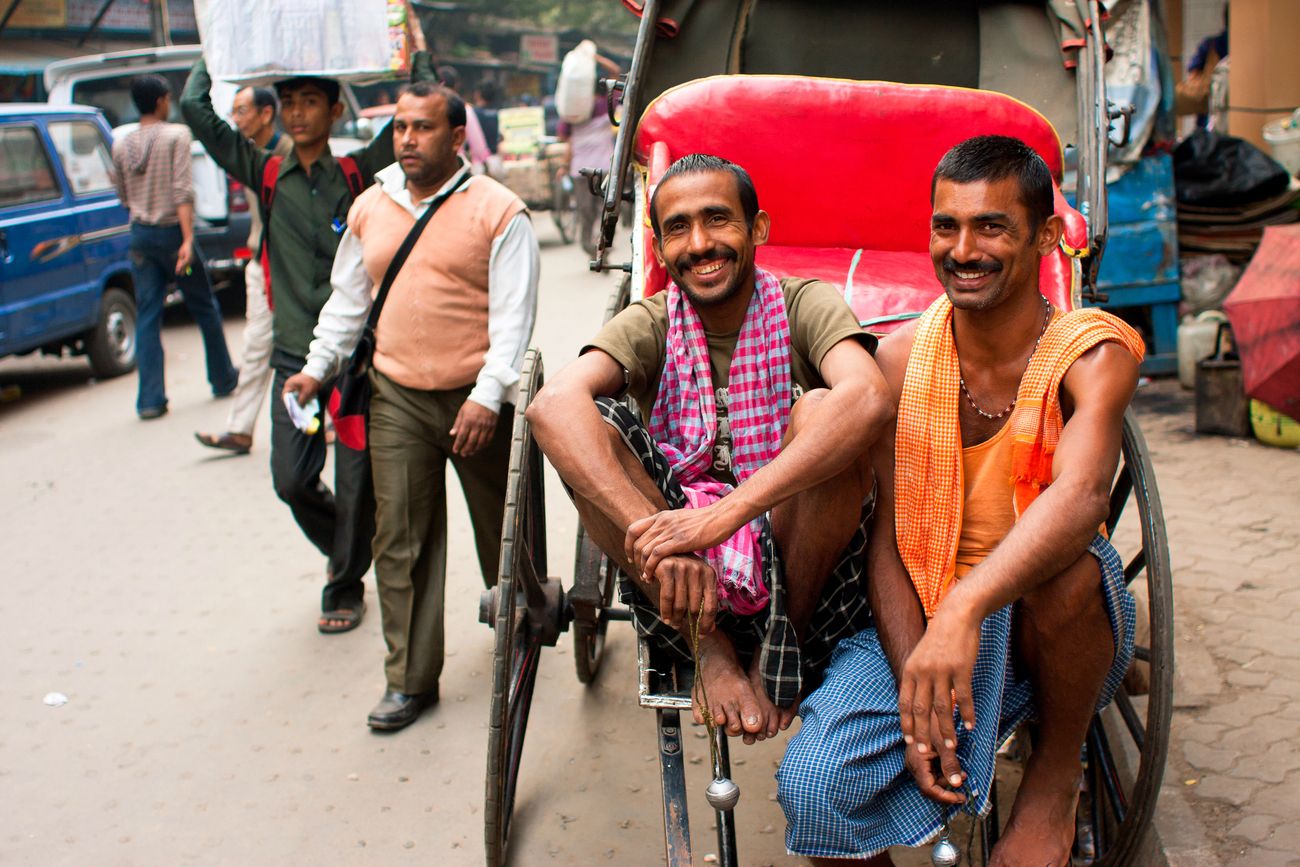
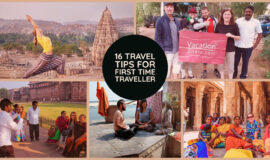
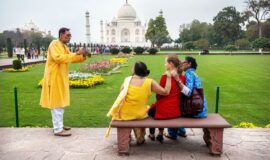
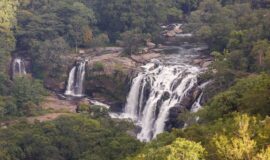
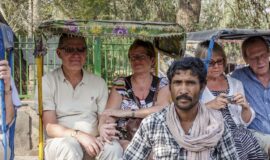
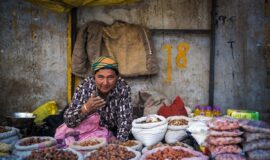
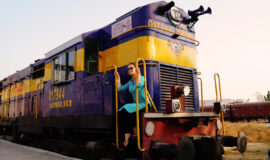
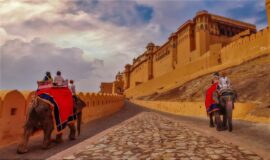
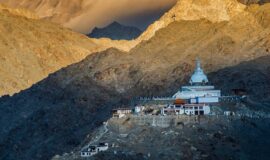
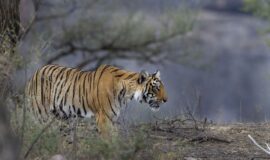
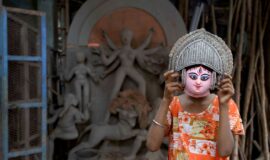
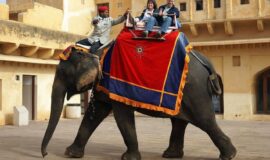
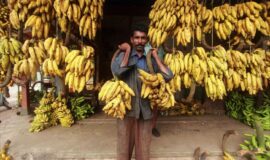
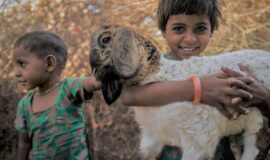
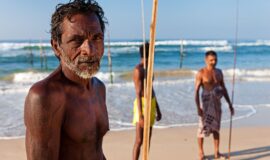
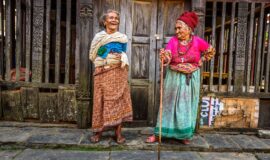
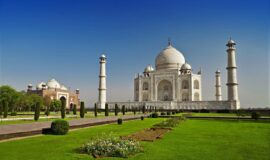
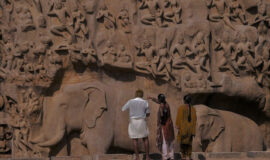
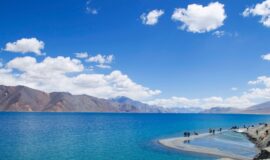

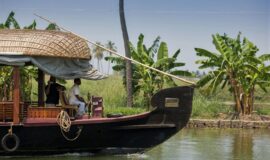
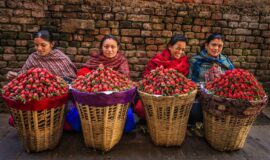
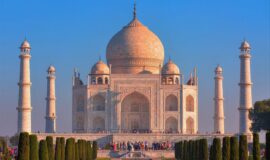
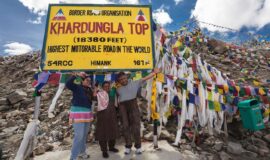
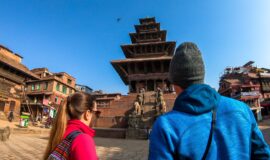
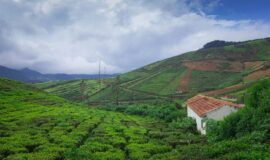
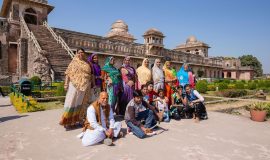
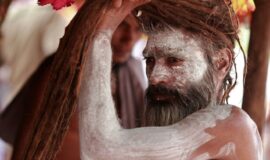
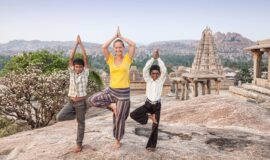
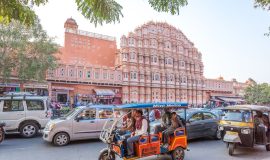
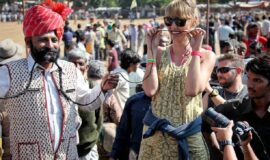
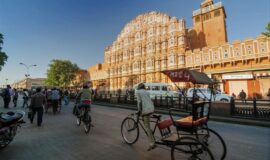
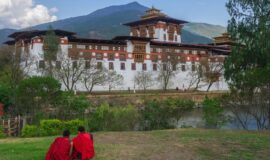
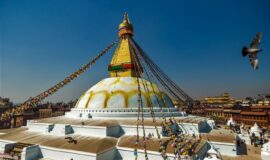
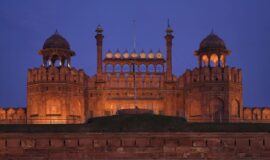
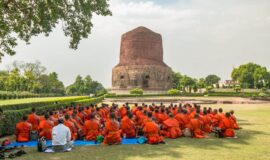
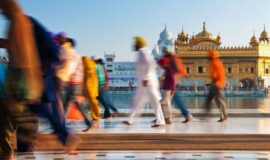
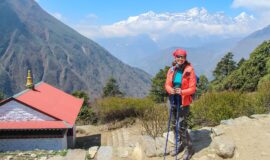
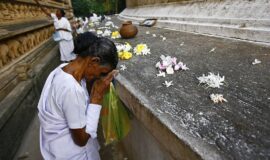
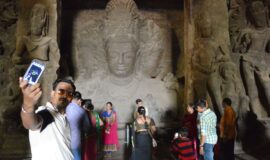
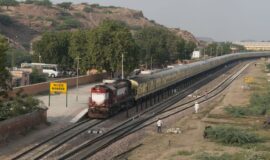
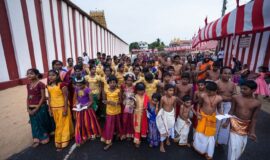
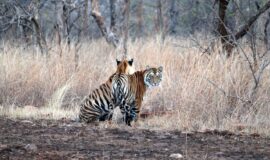
![Golden Triangle Tour with Goa [Culture + Beach Vacation] (12 days) Golden Triangle Tour with Goa [Culture + Beach Vacation] (12 days)](https://www.vacationindia.com/wp-content/uploads/2022/06/golden-triangle-tour-with-beach-vacation-270x160.jpg)

